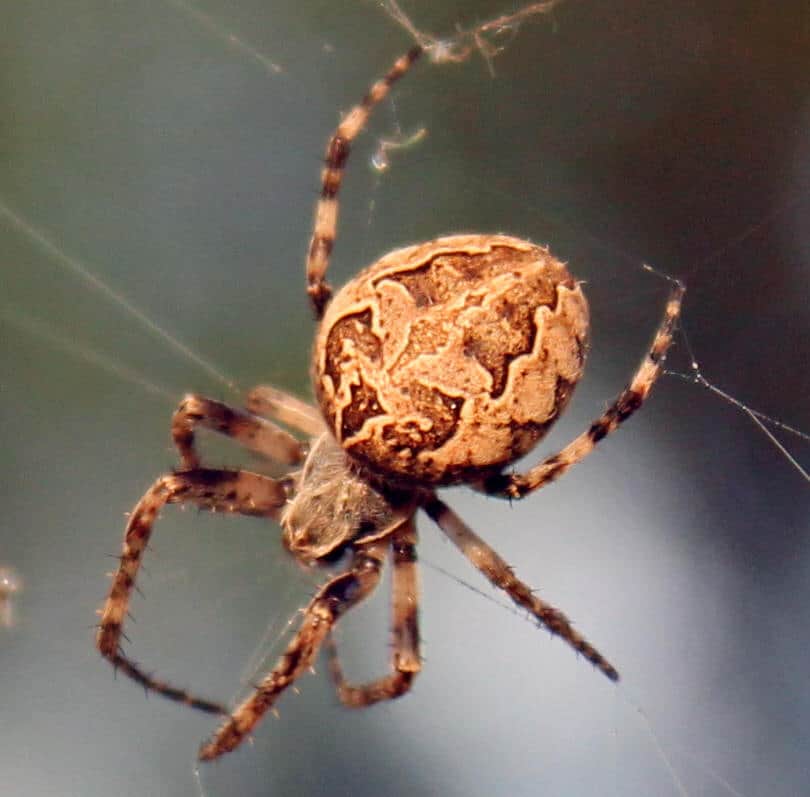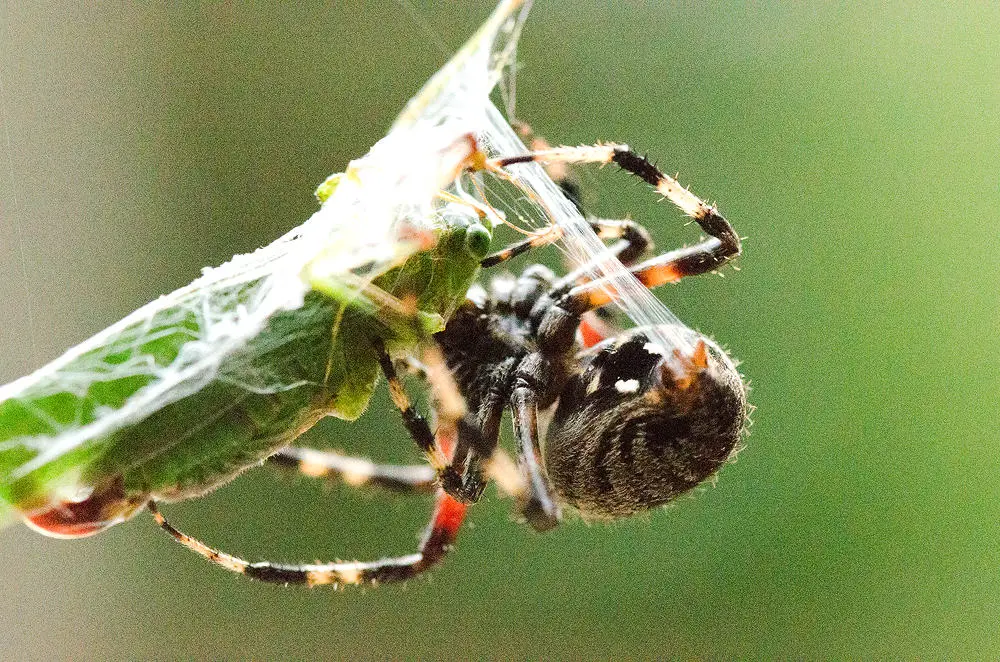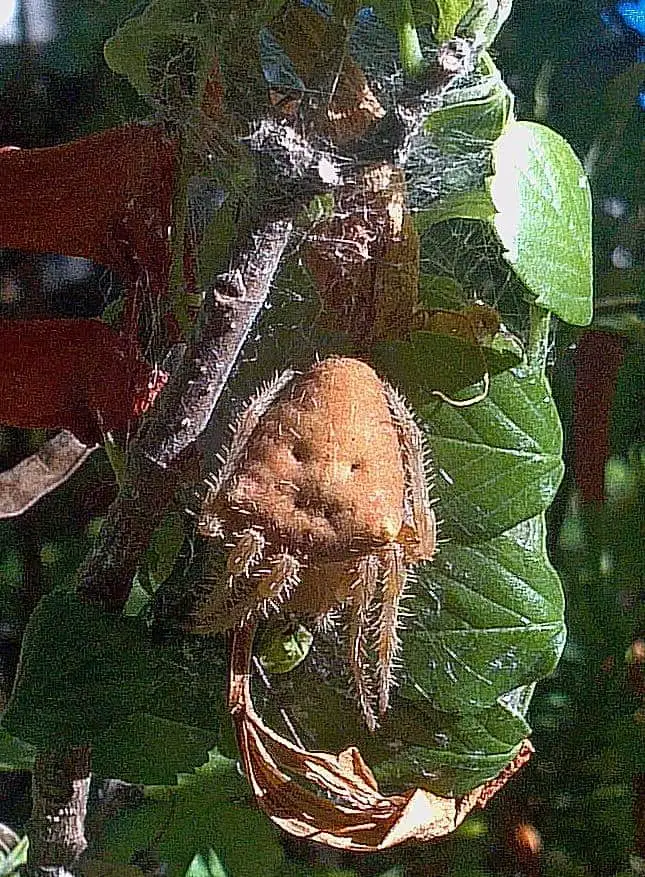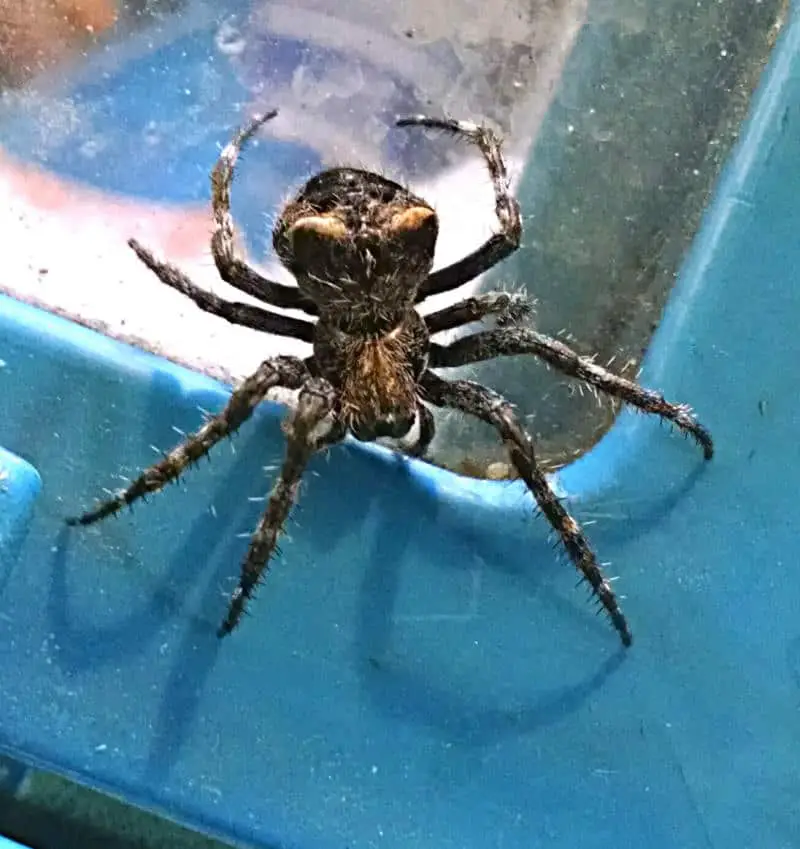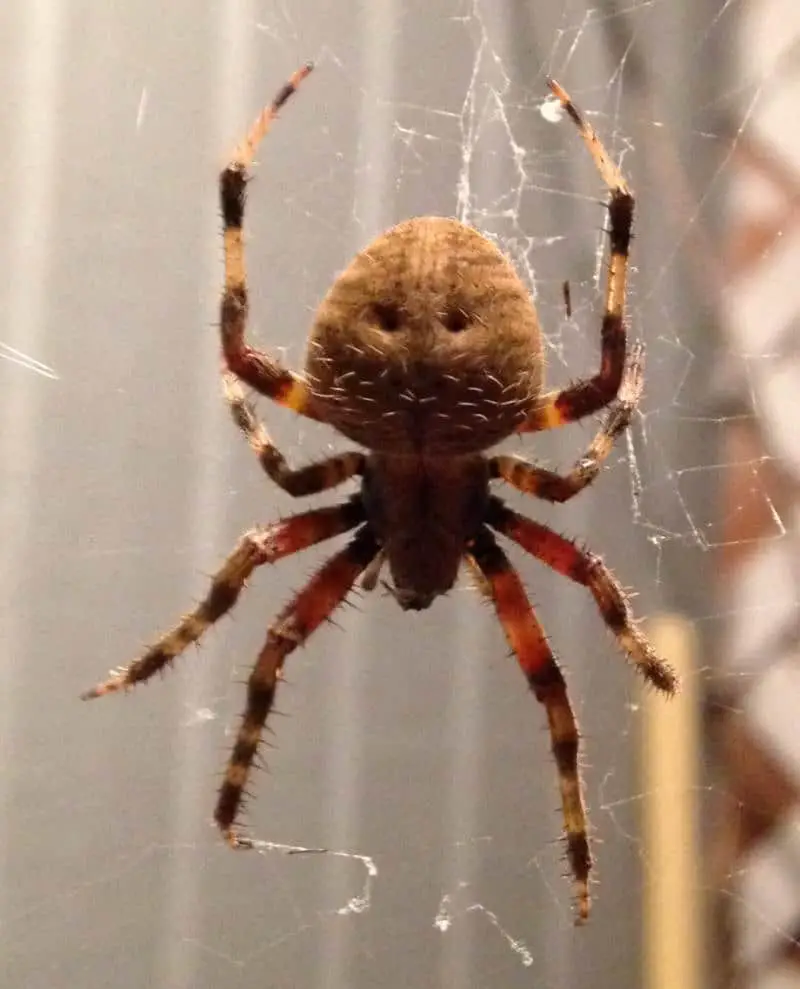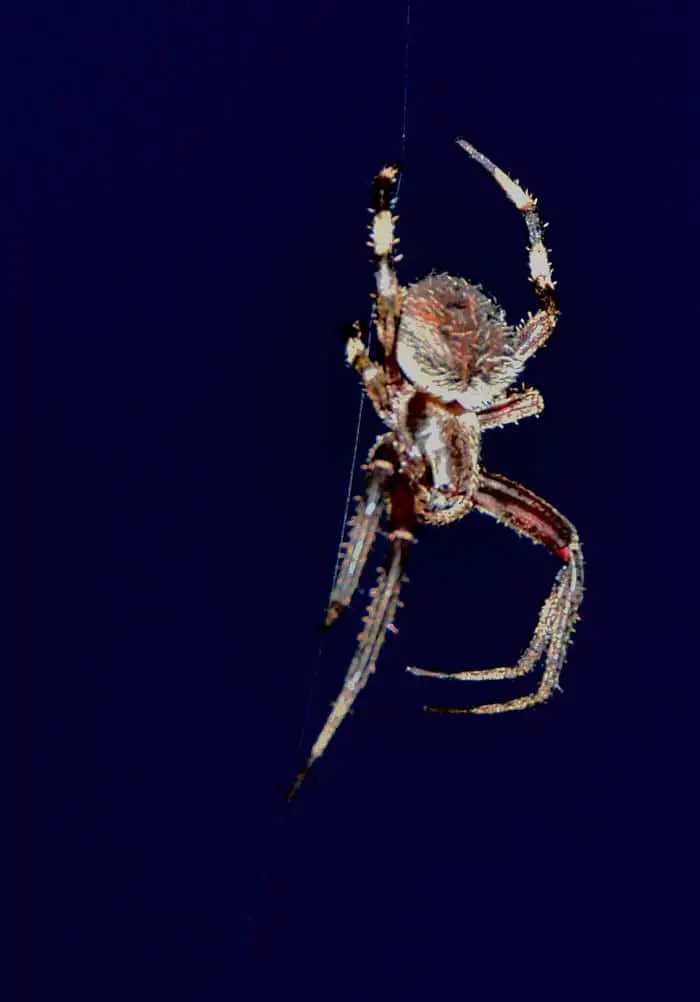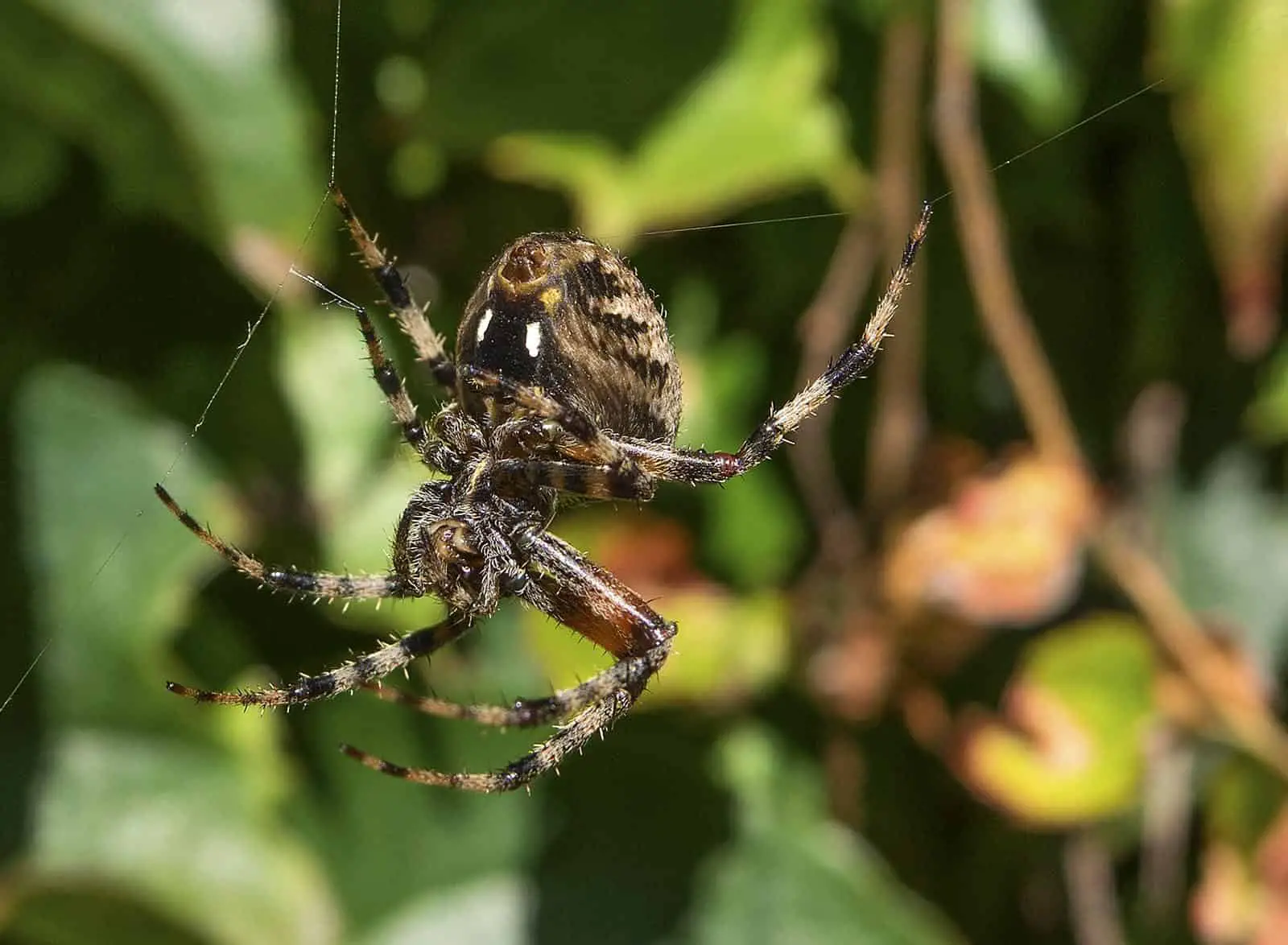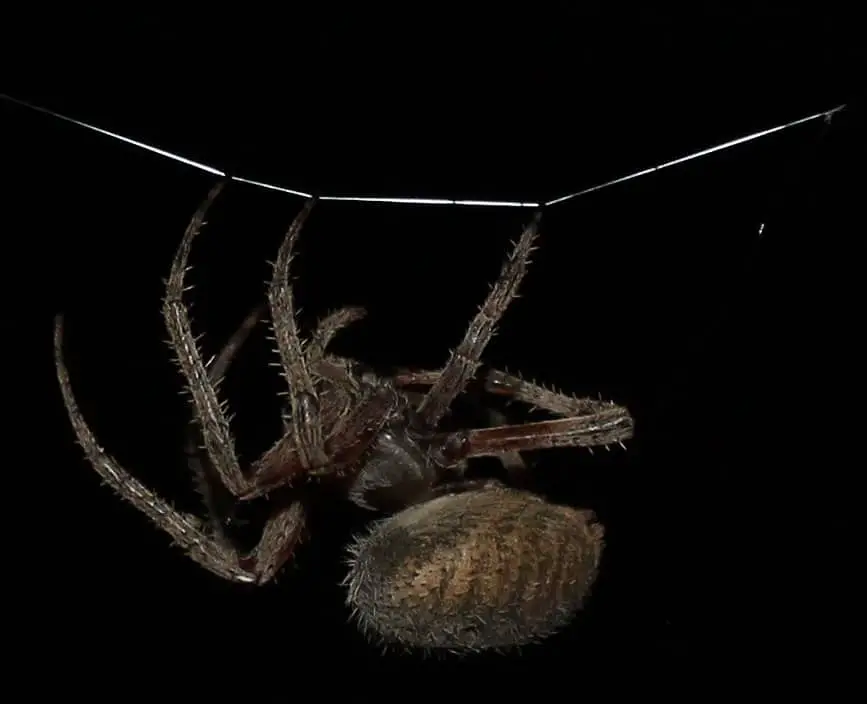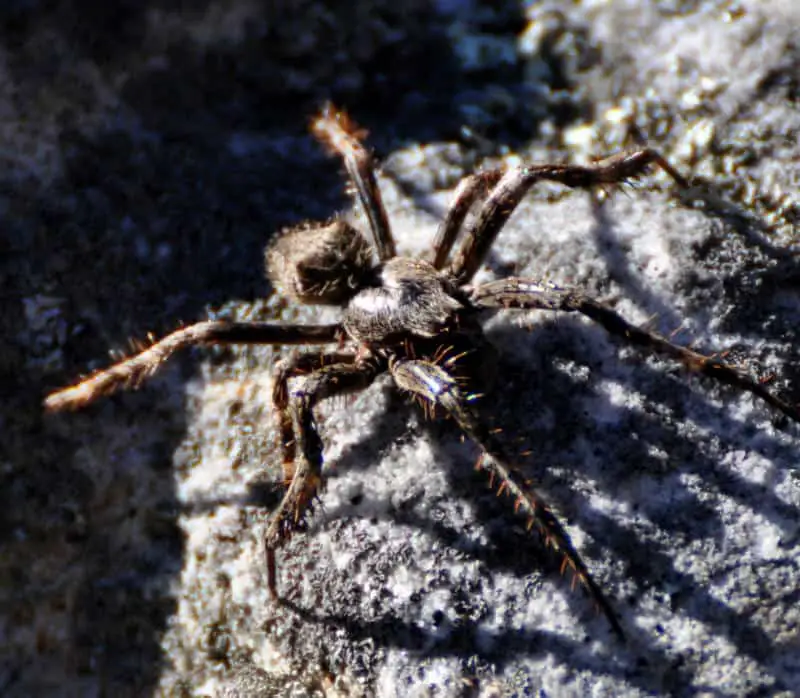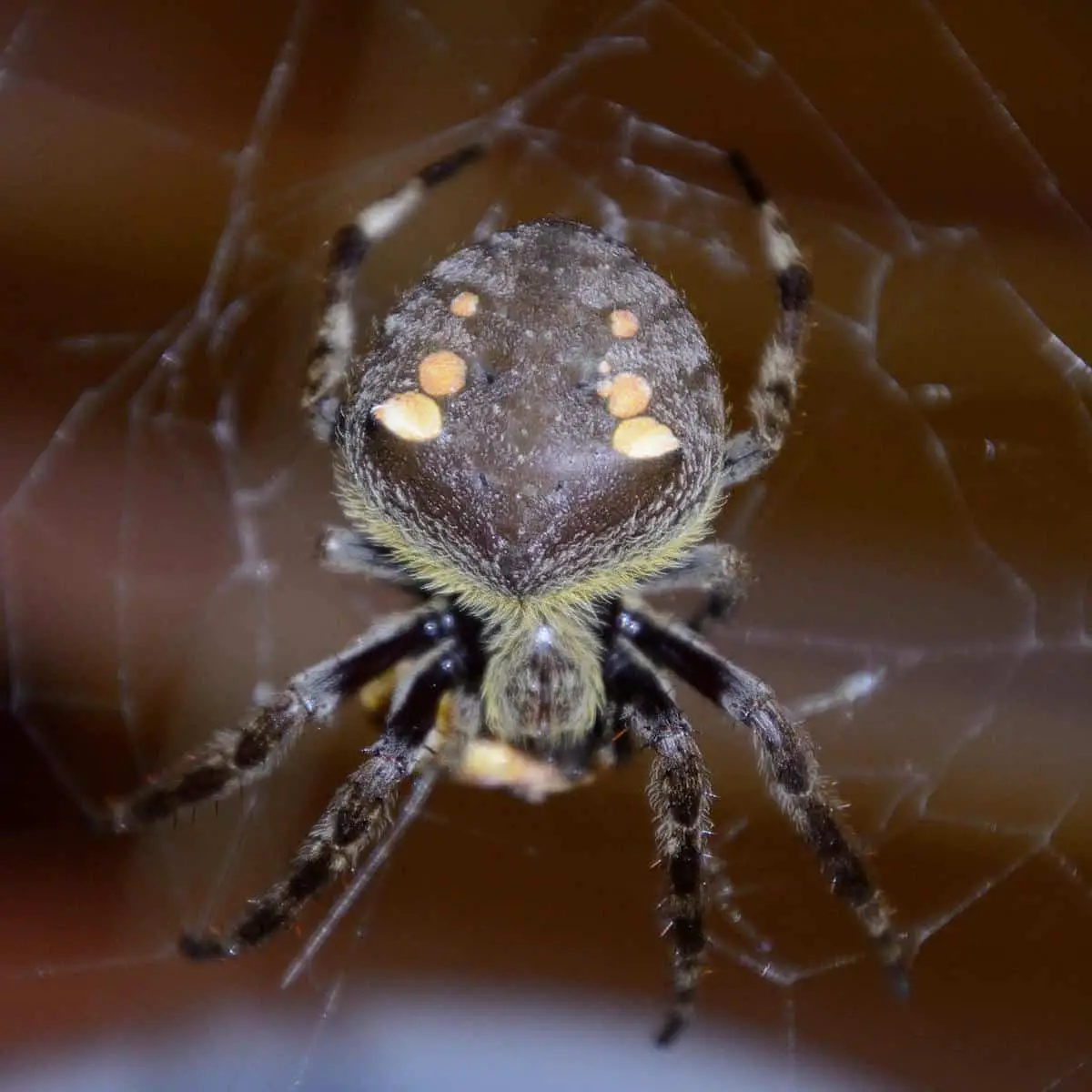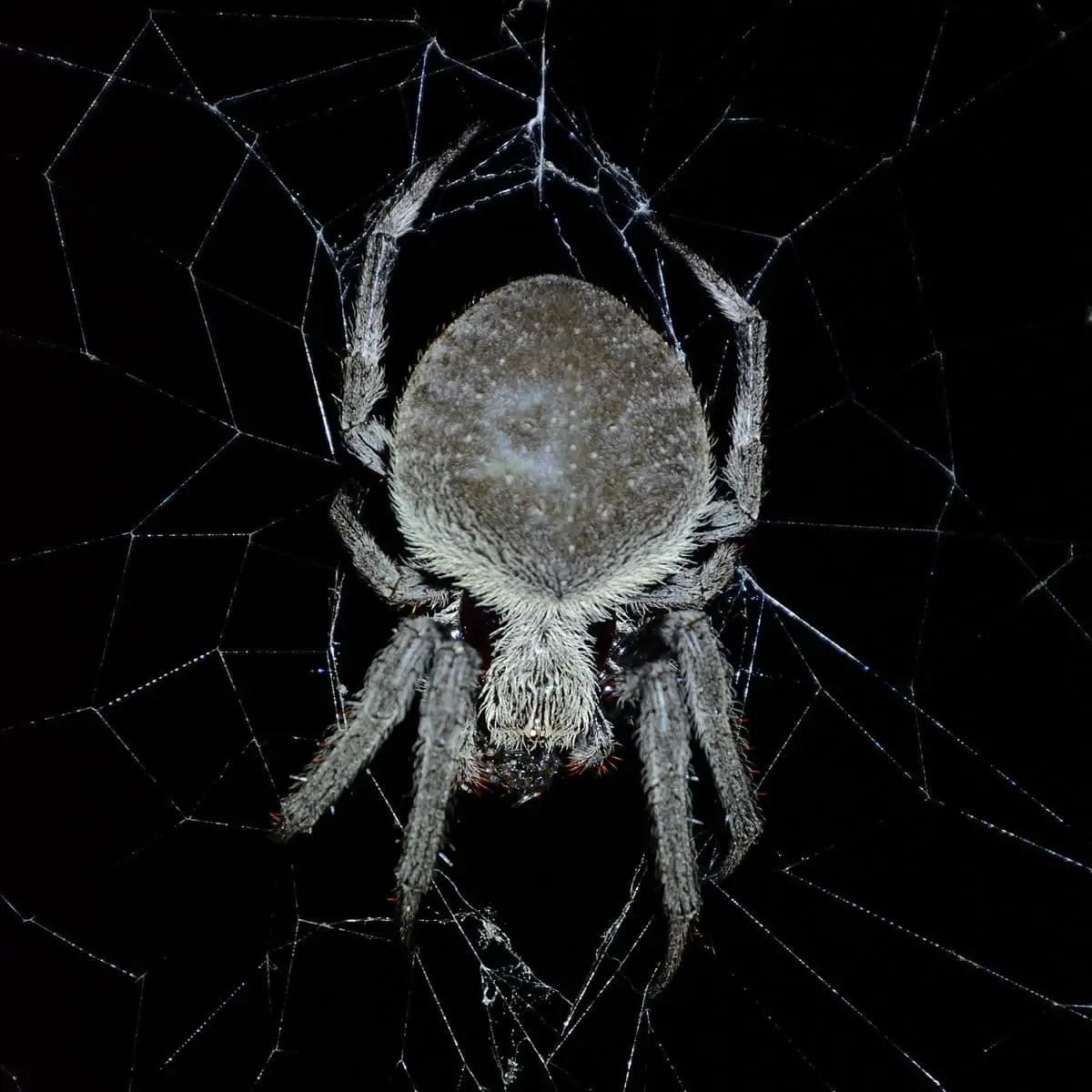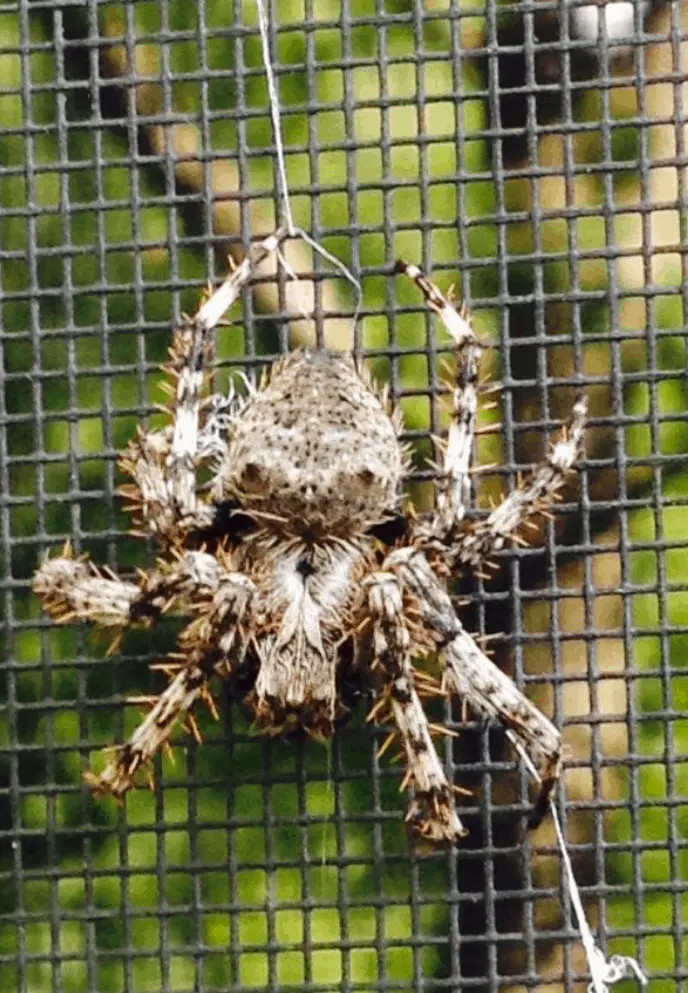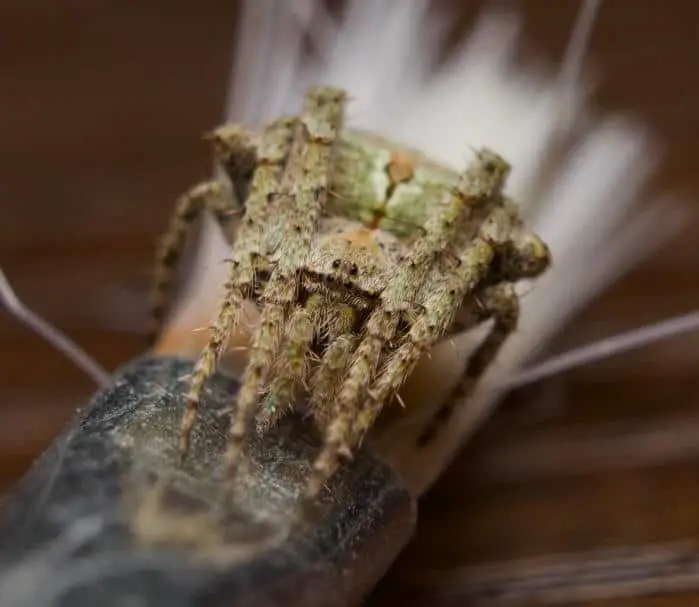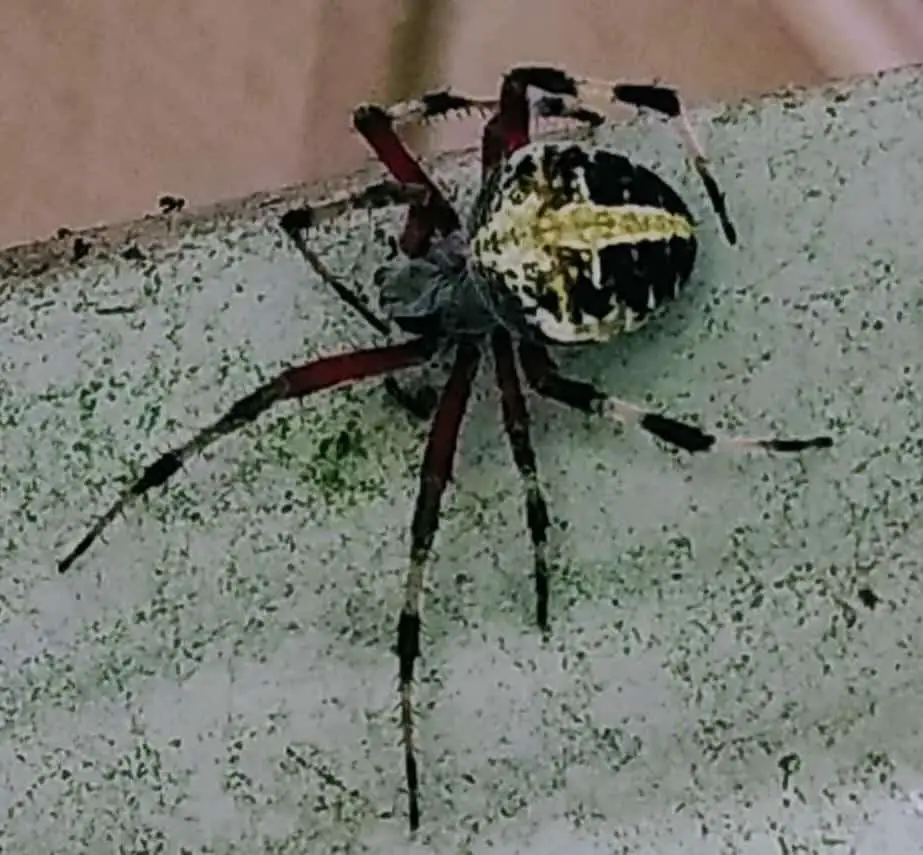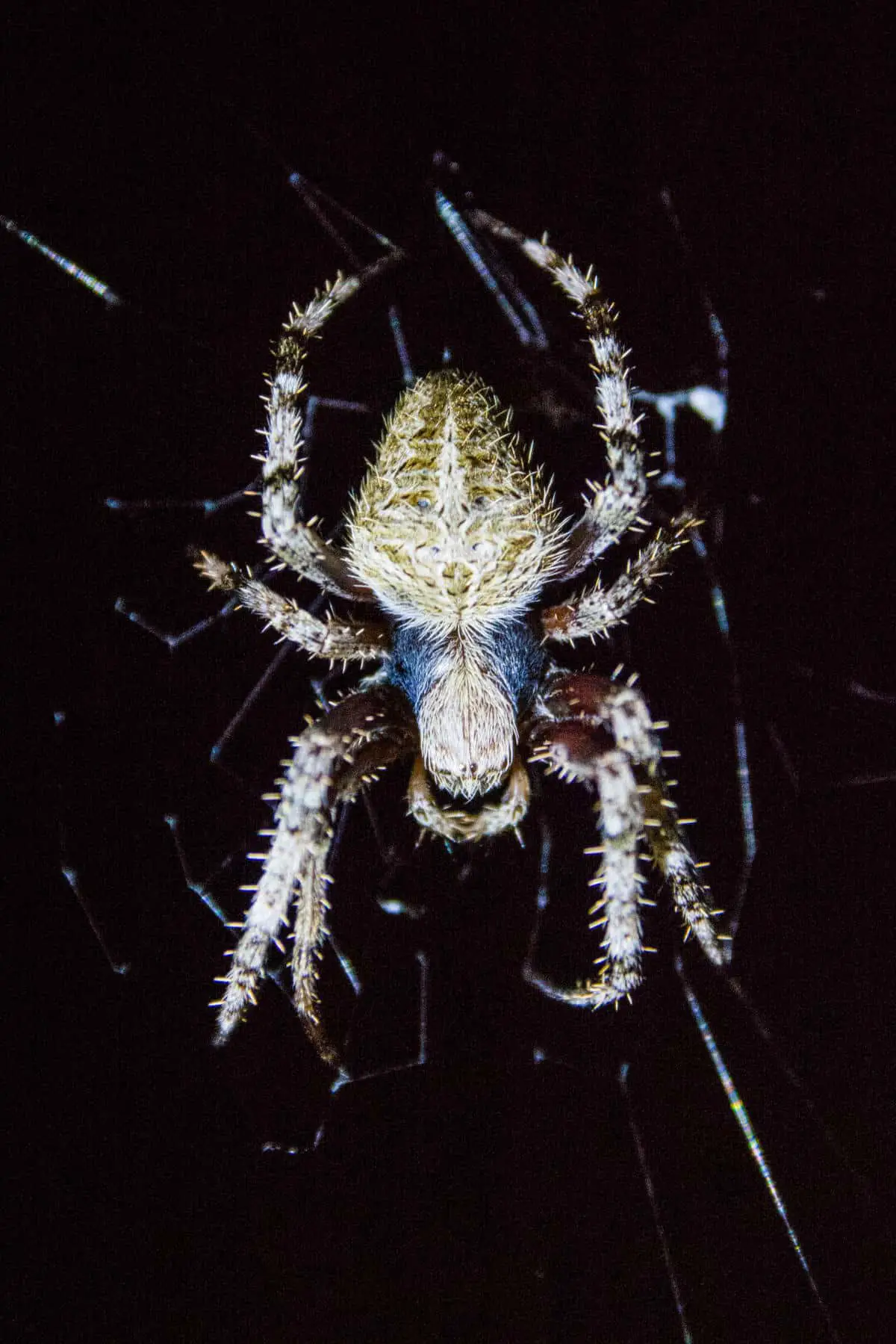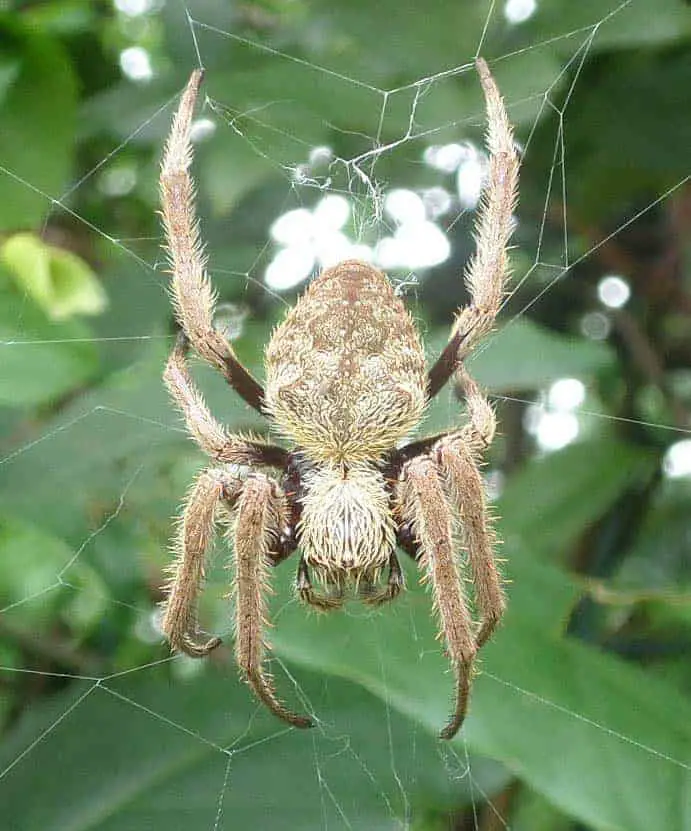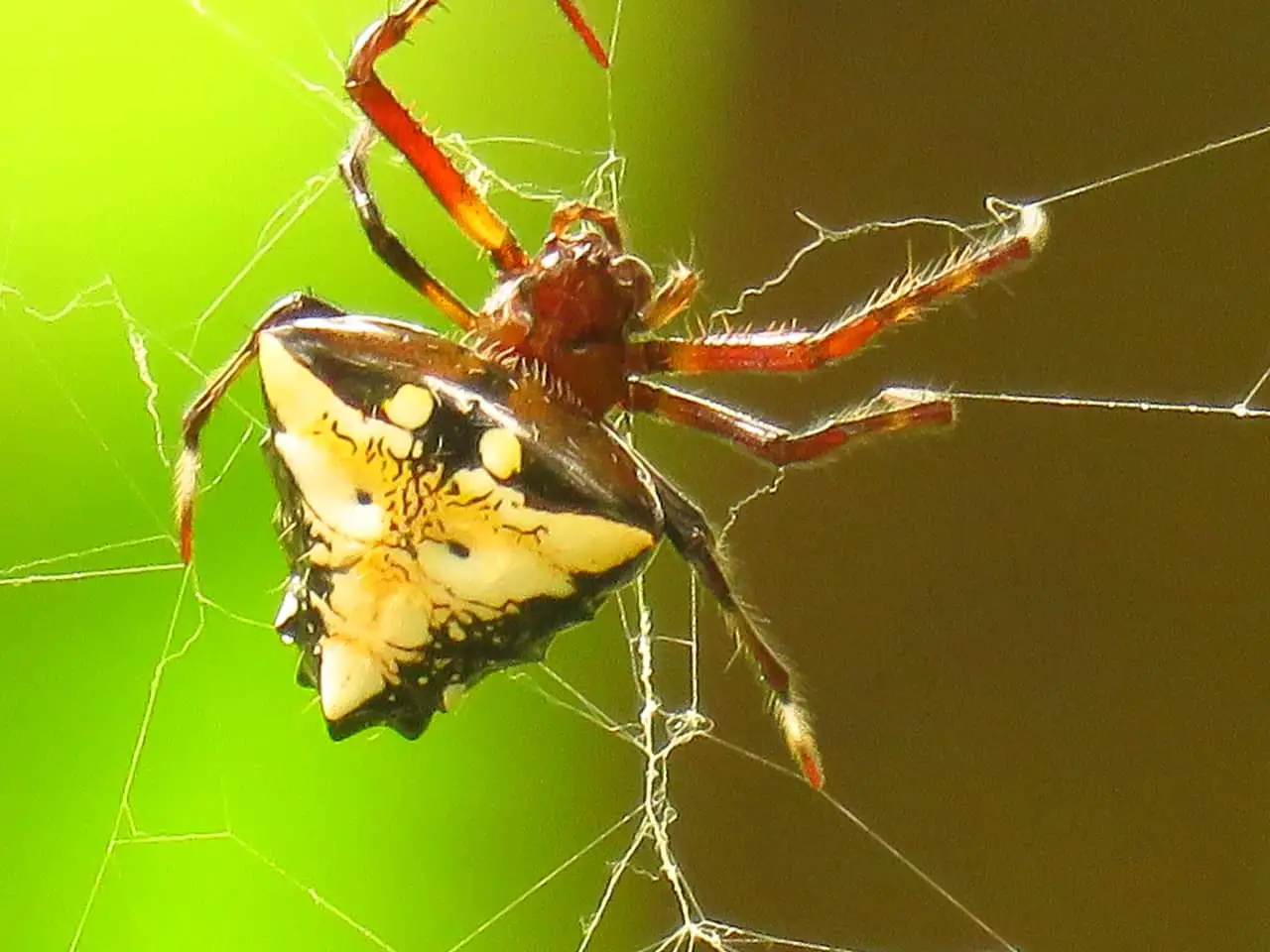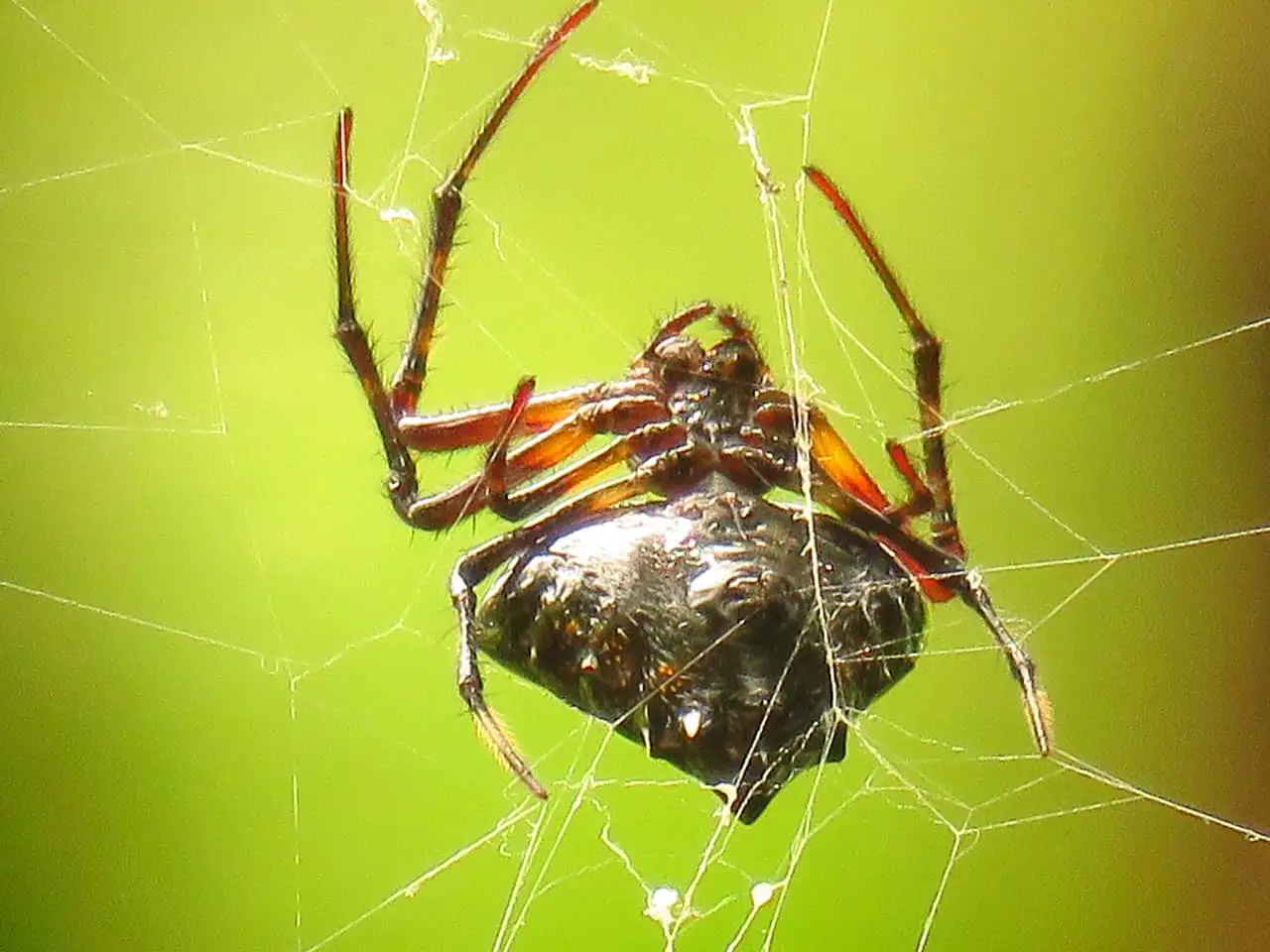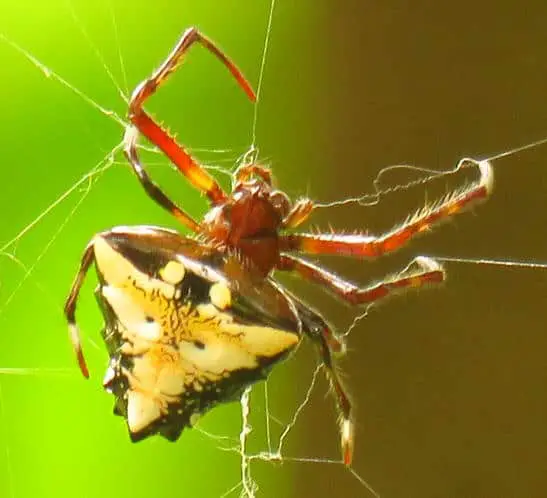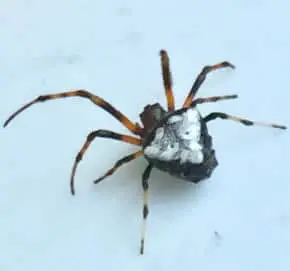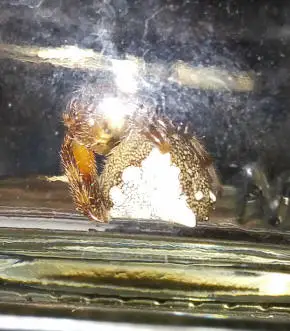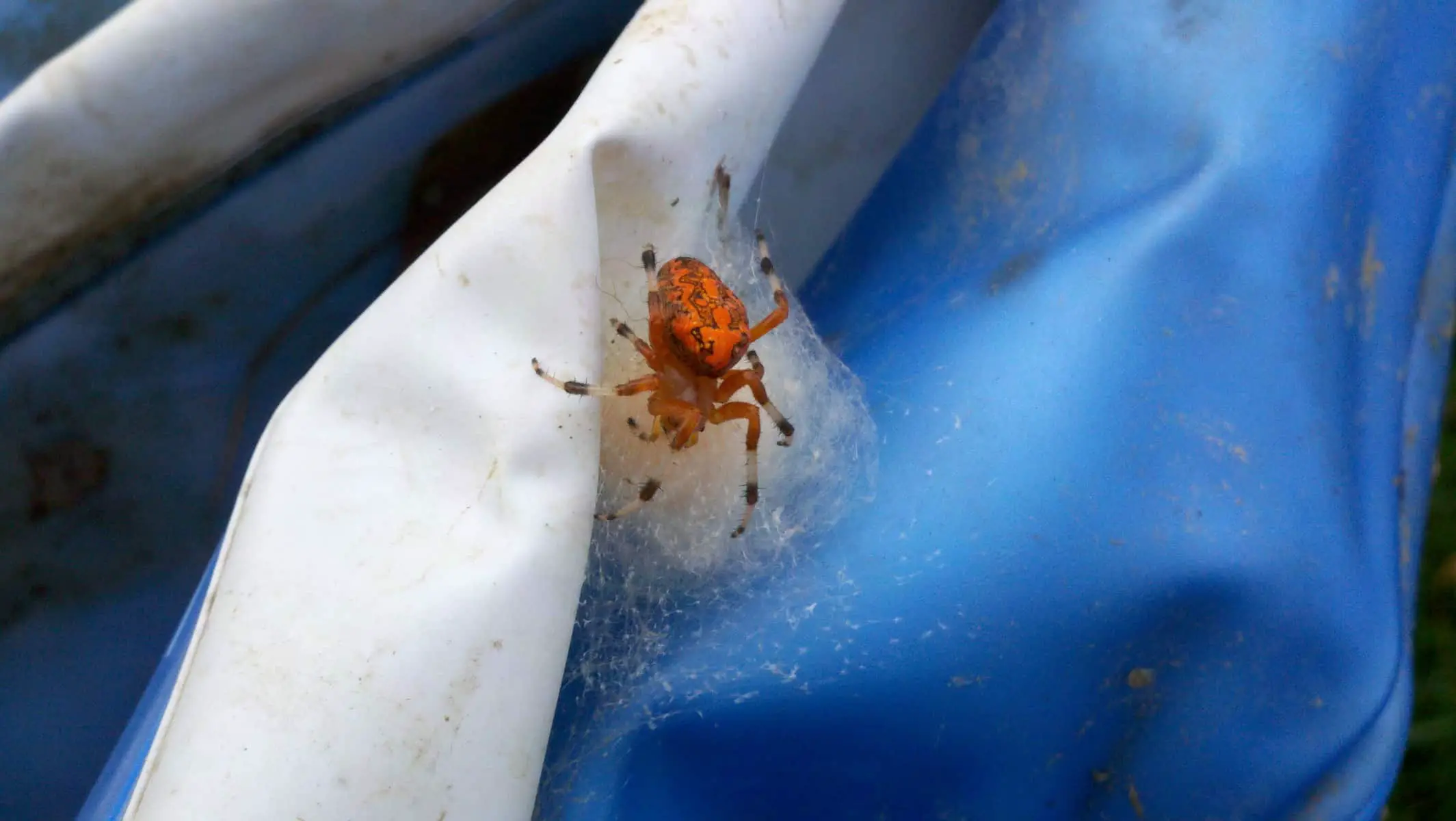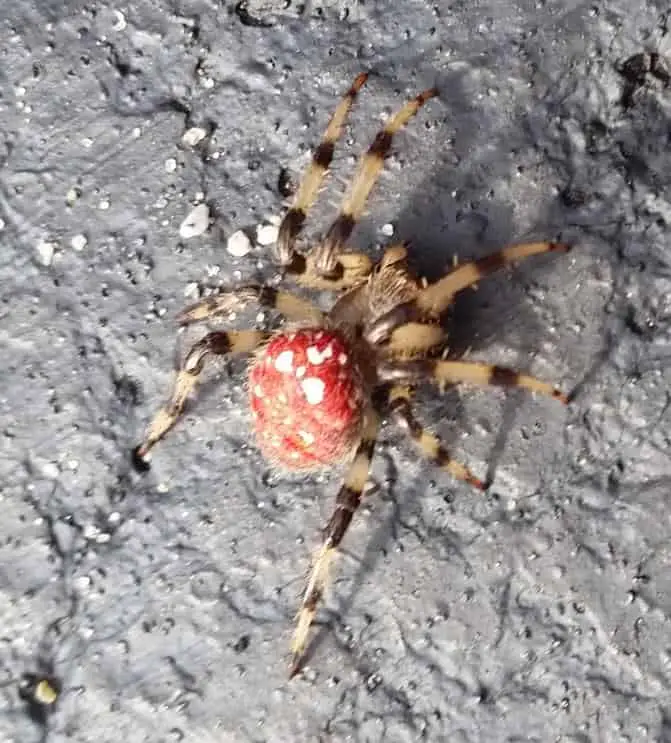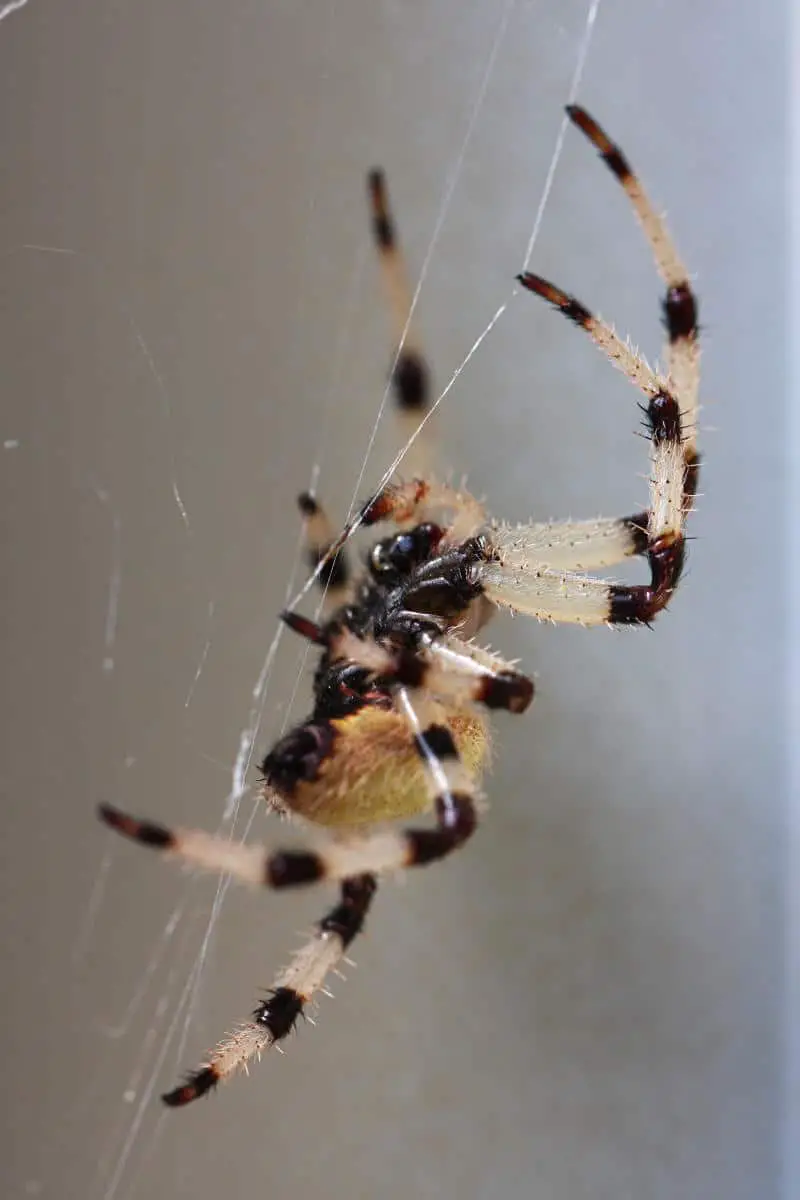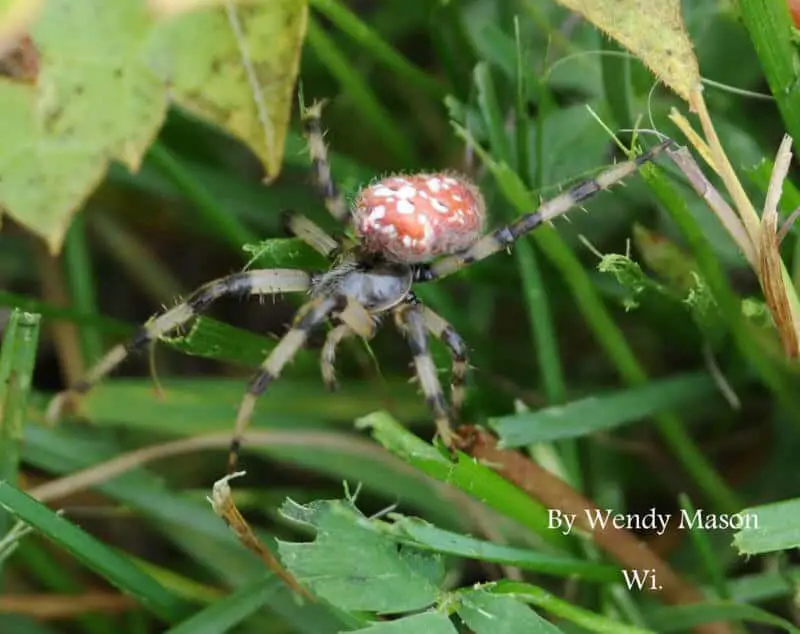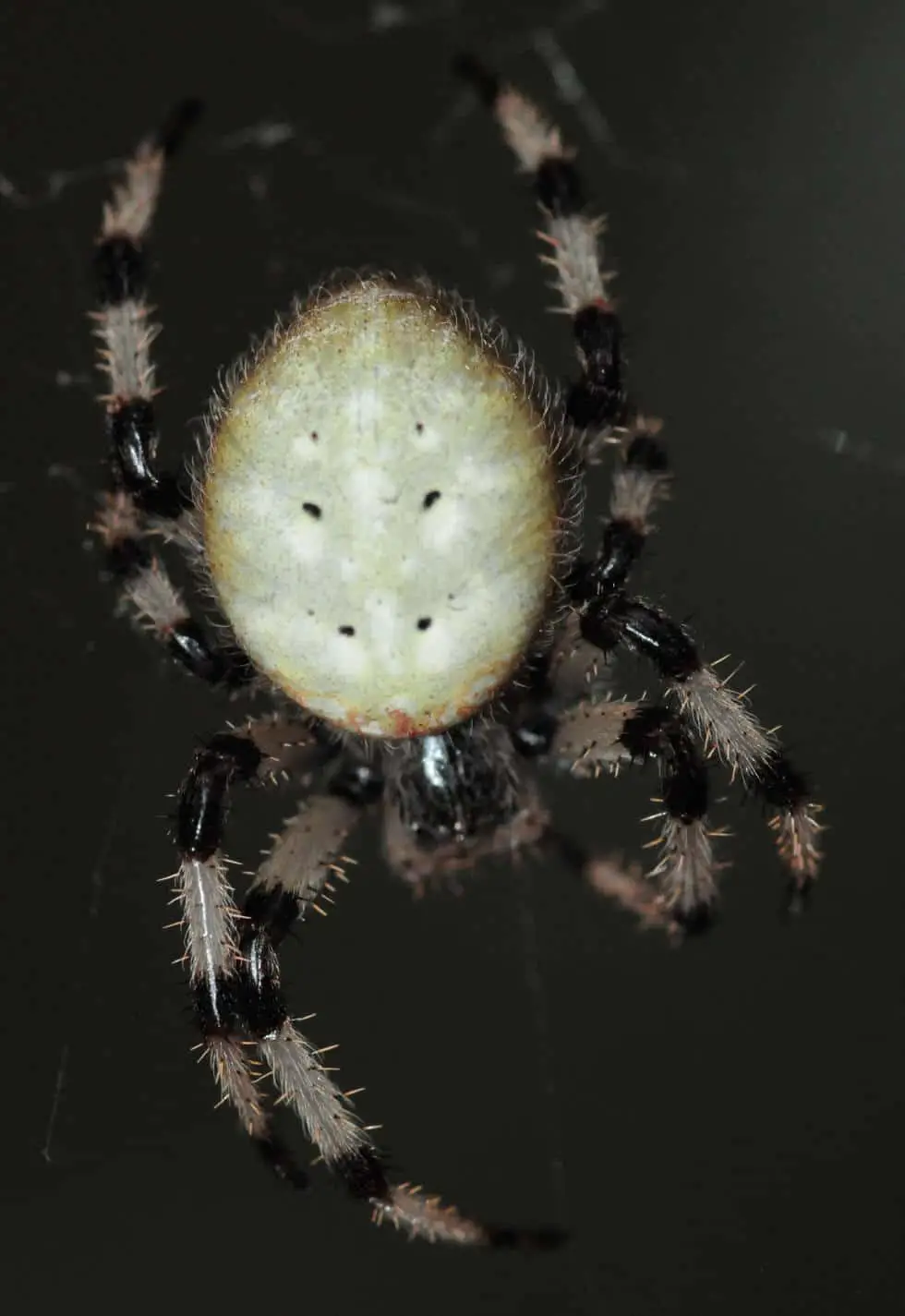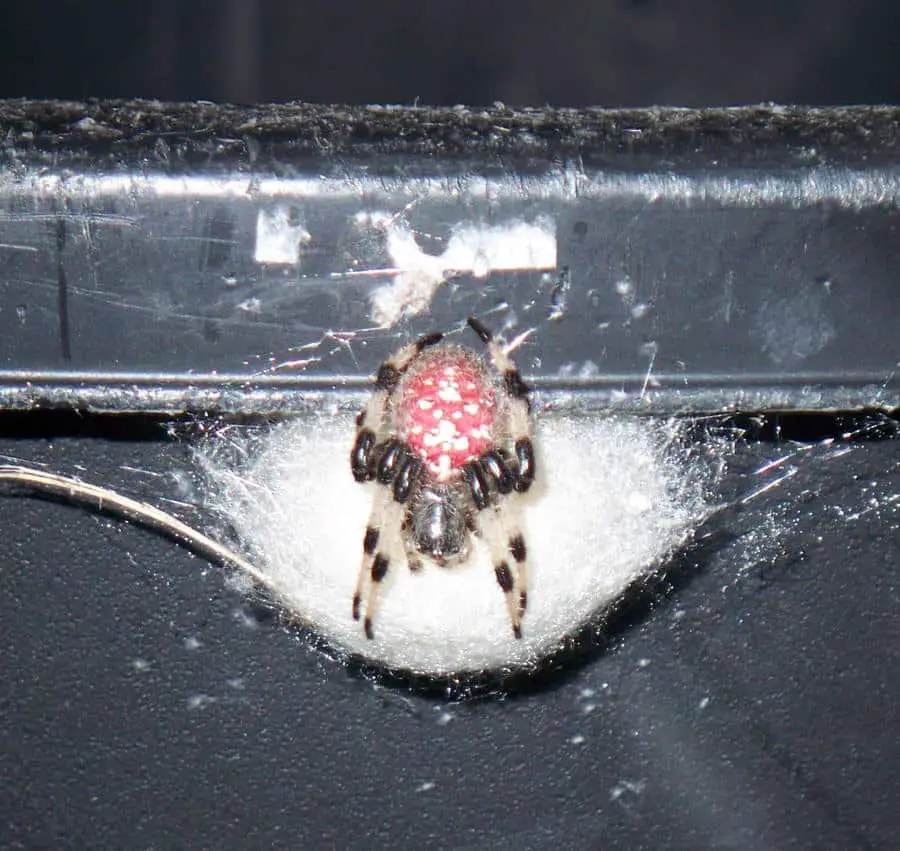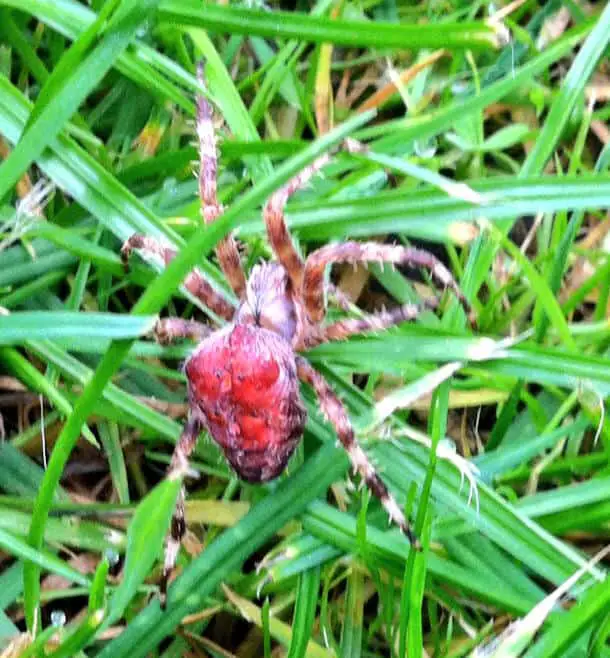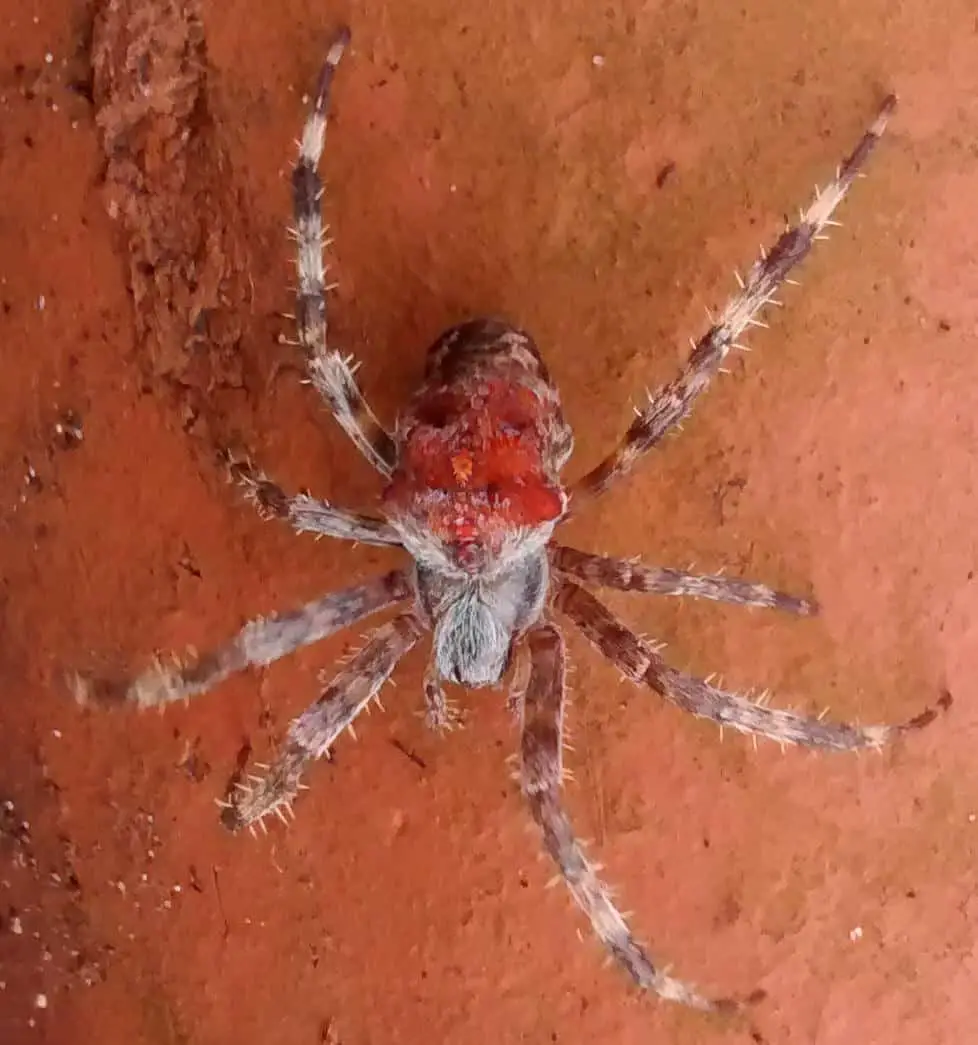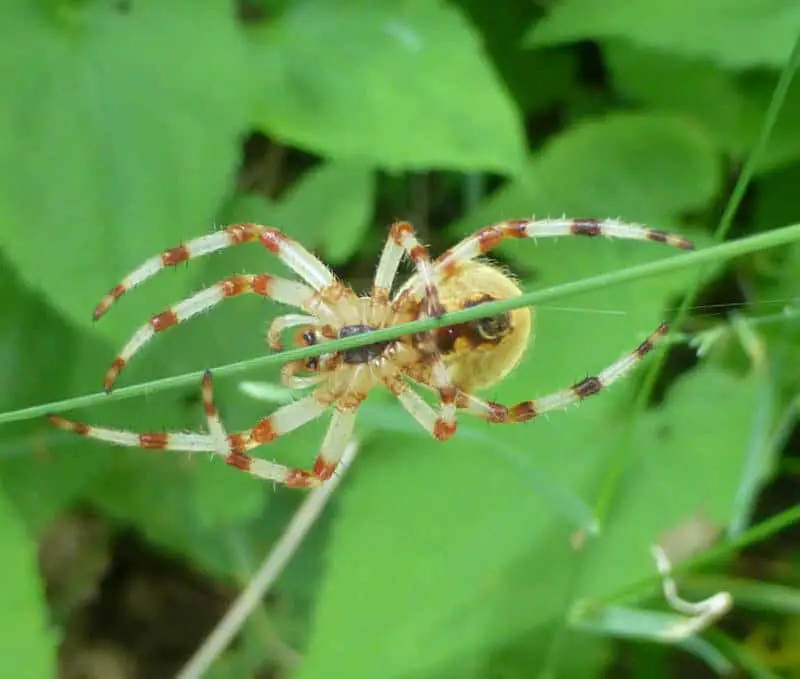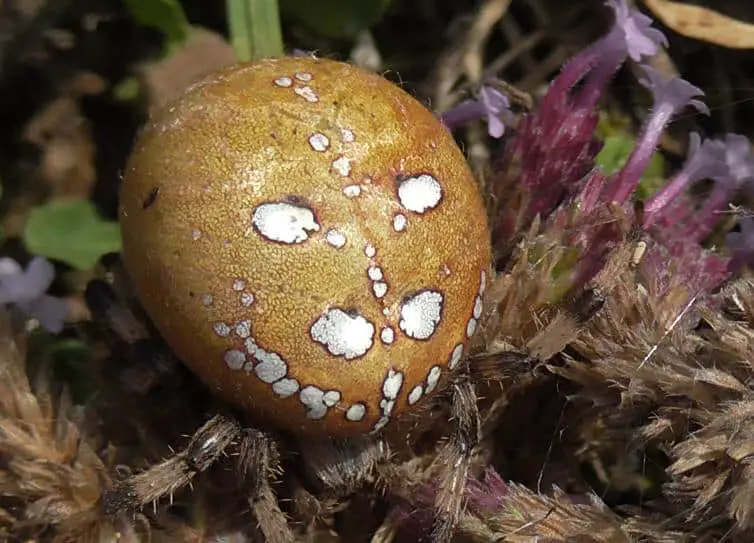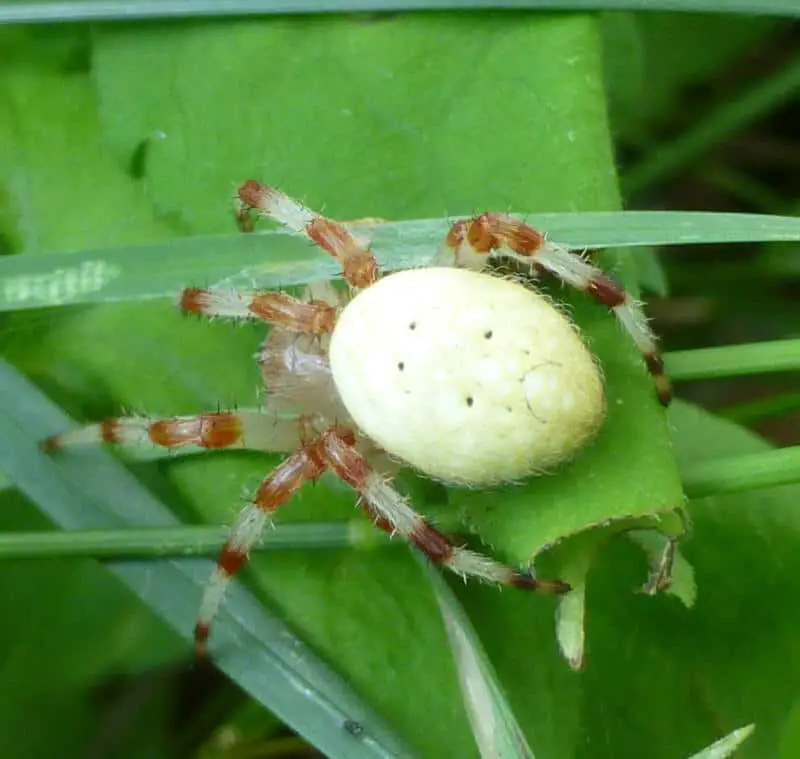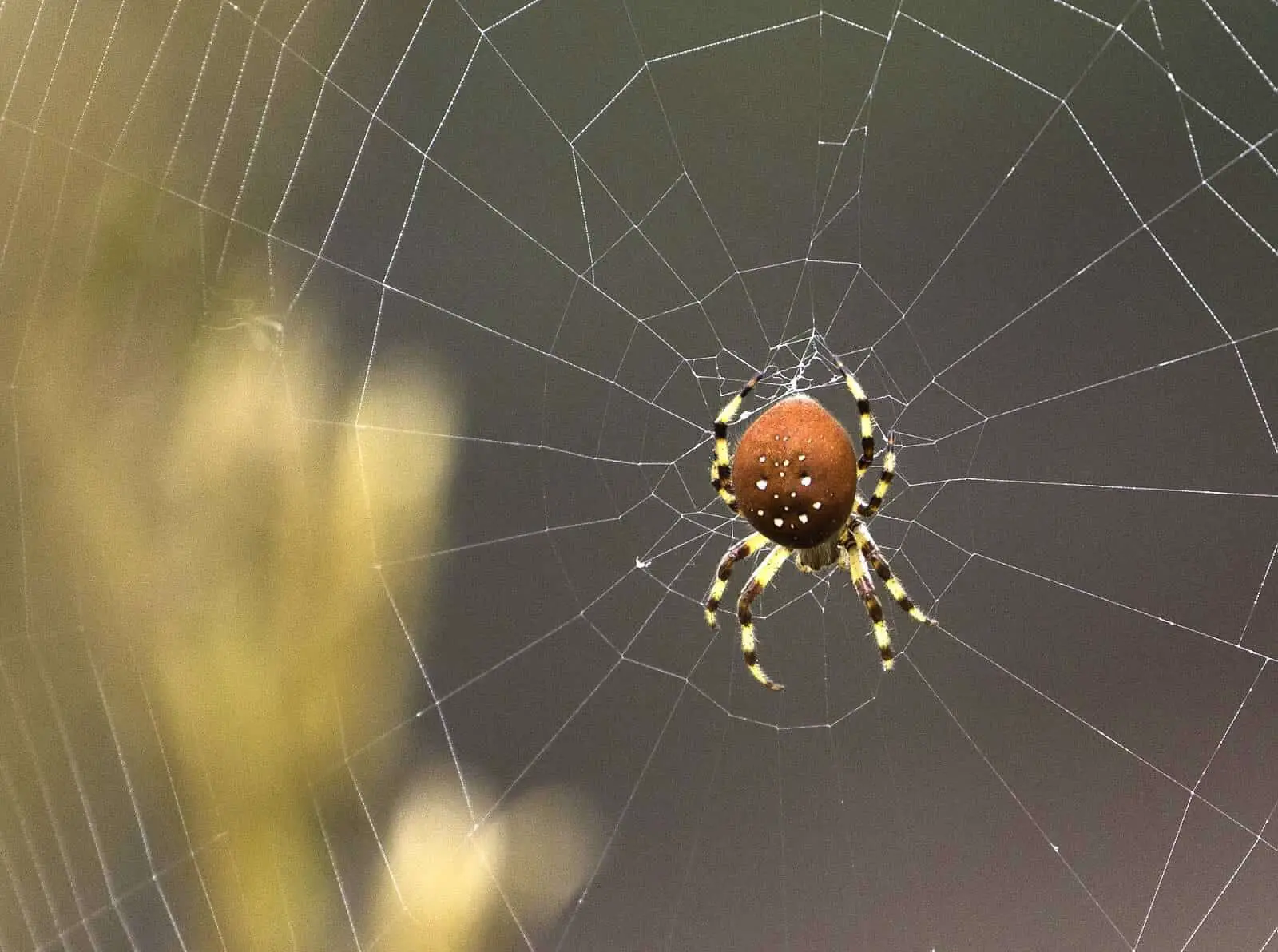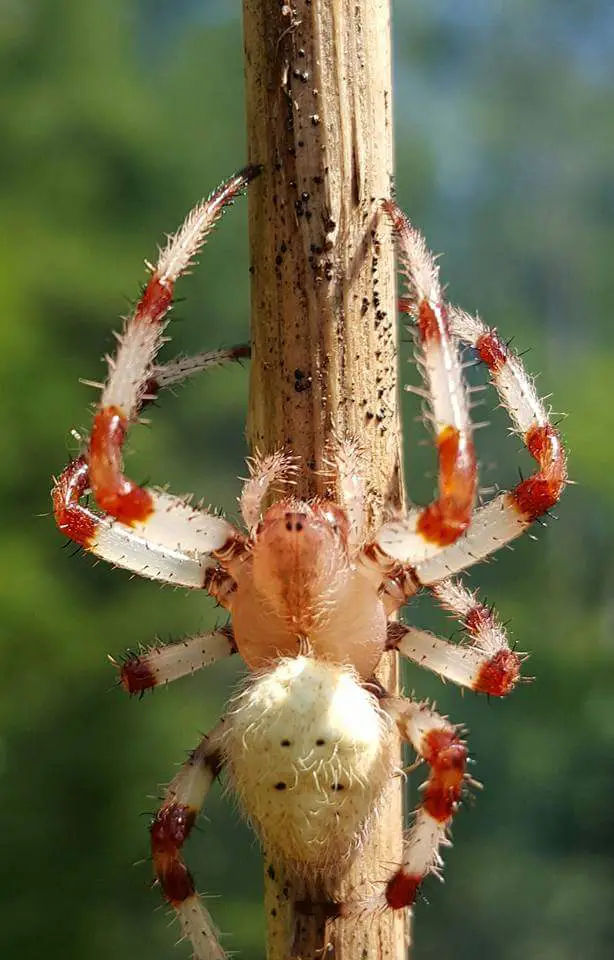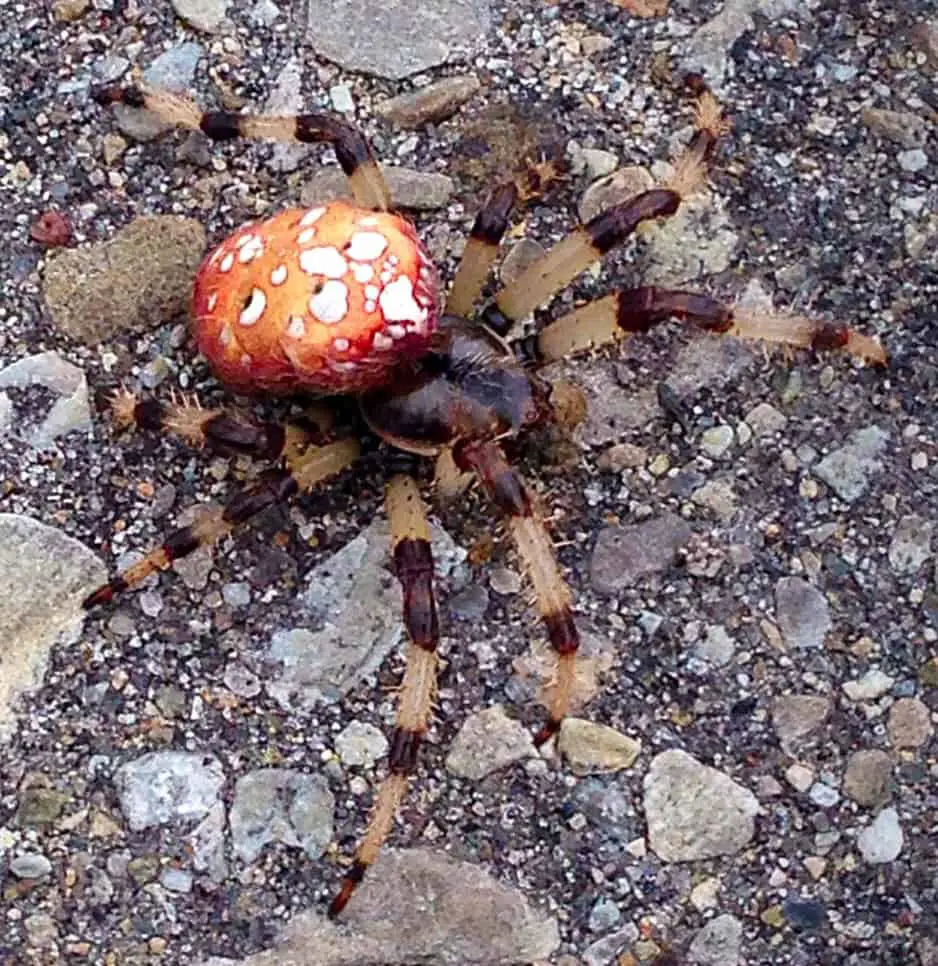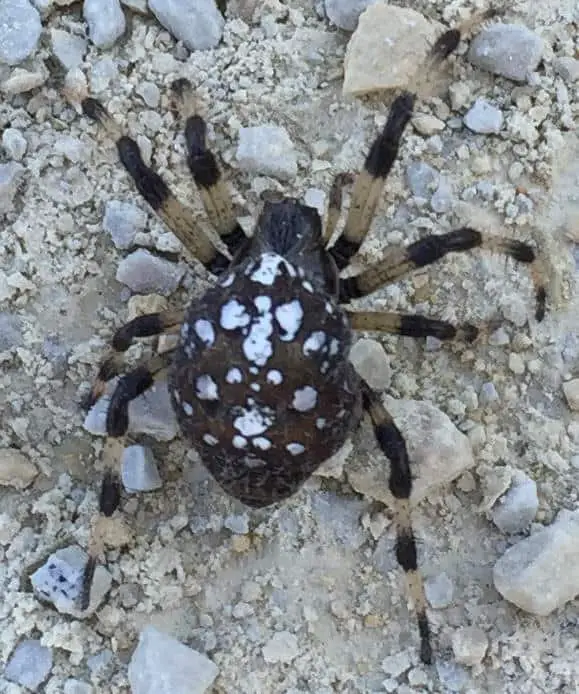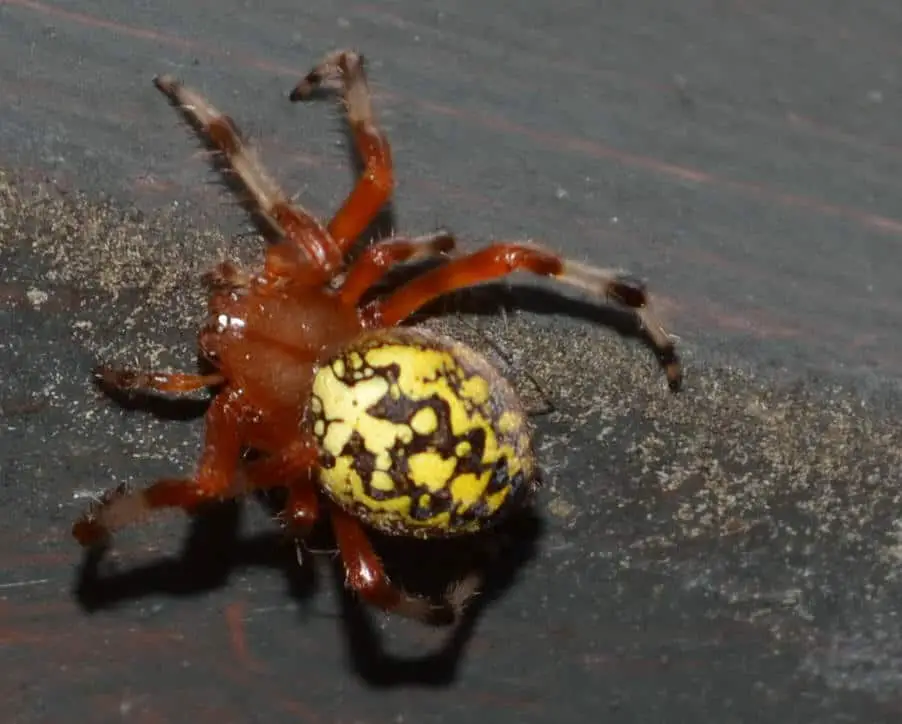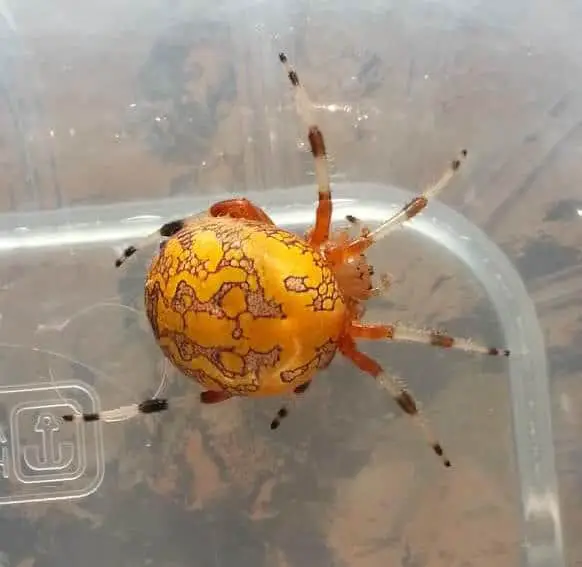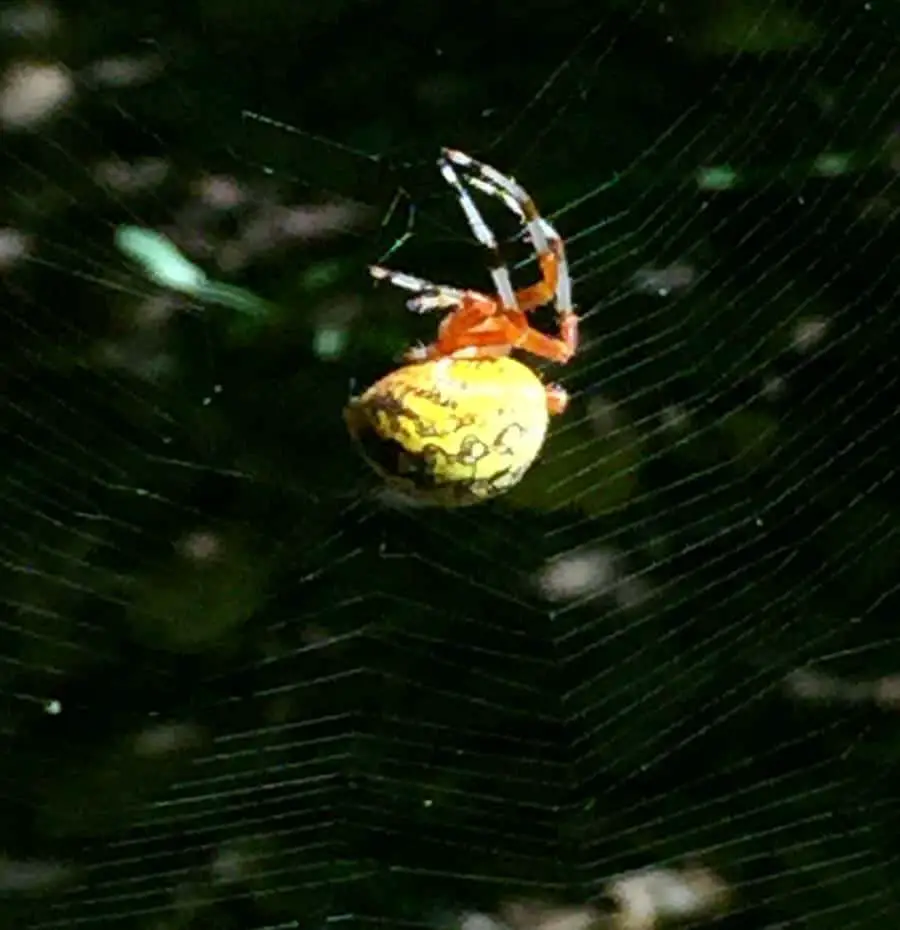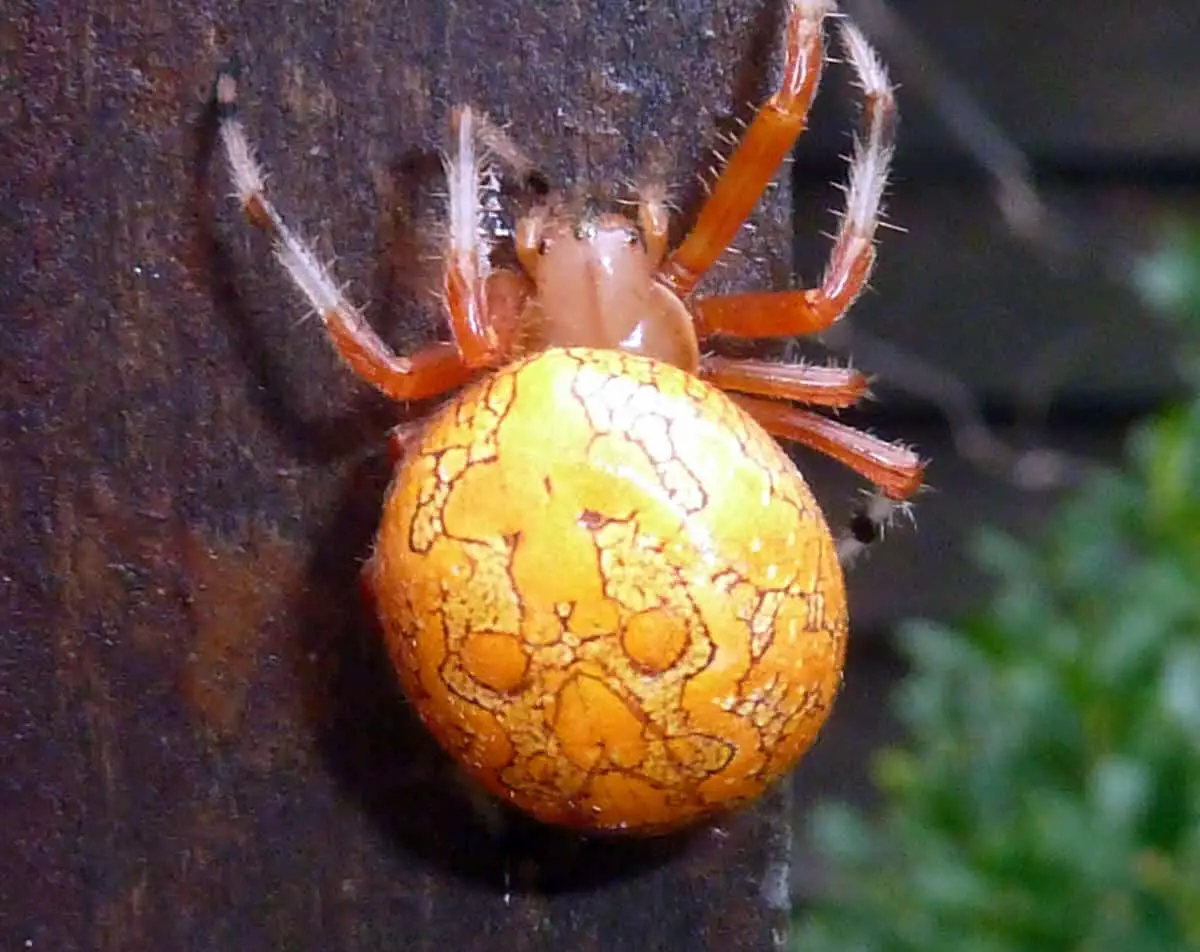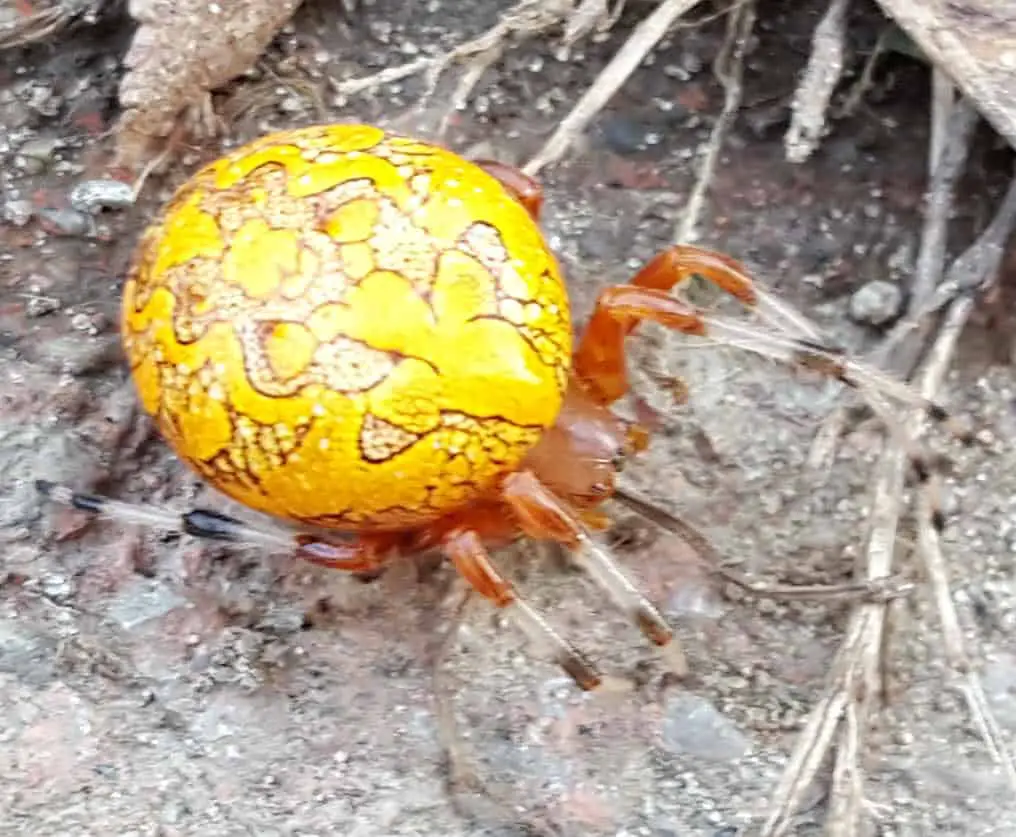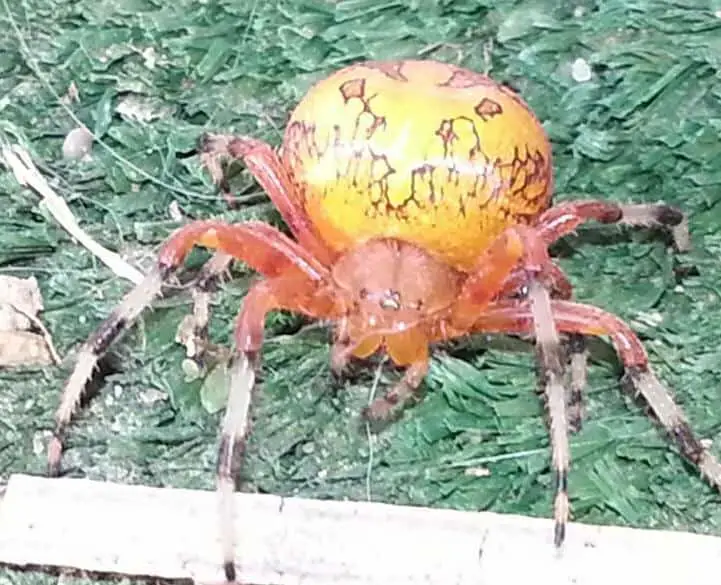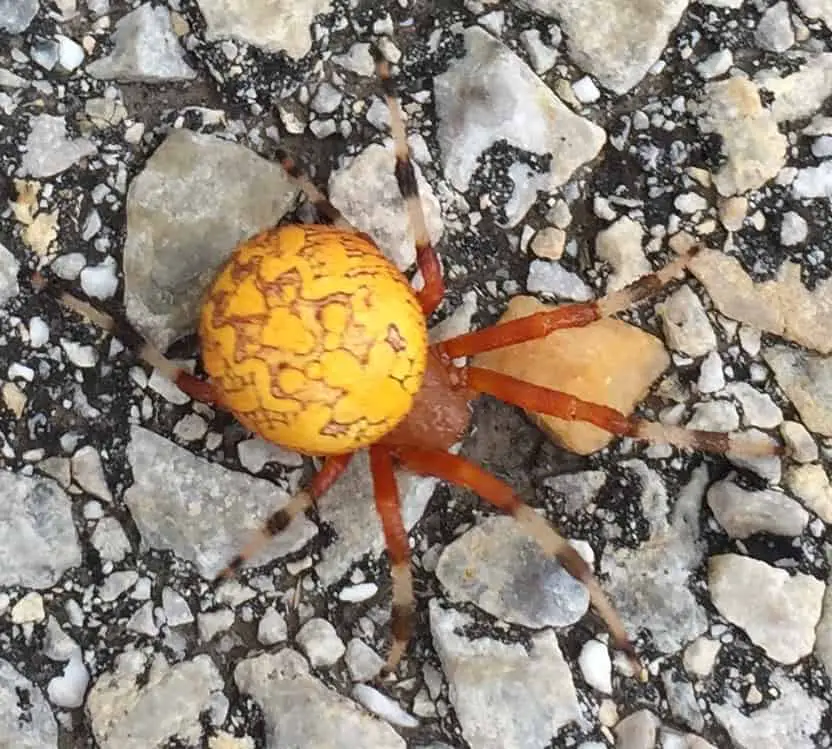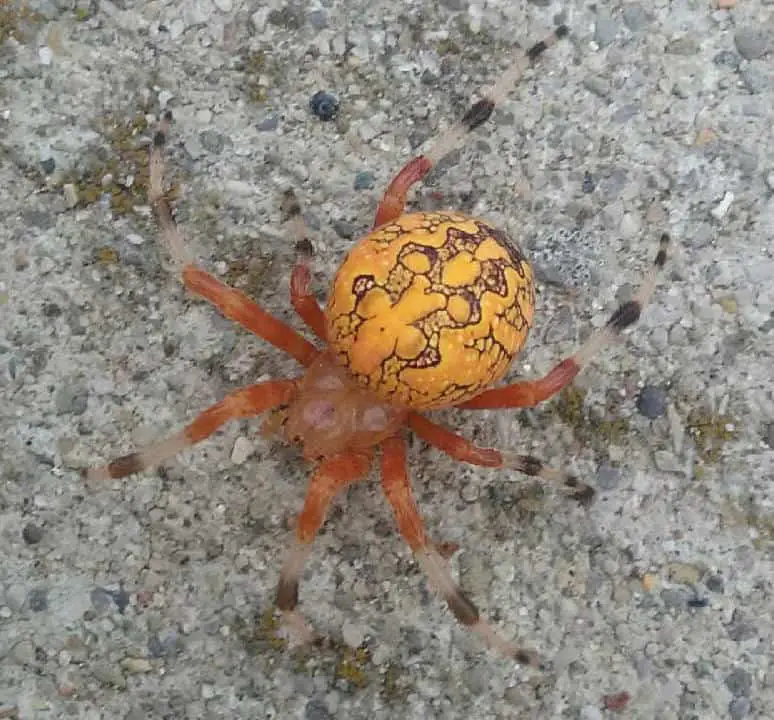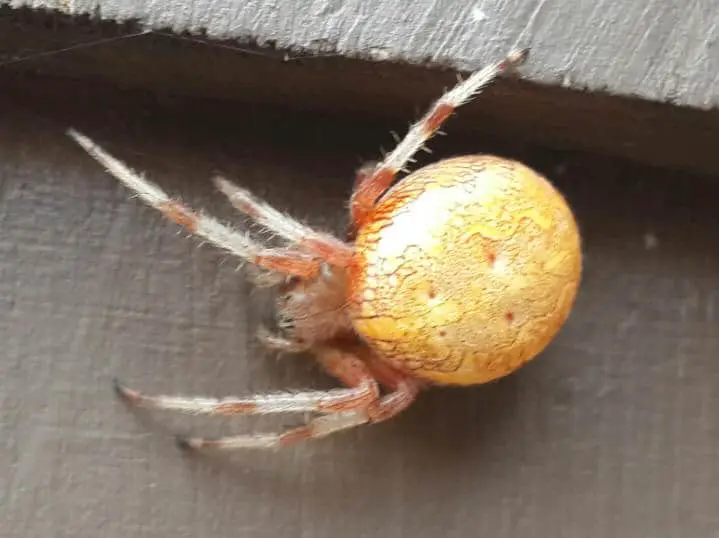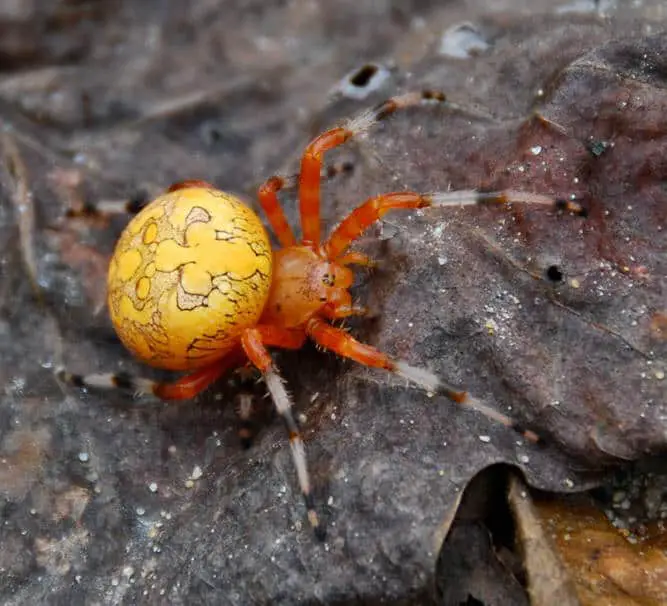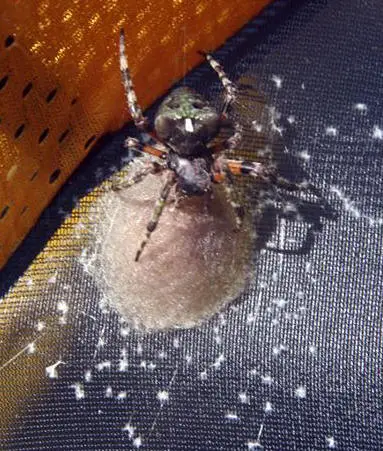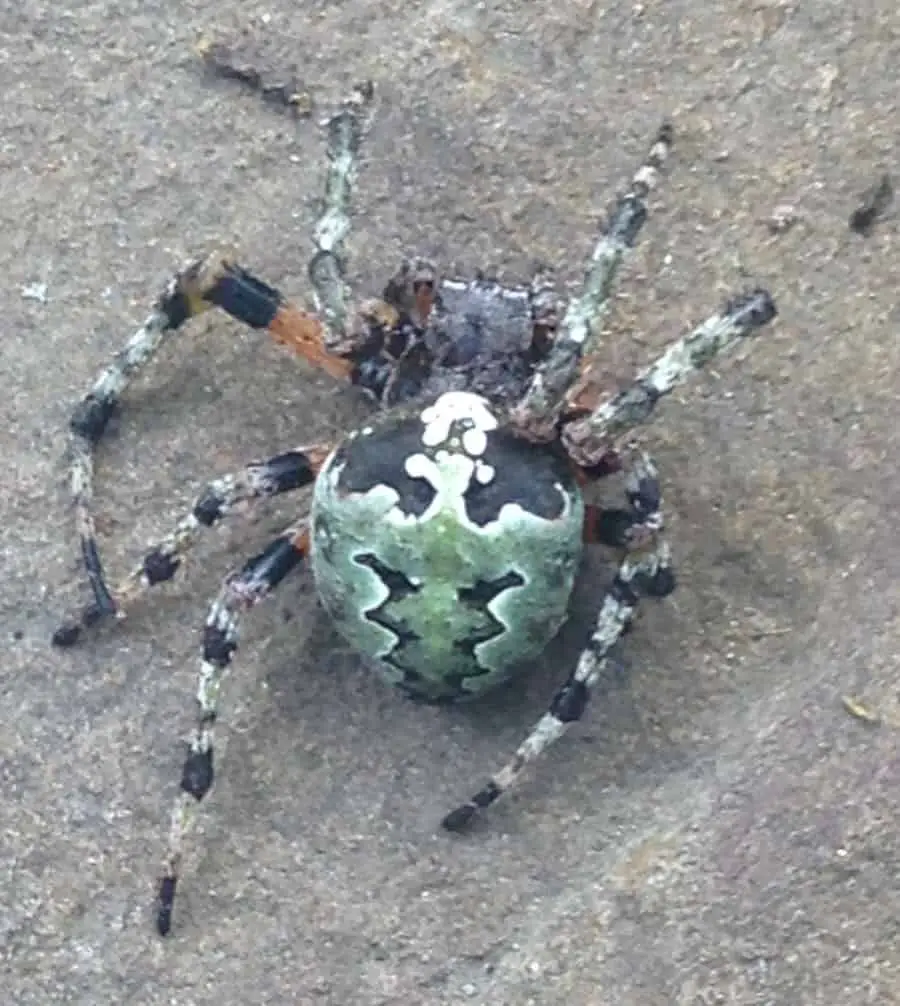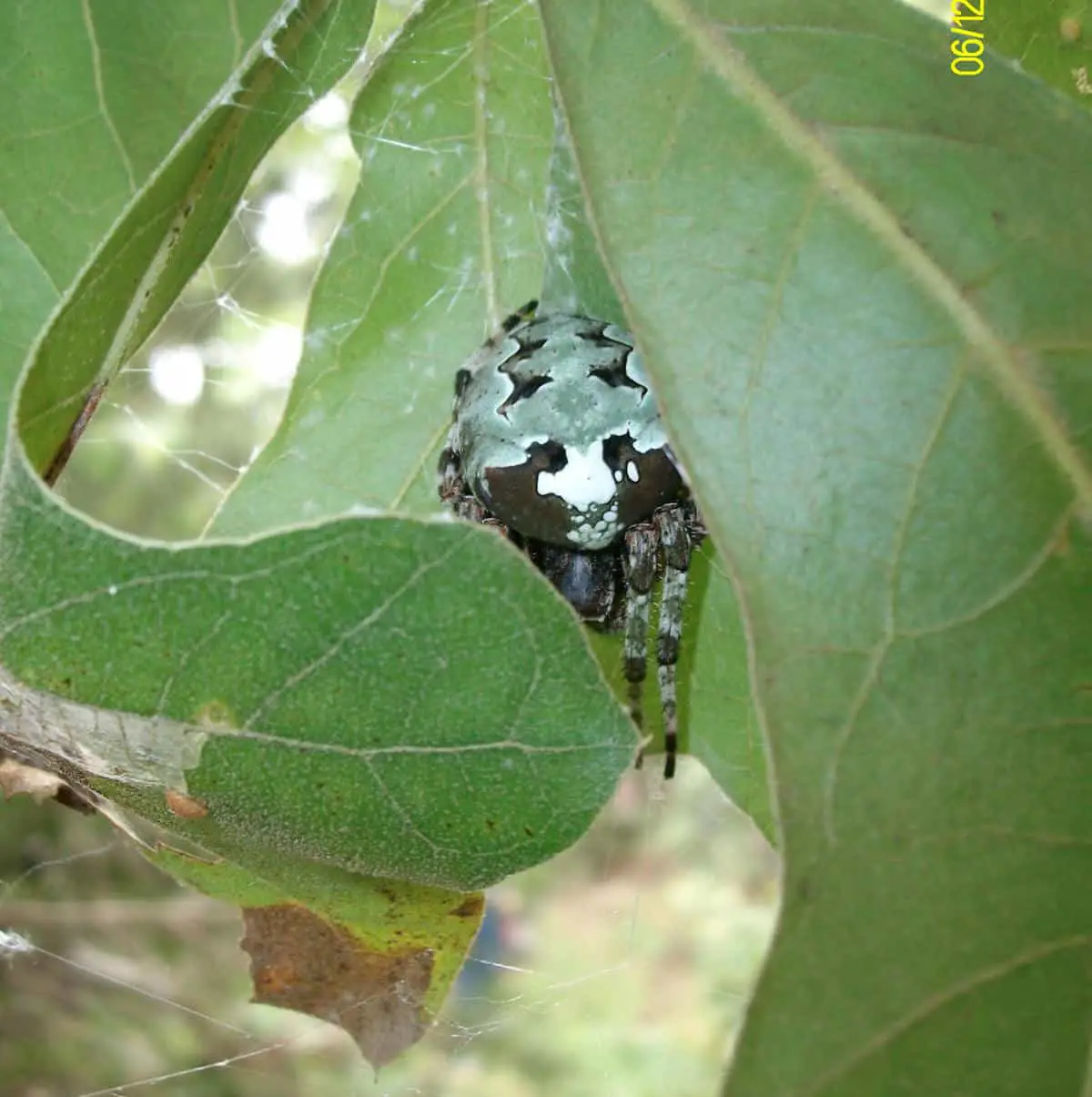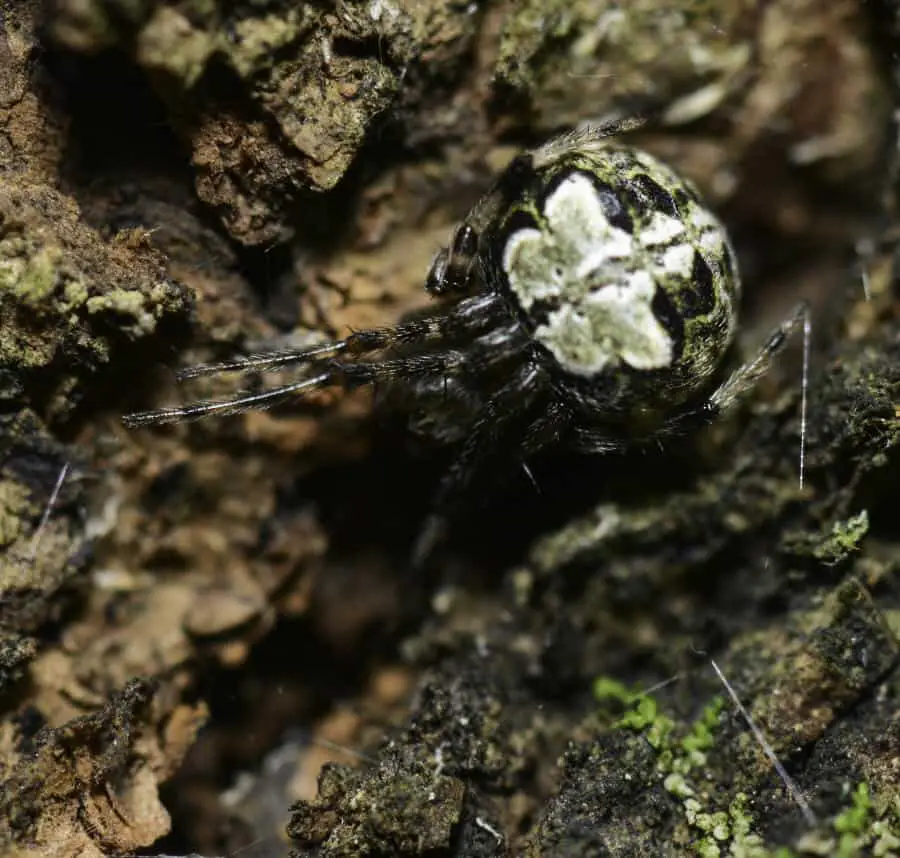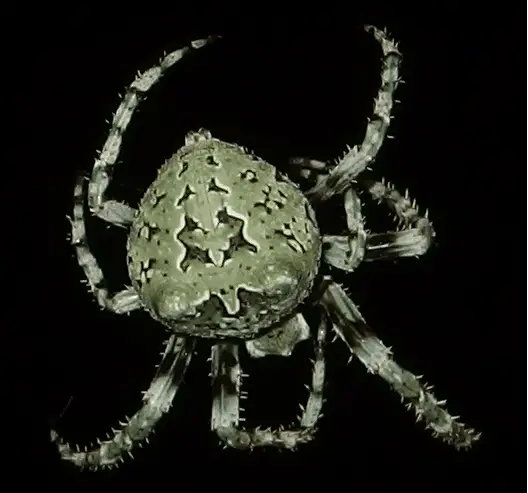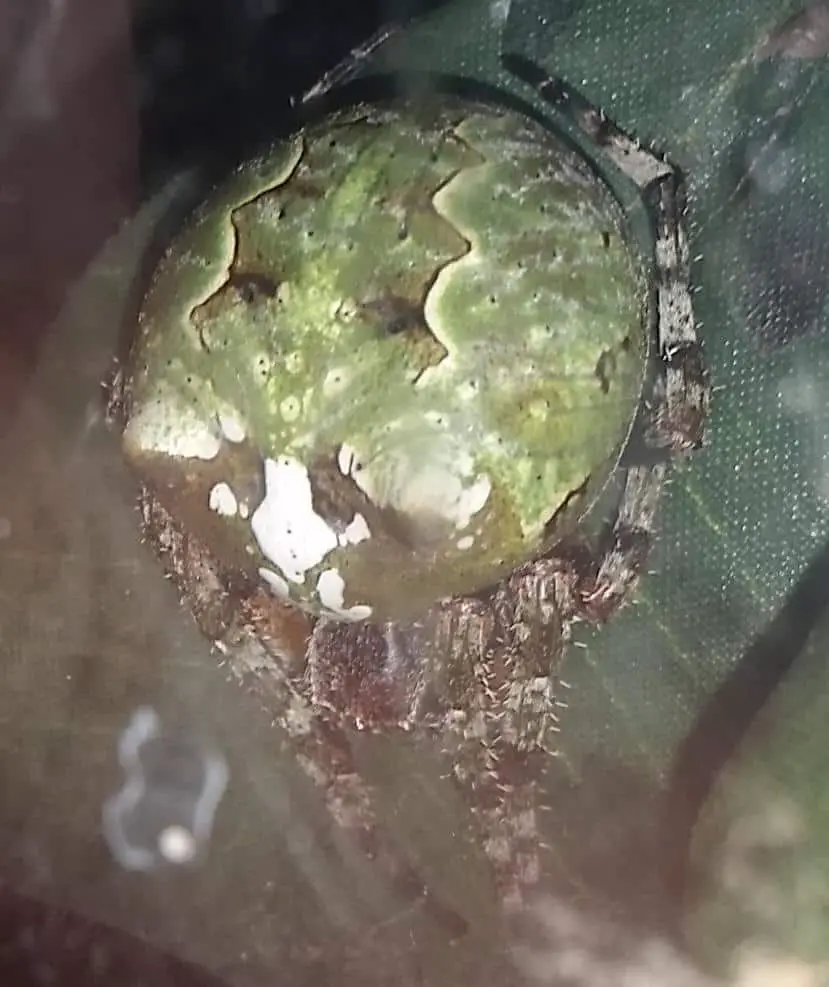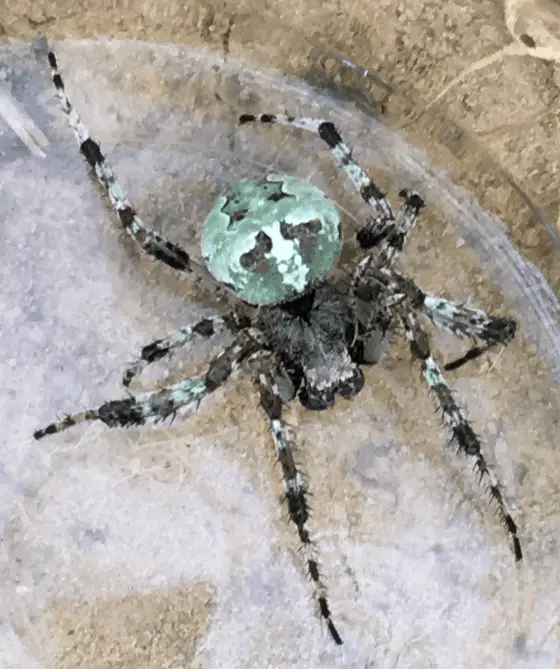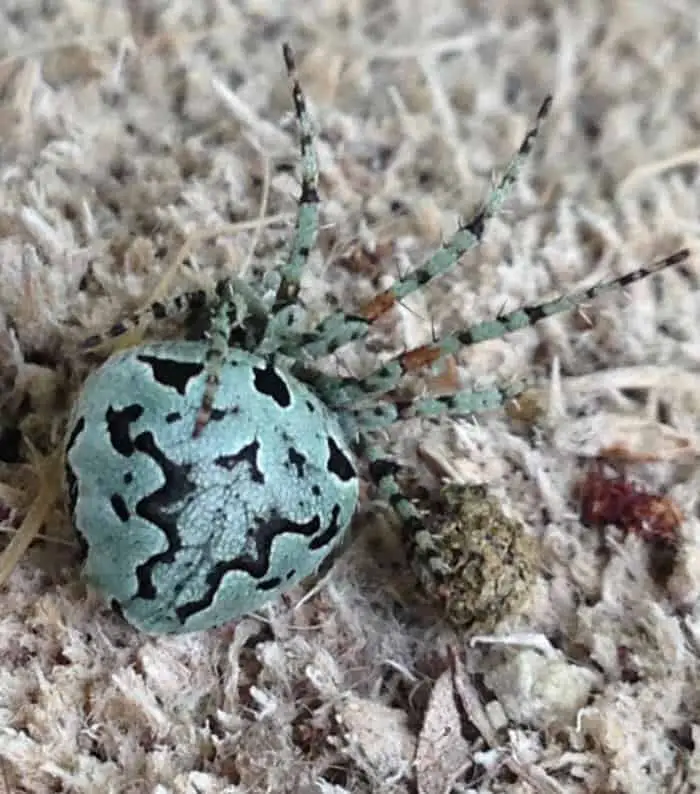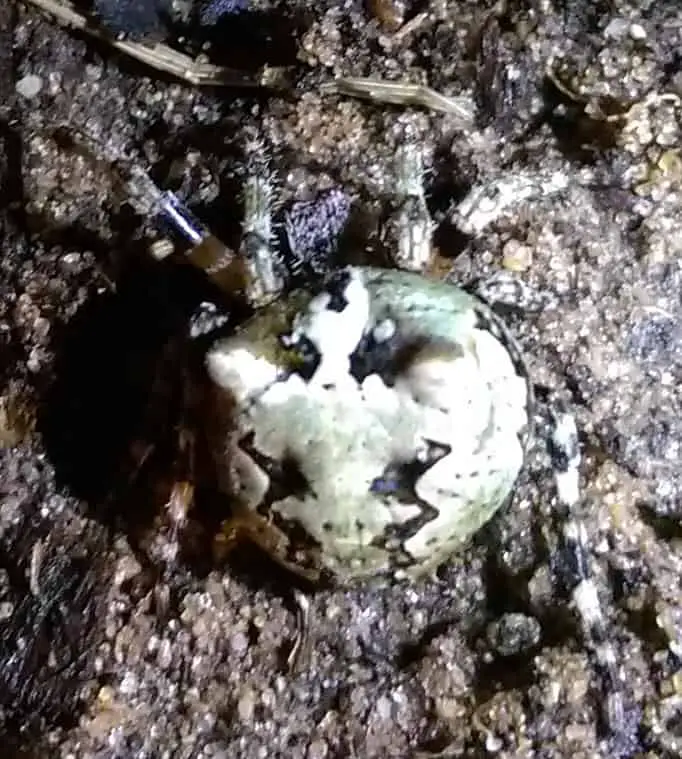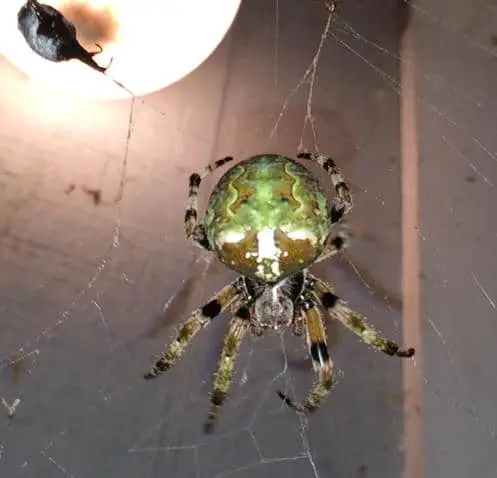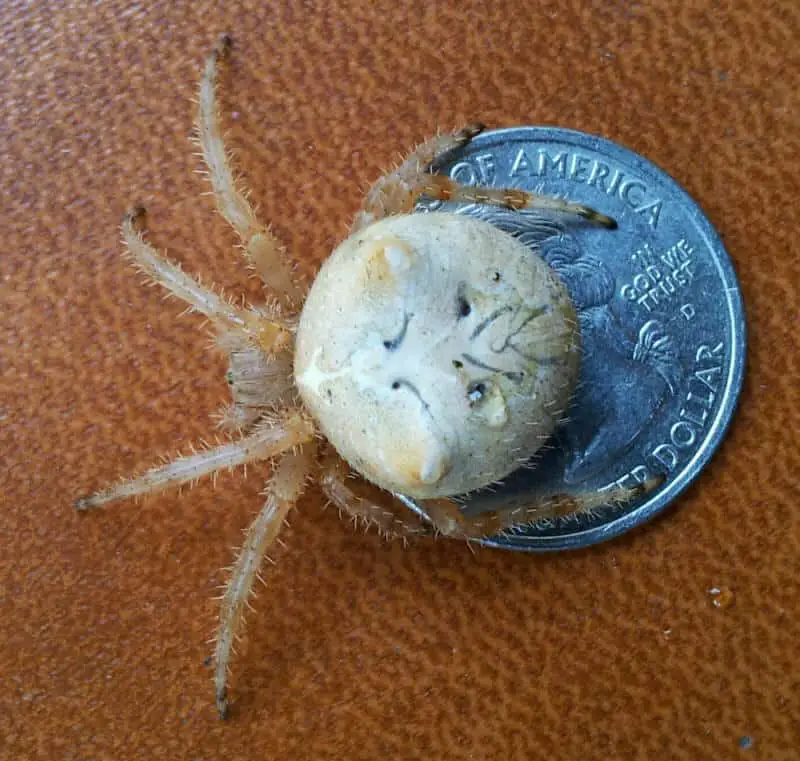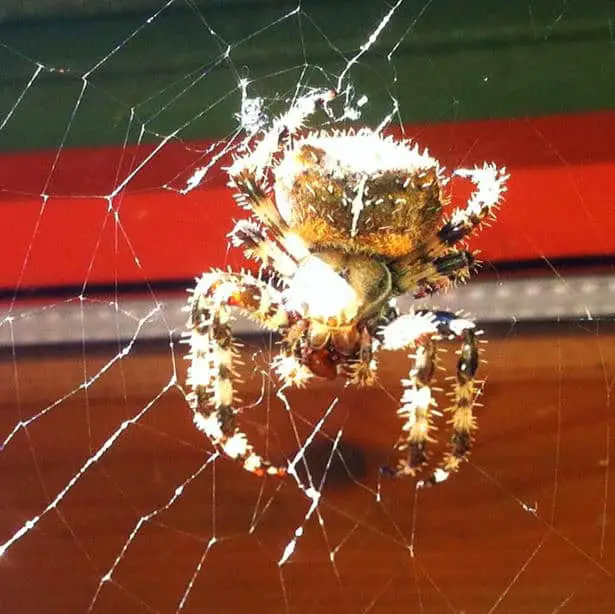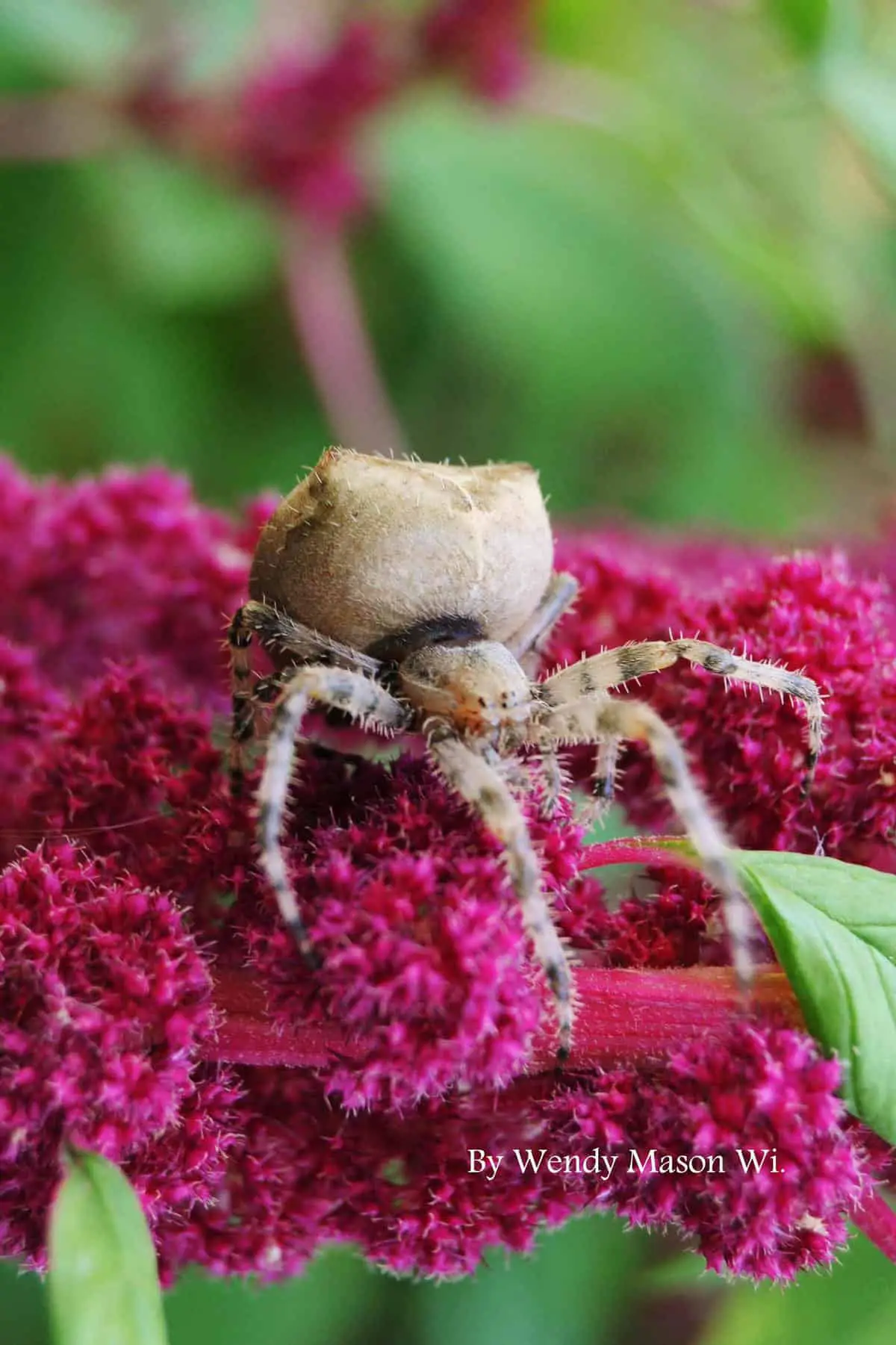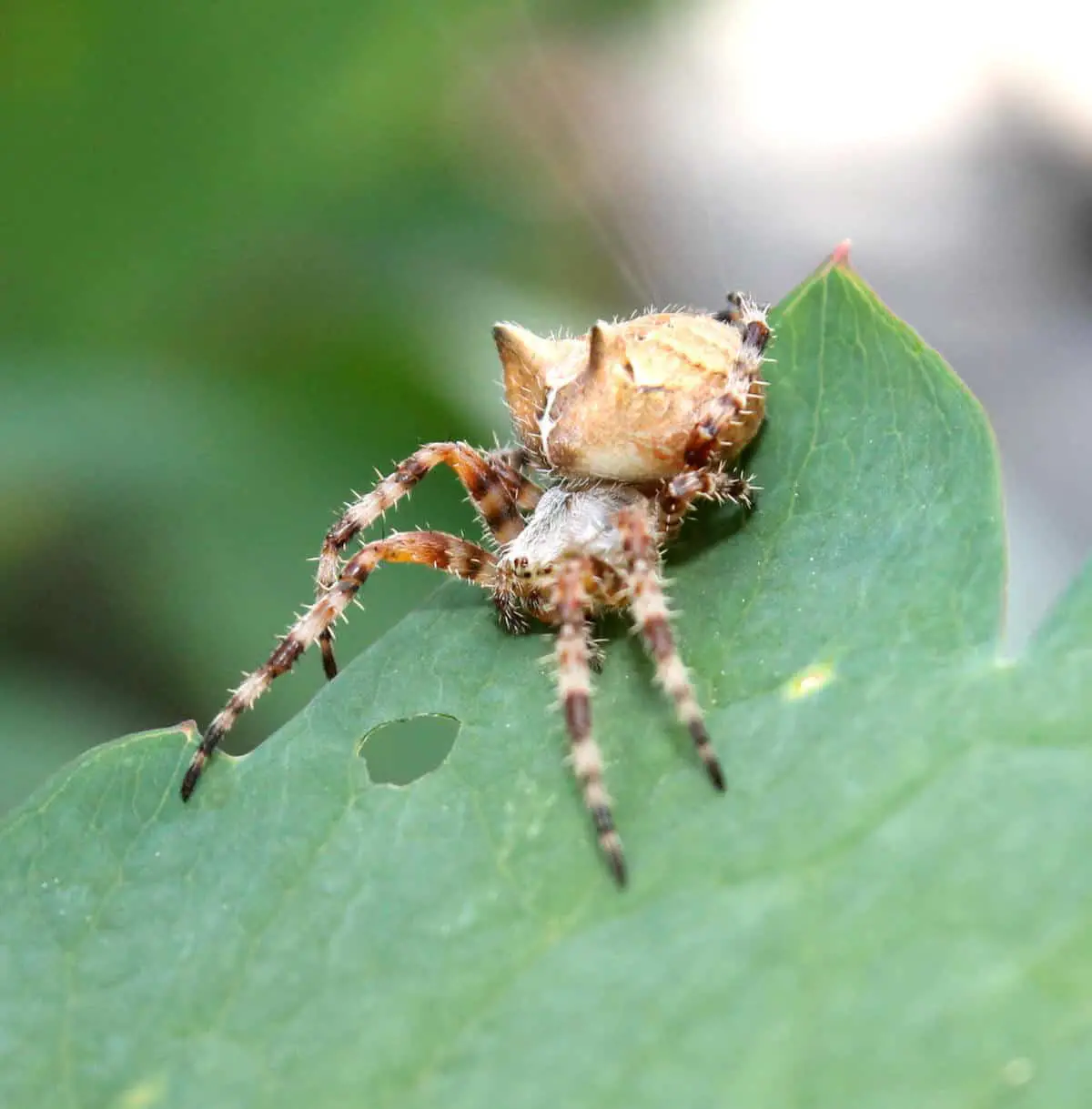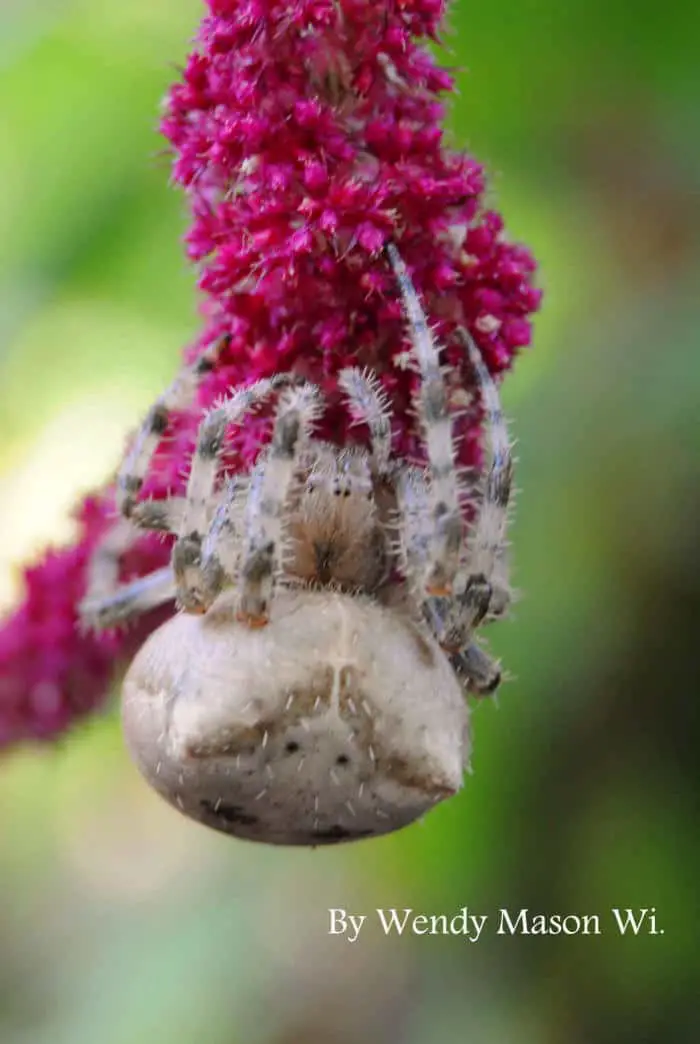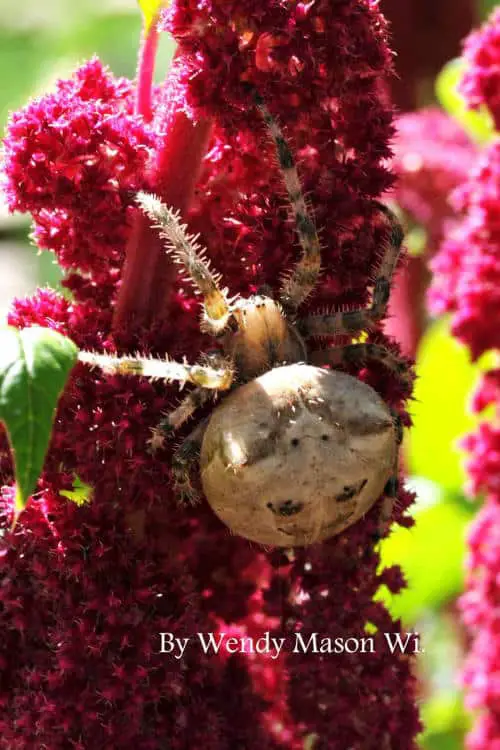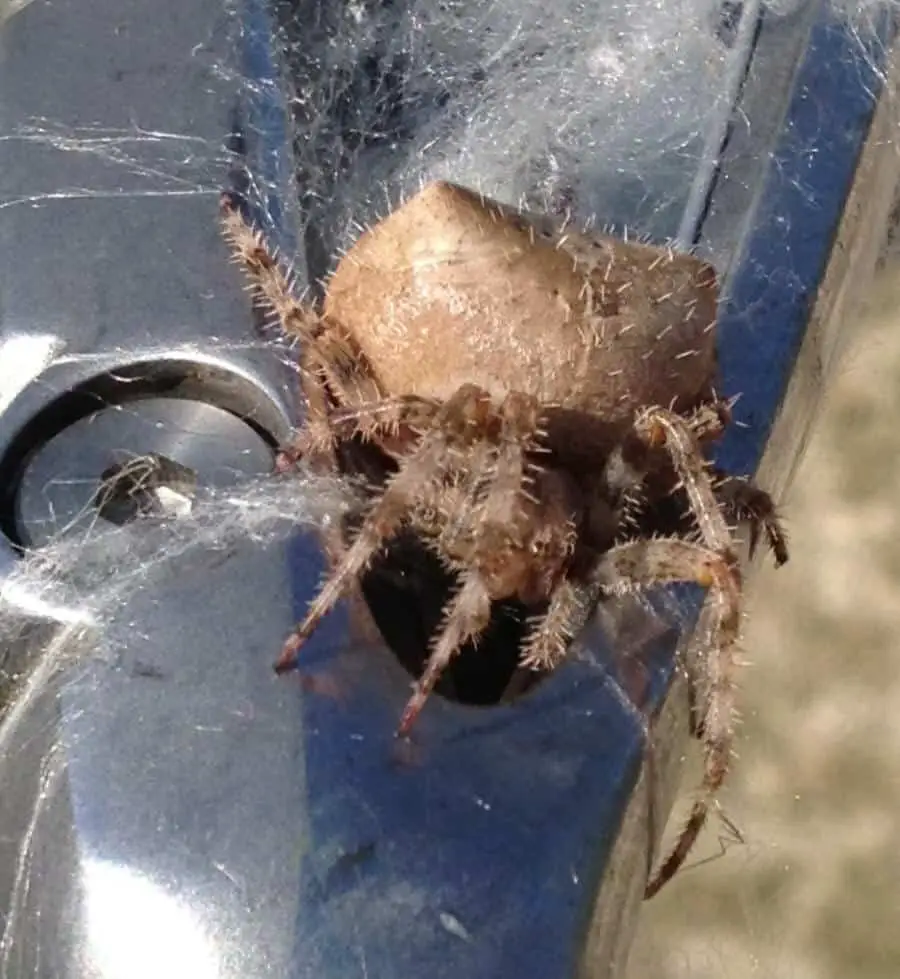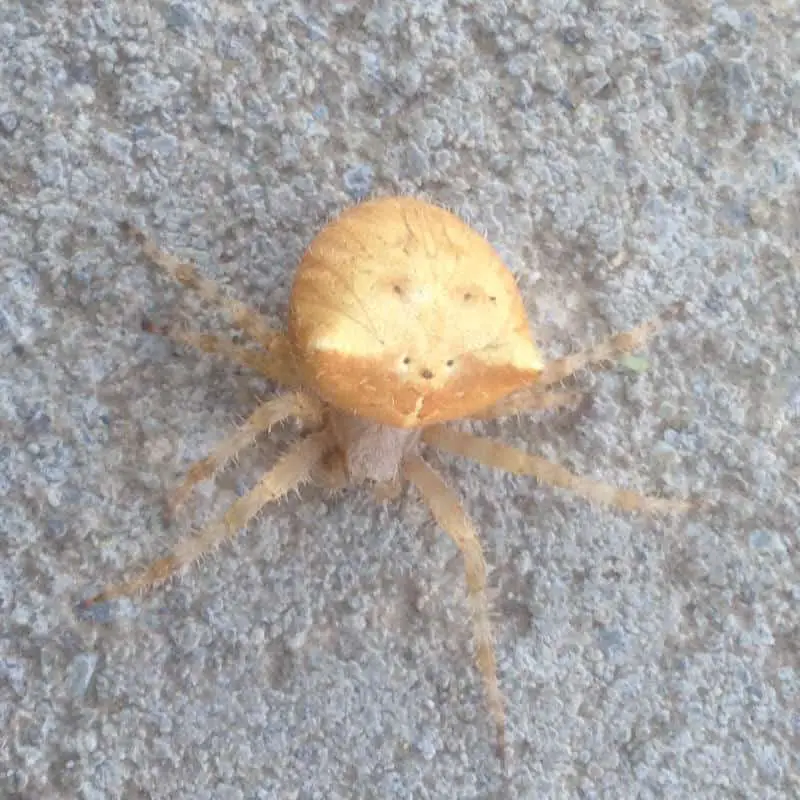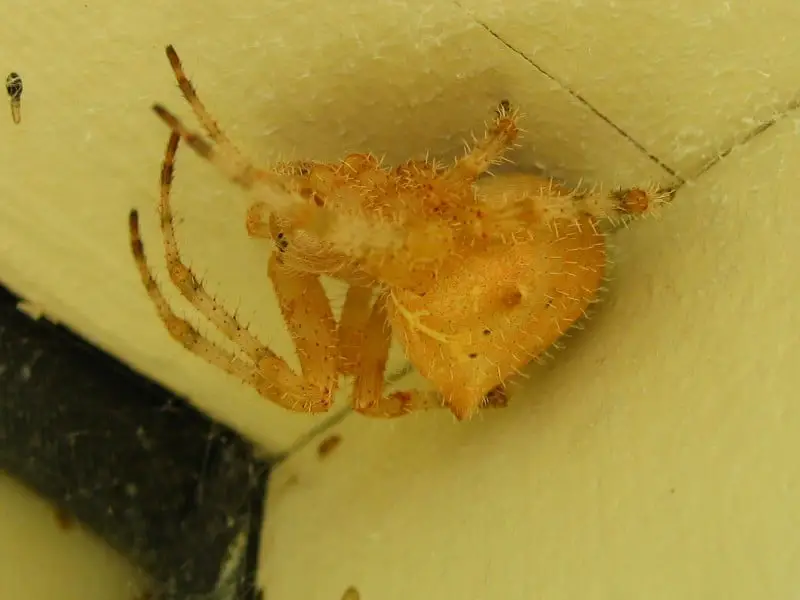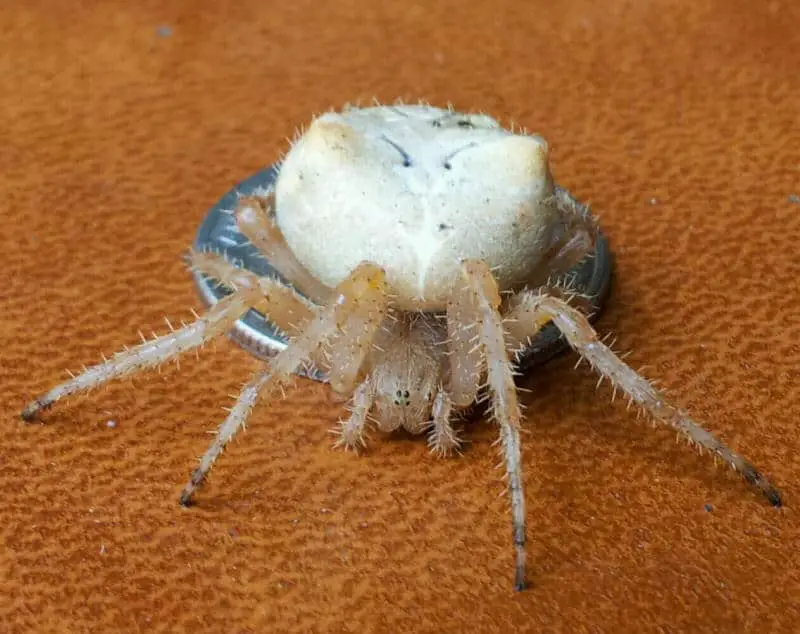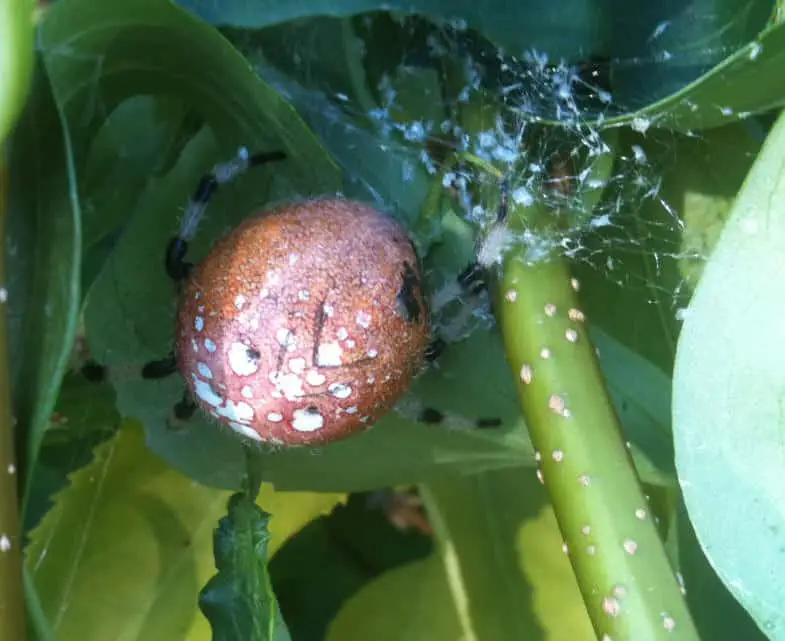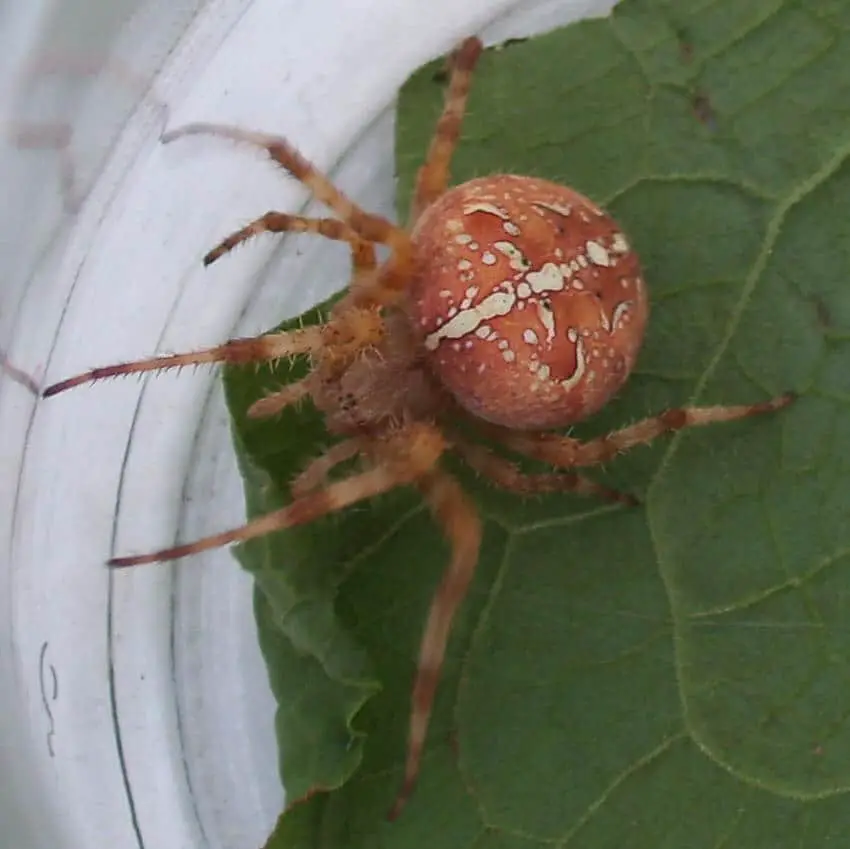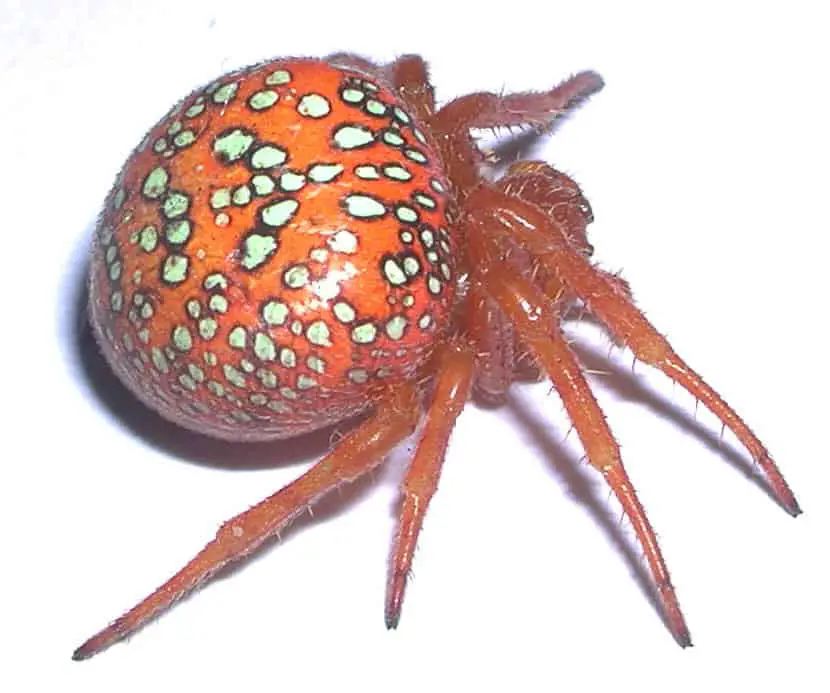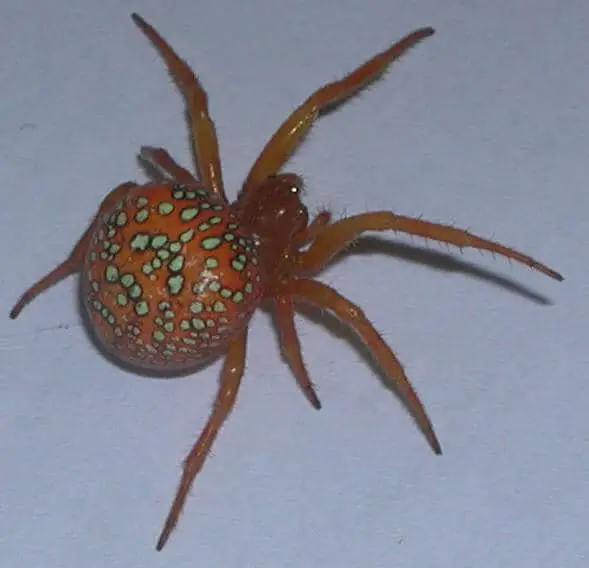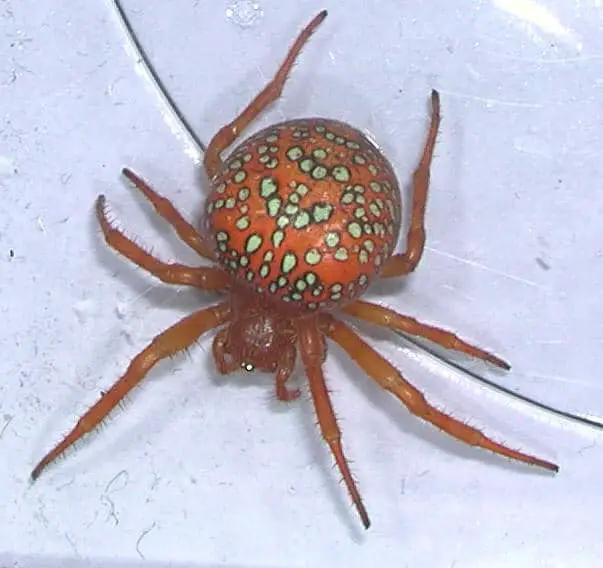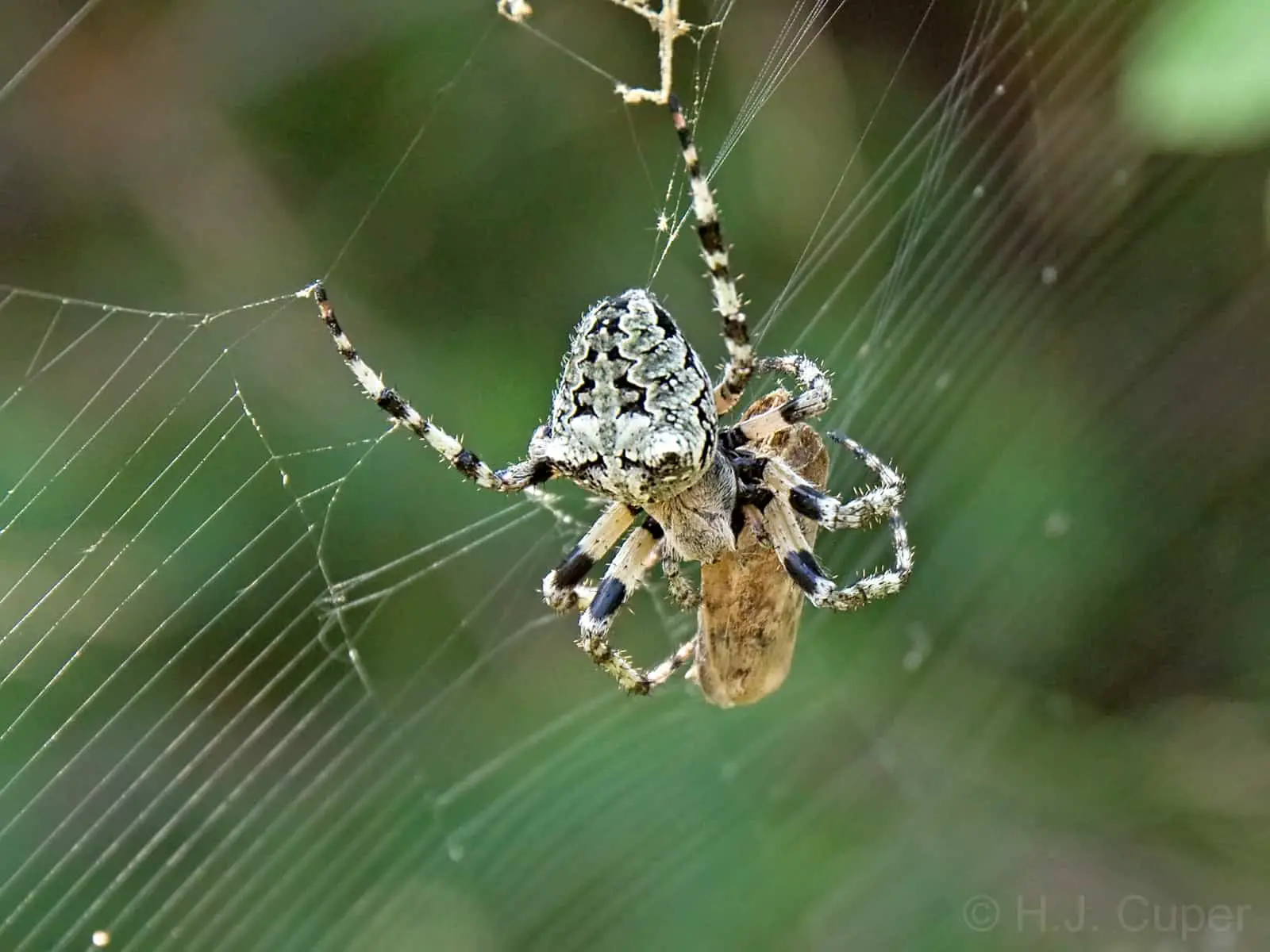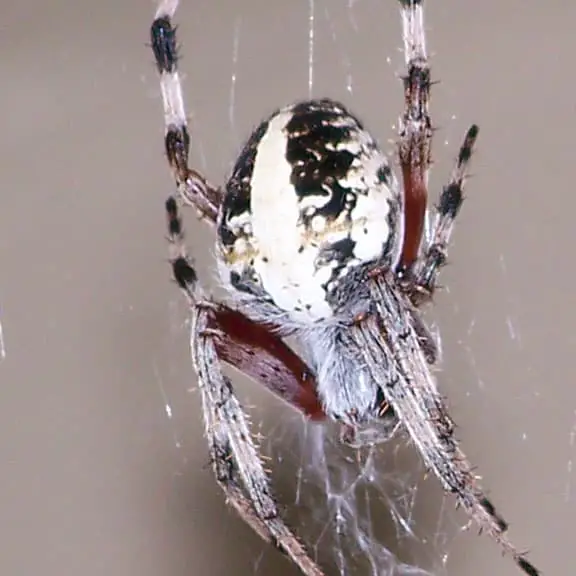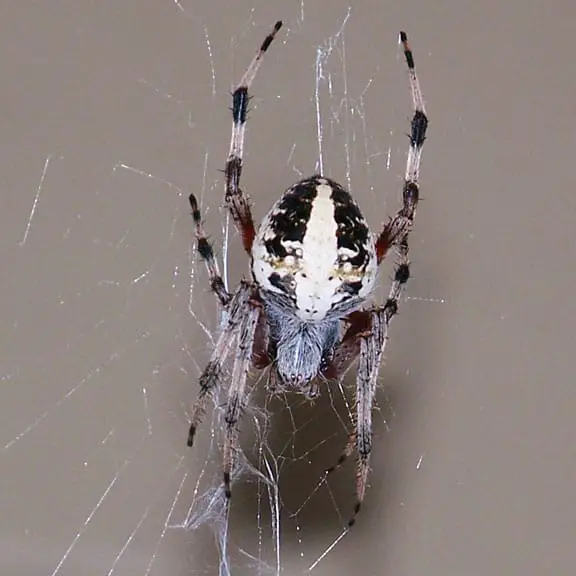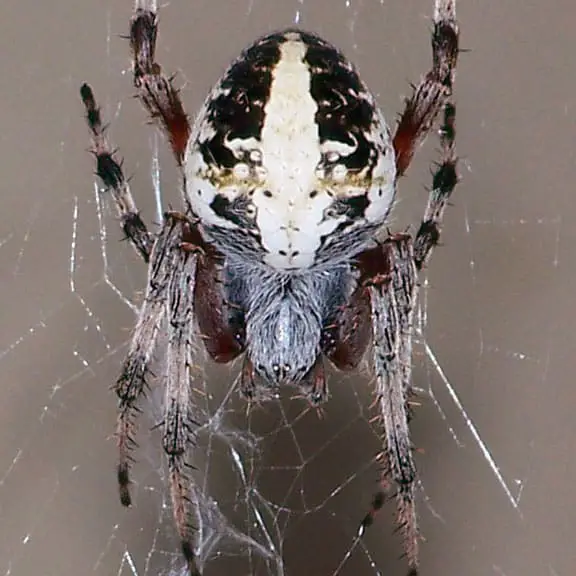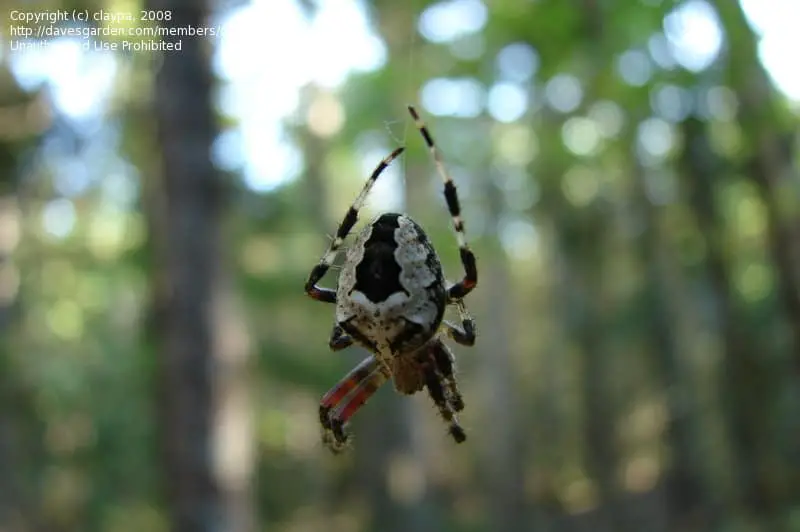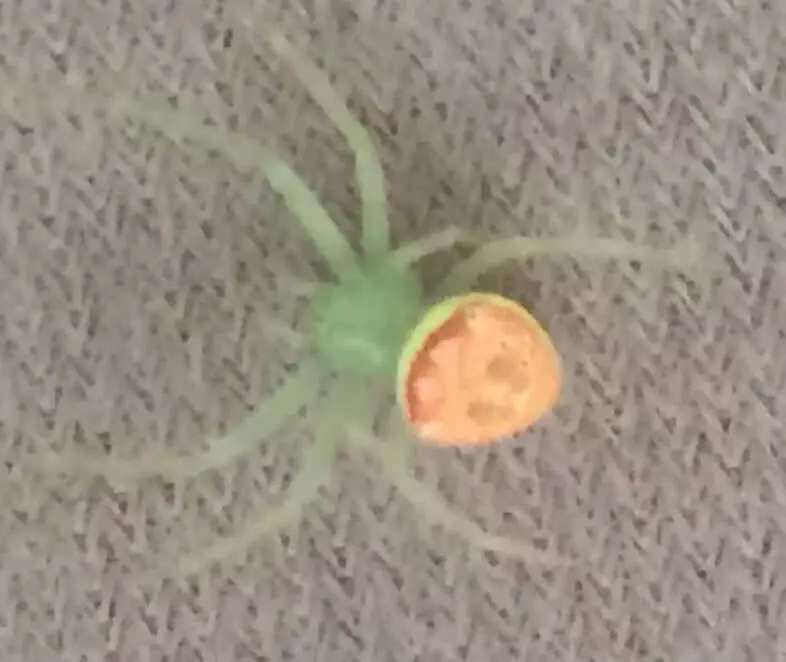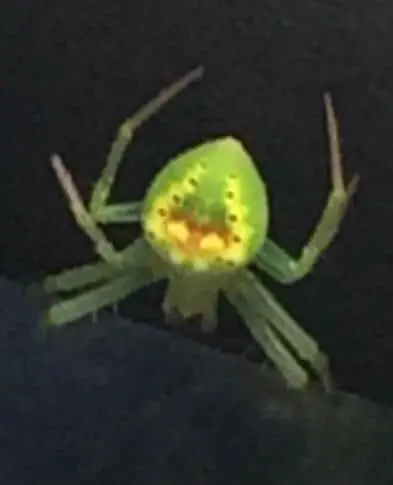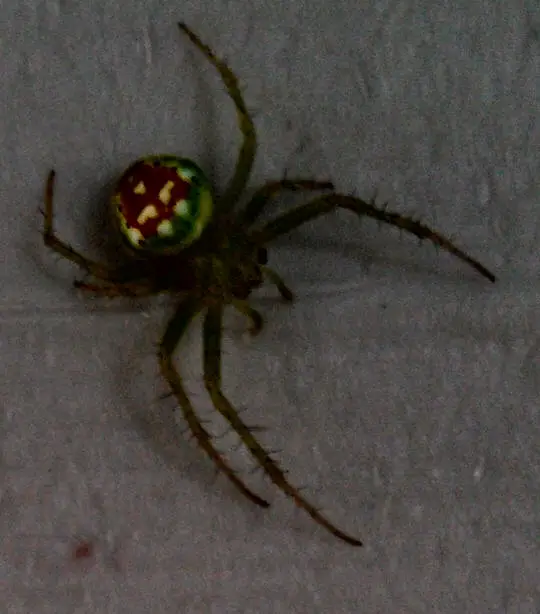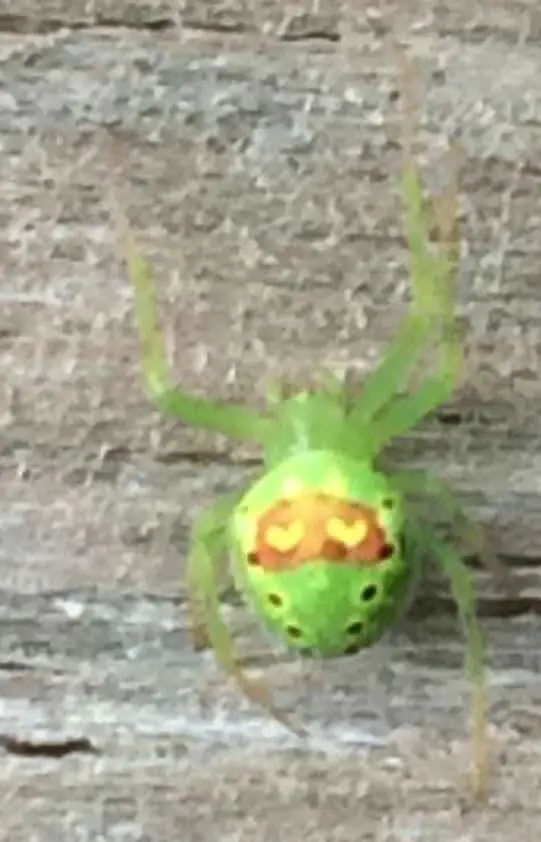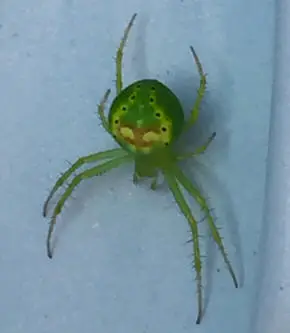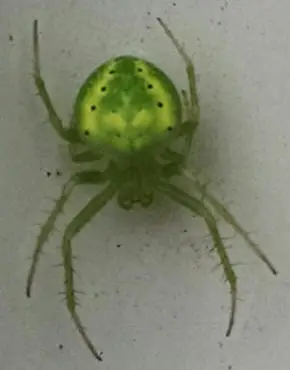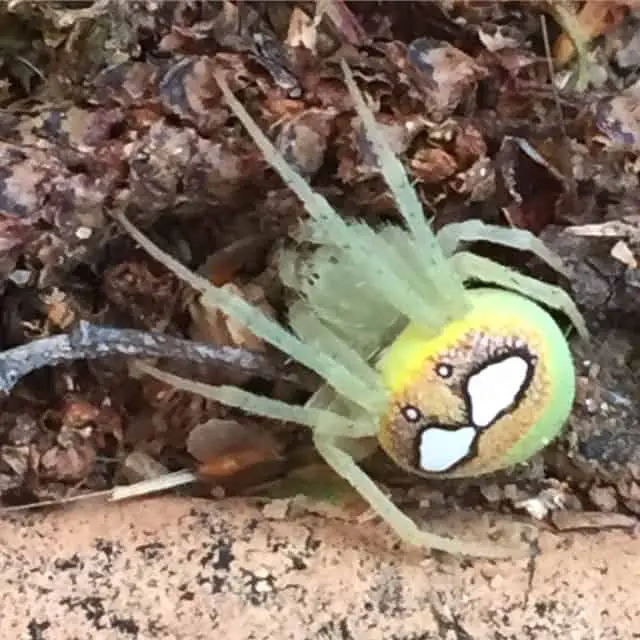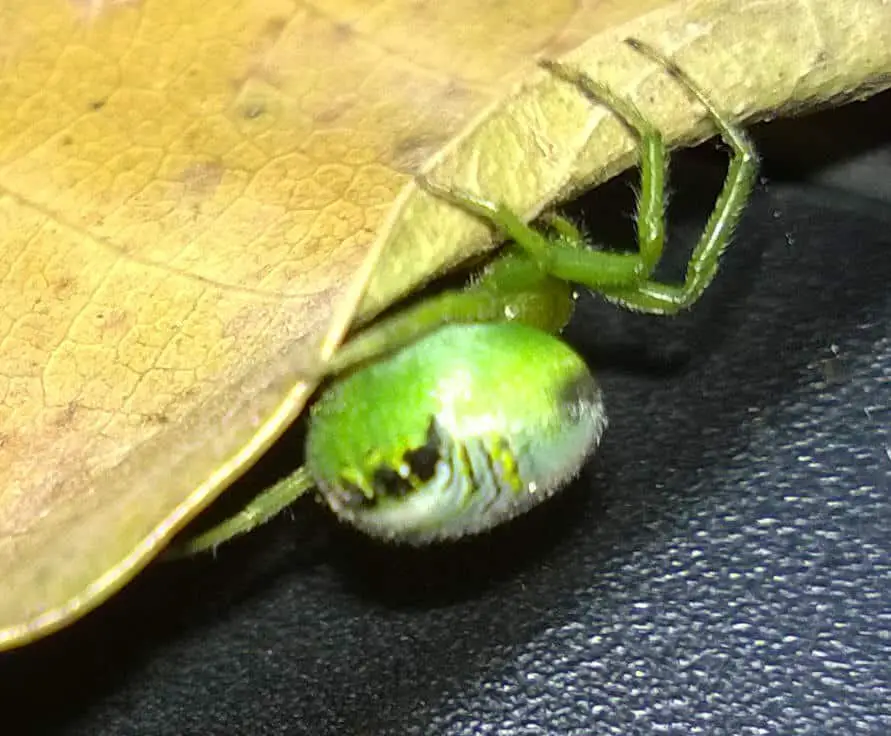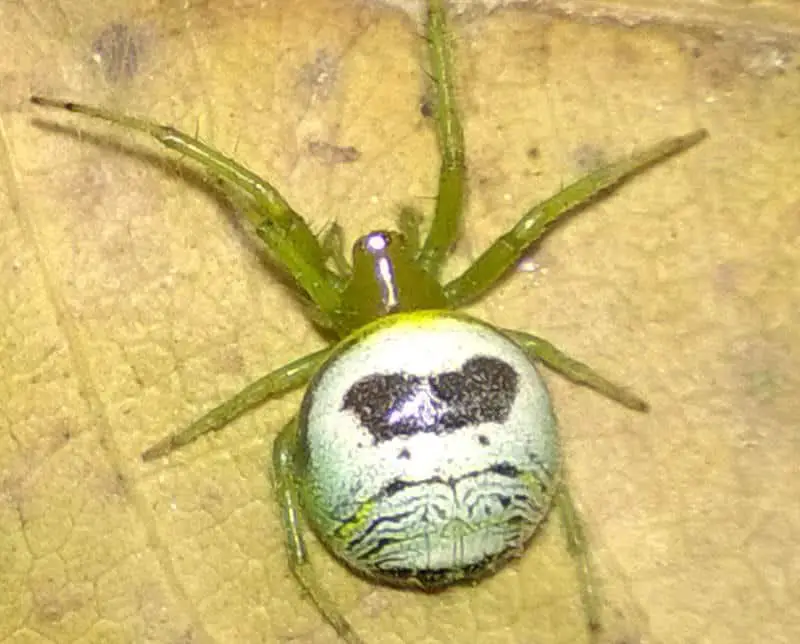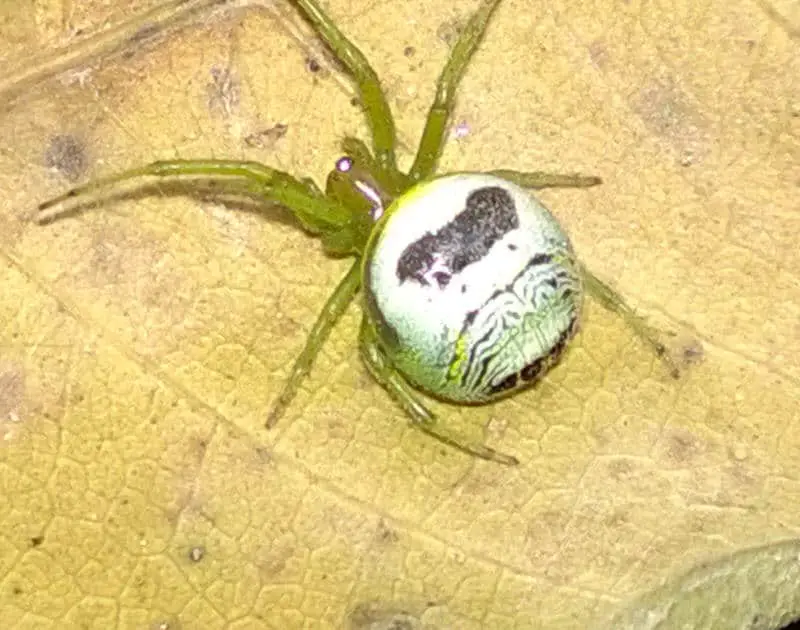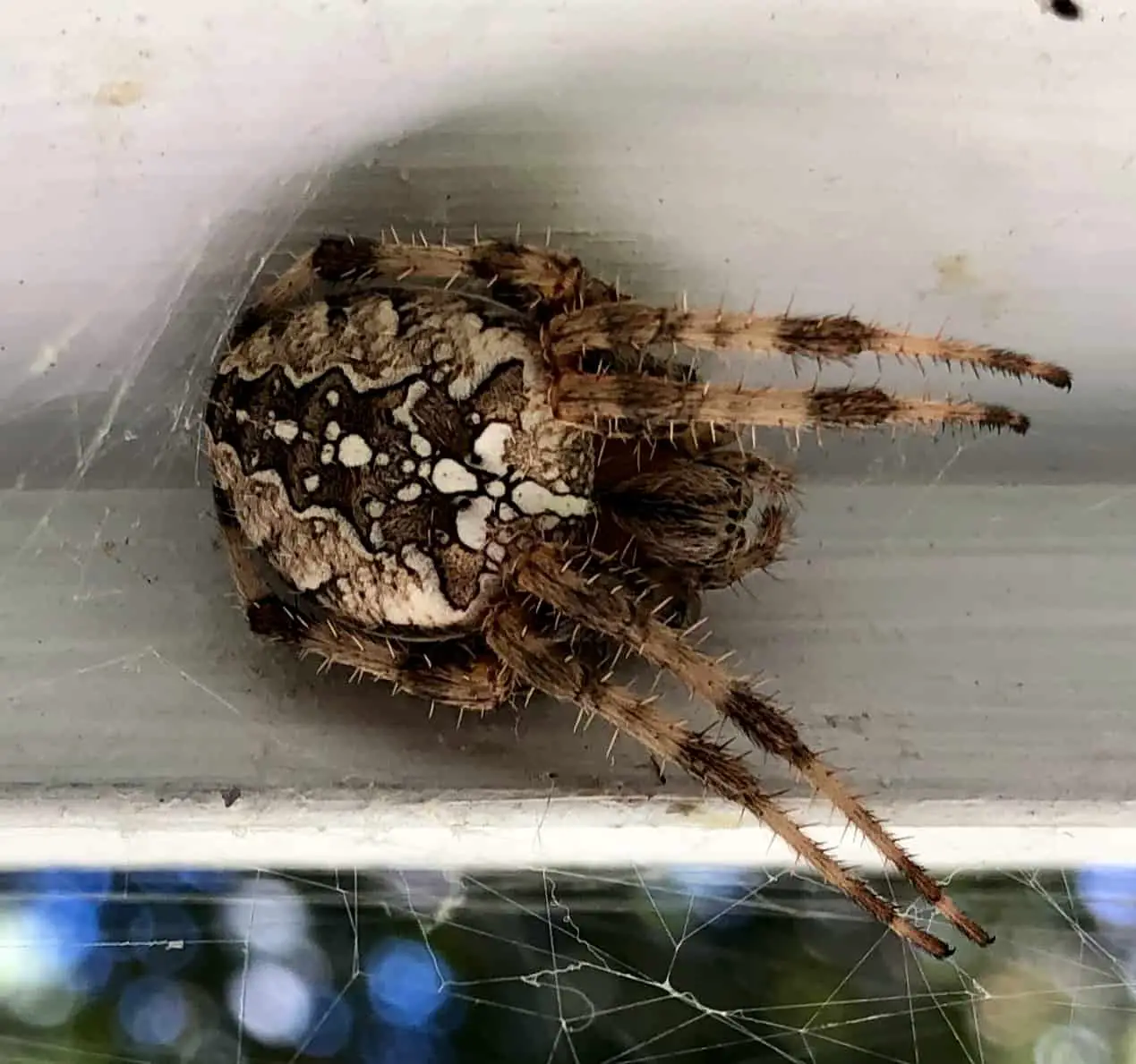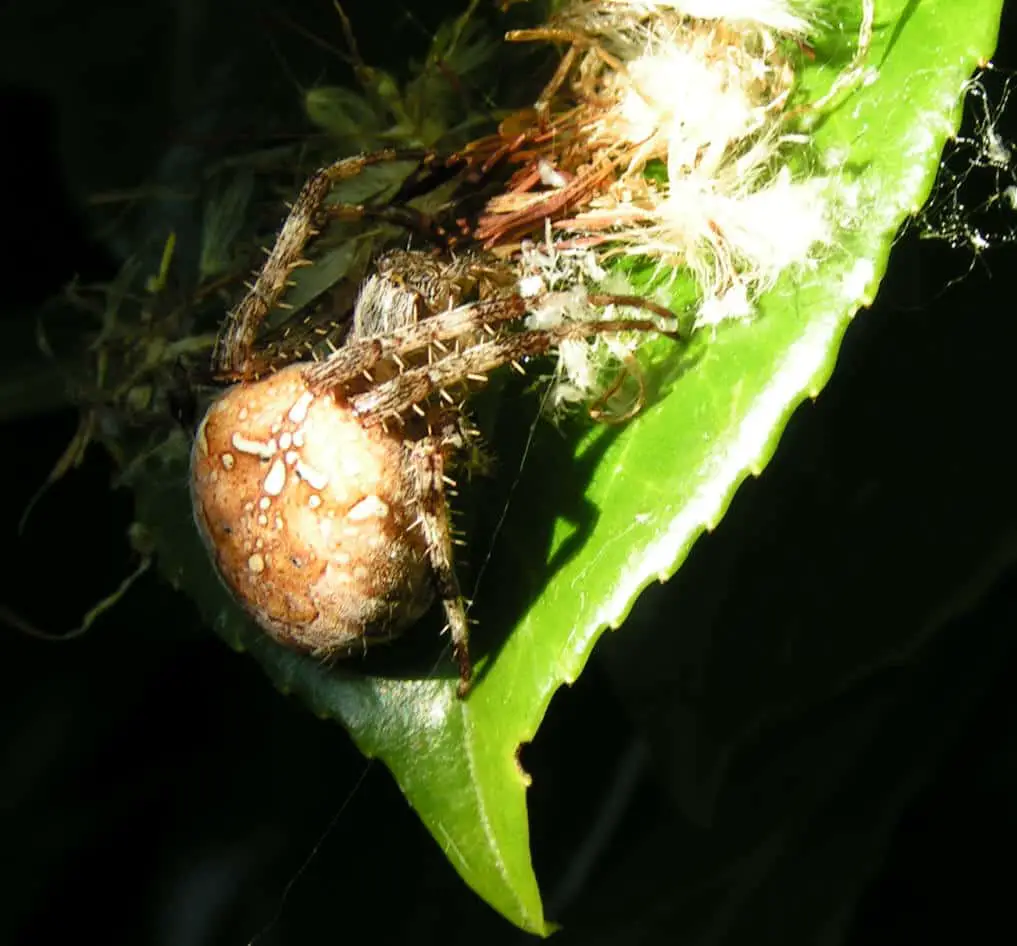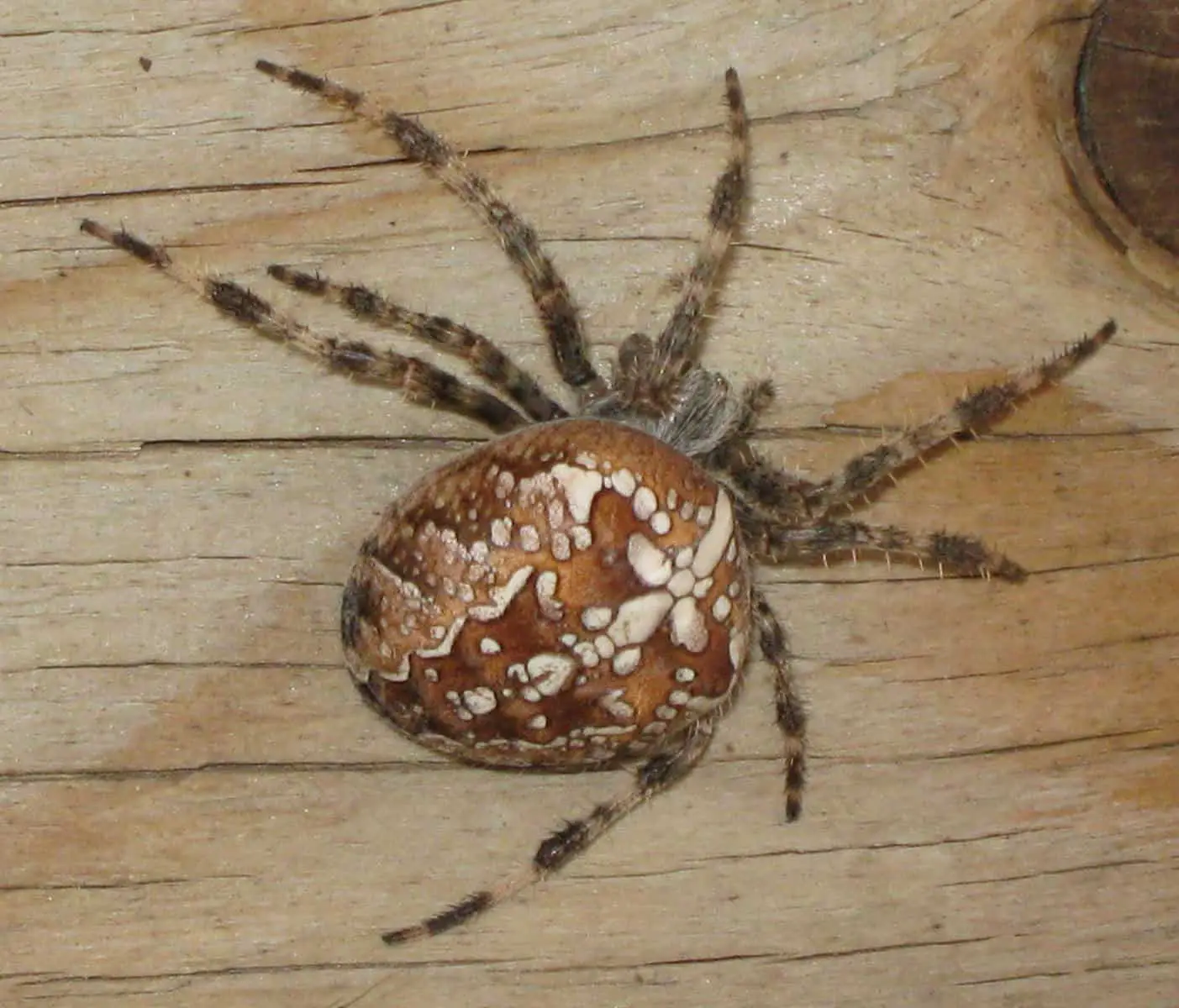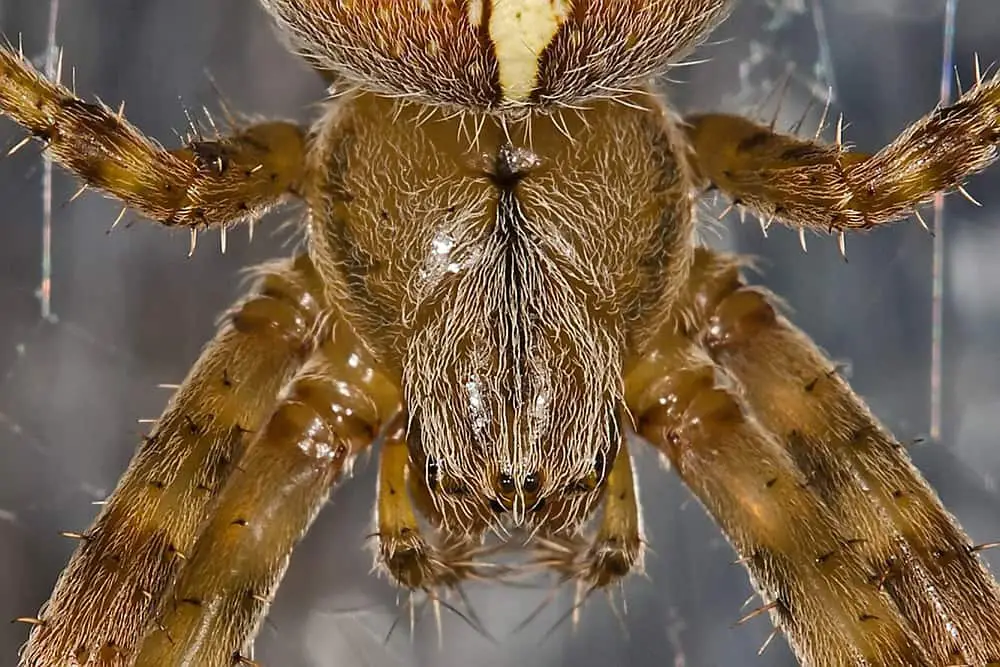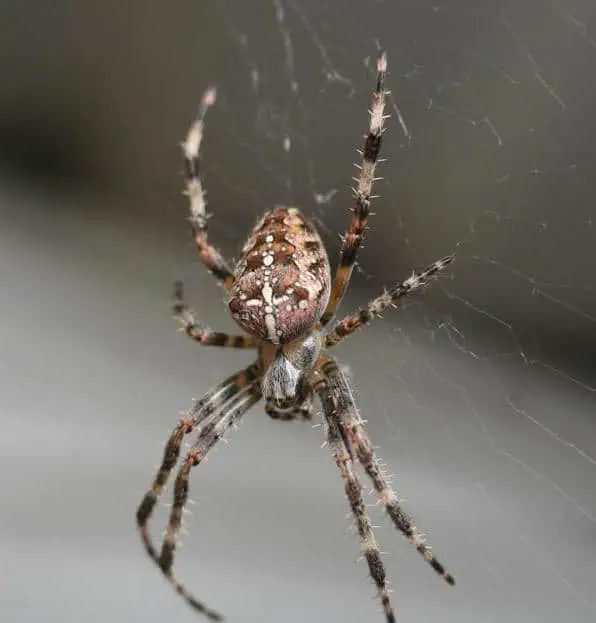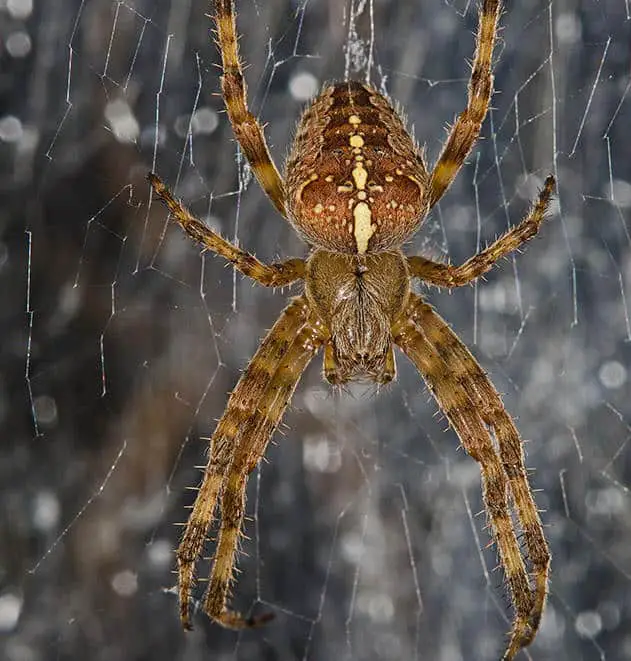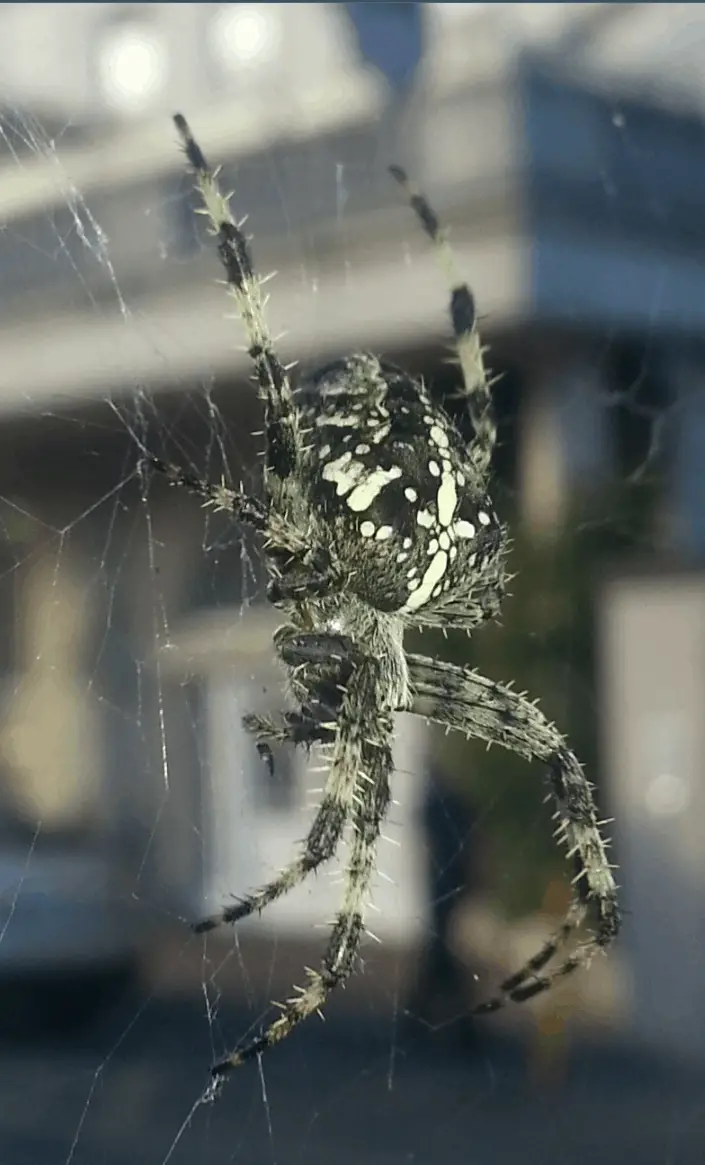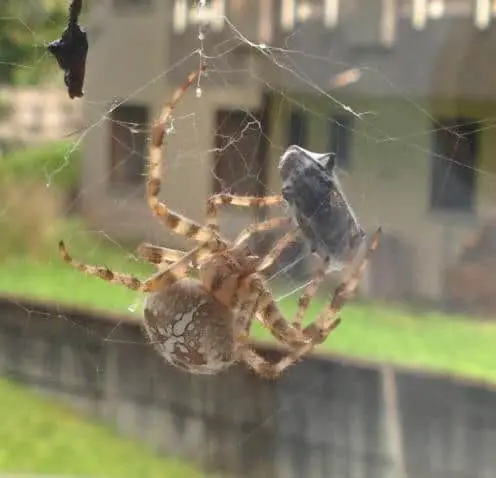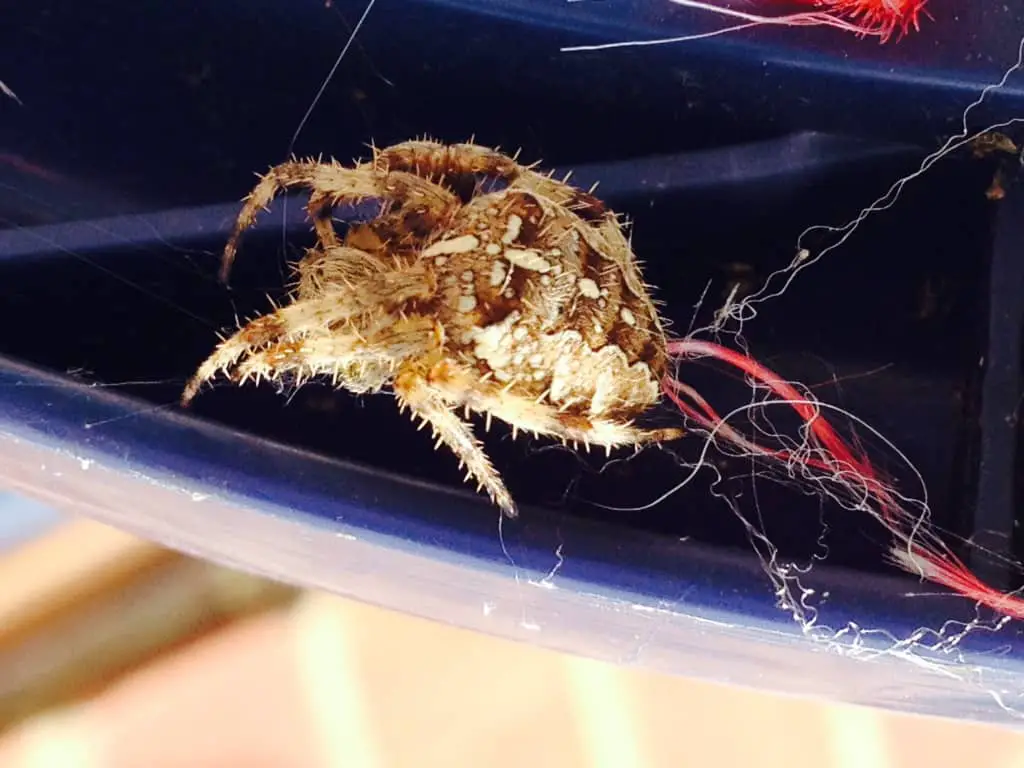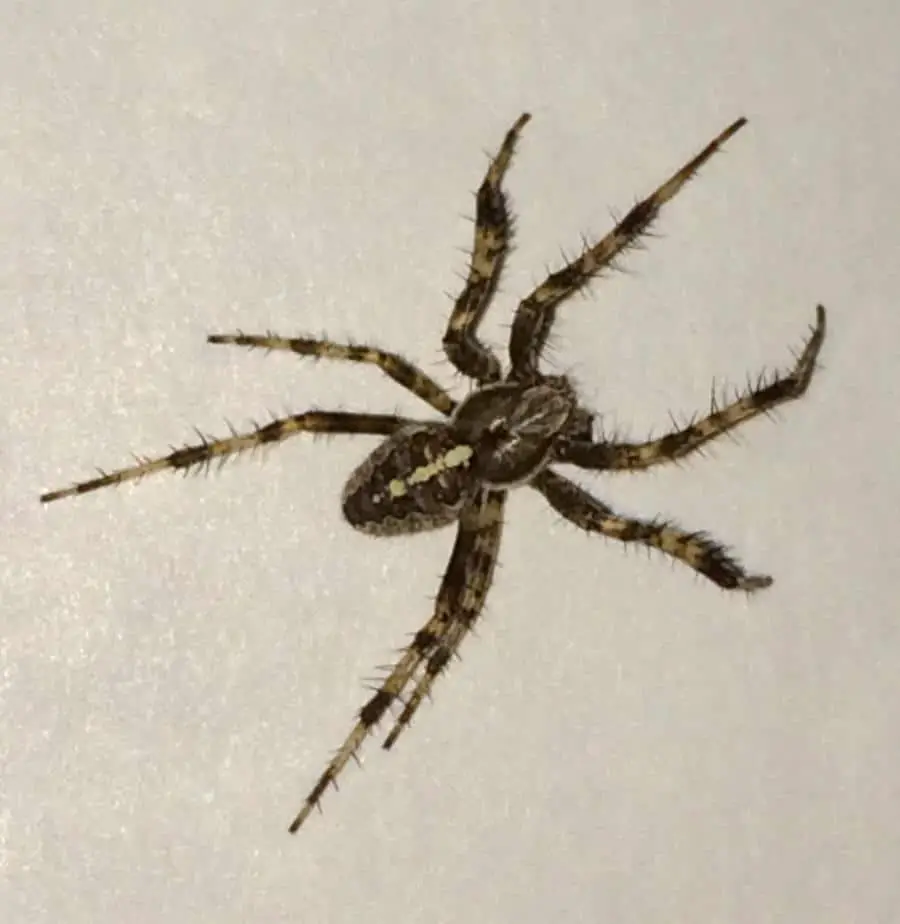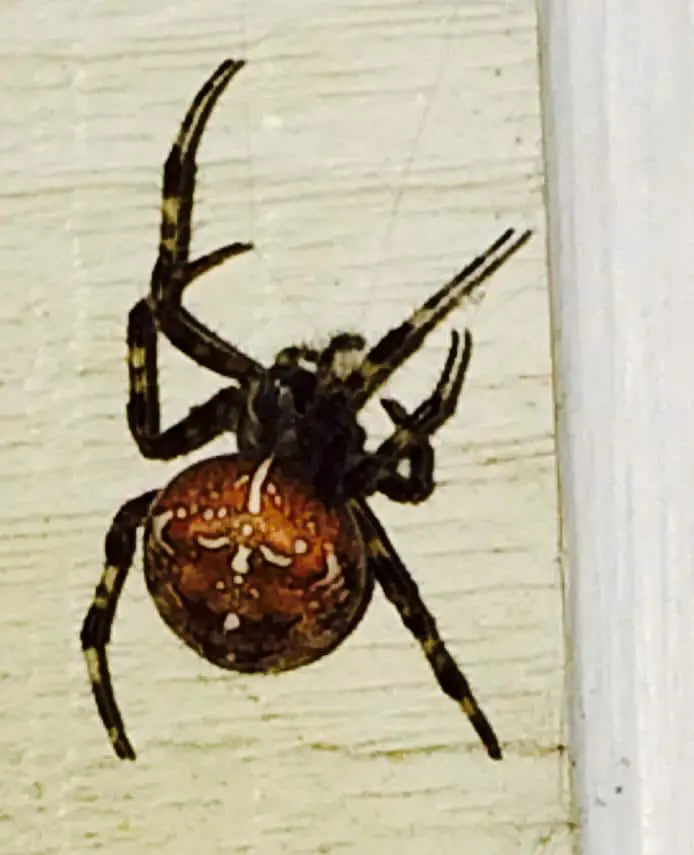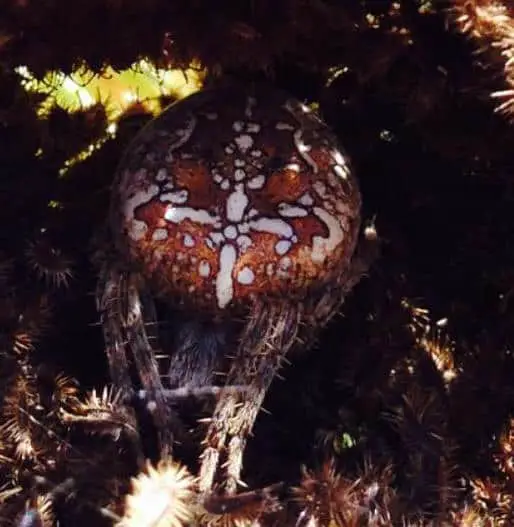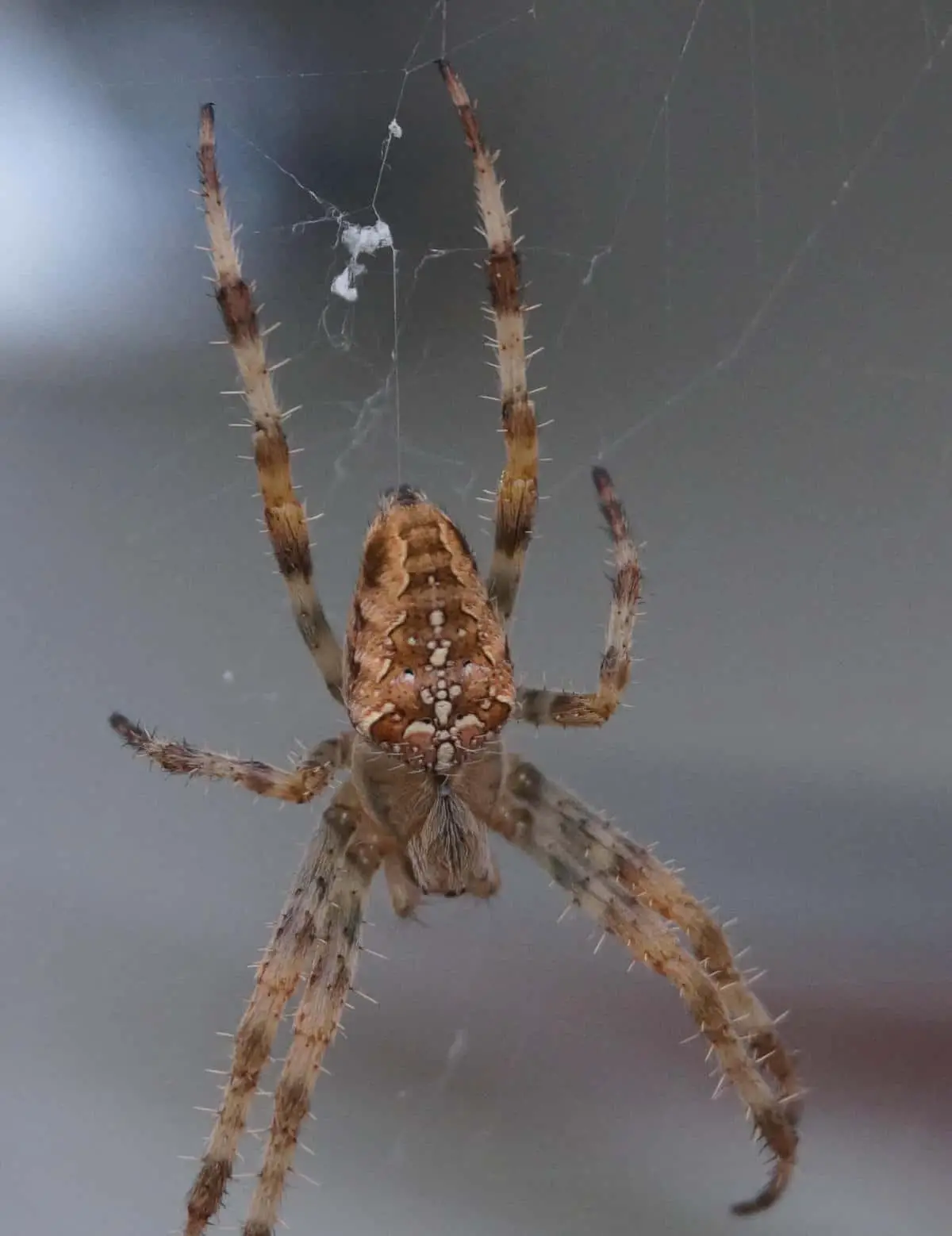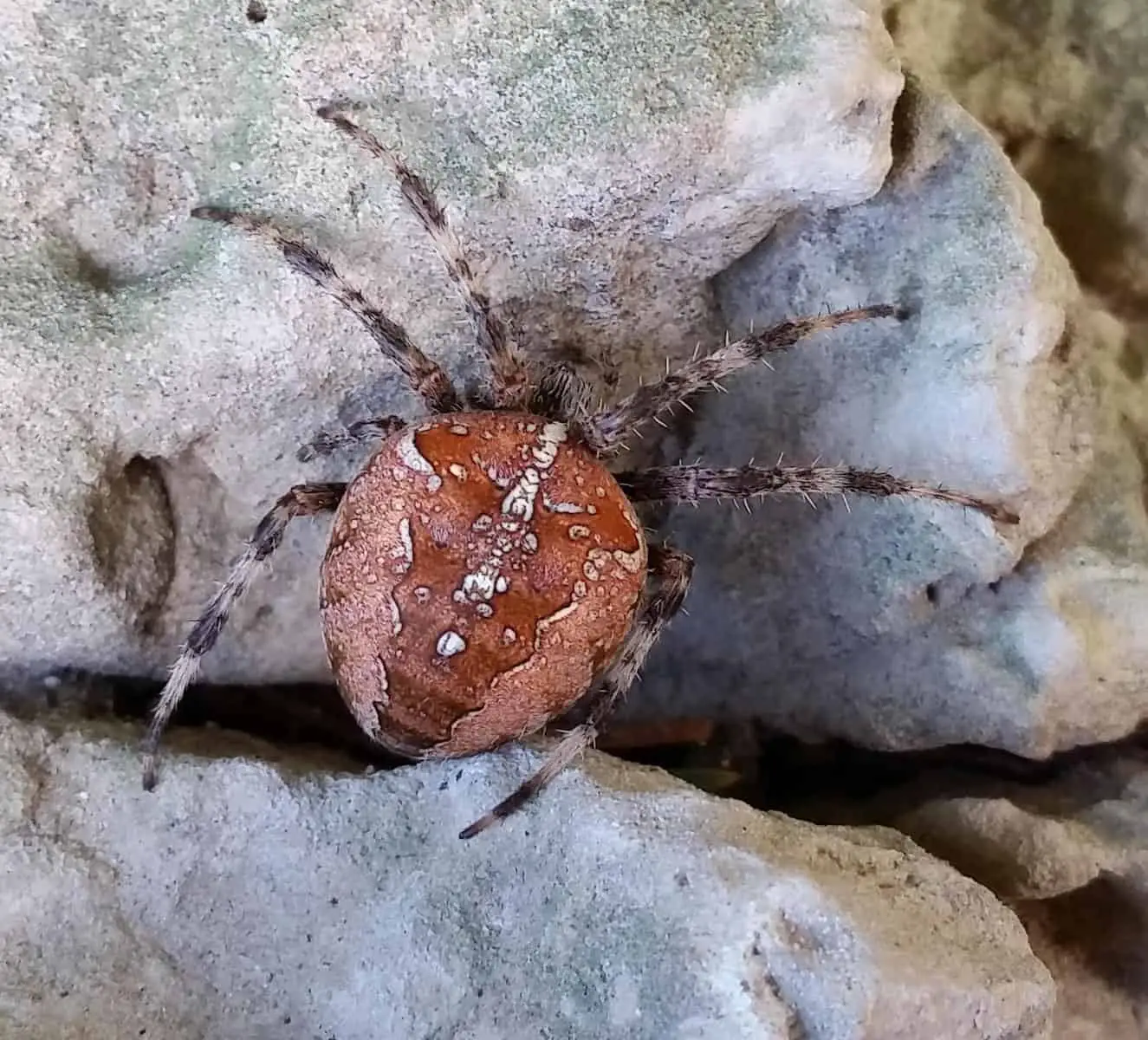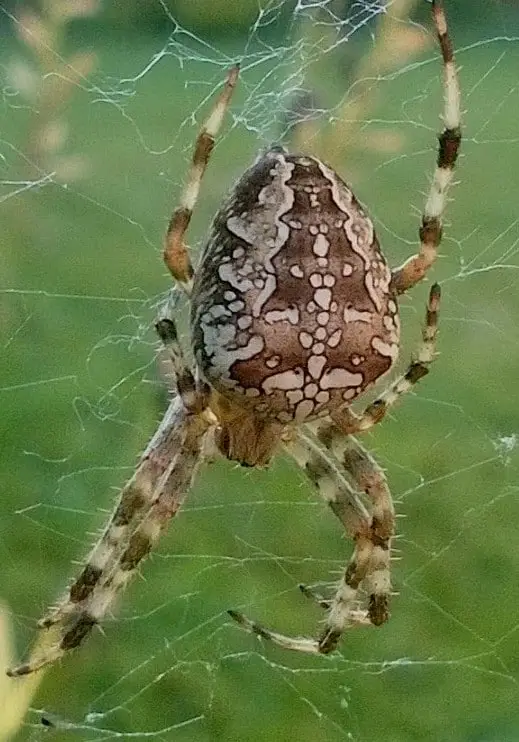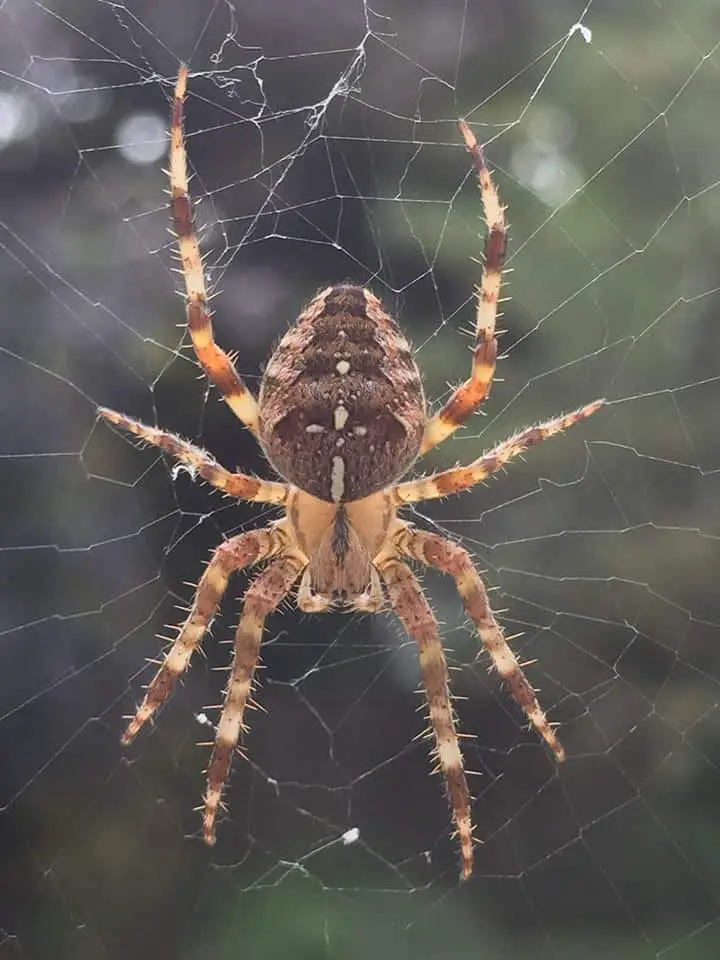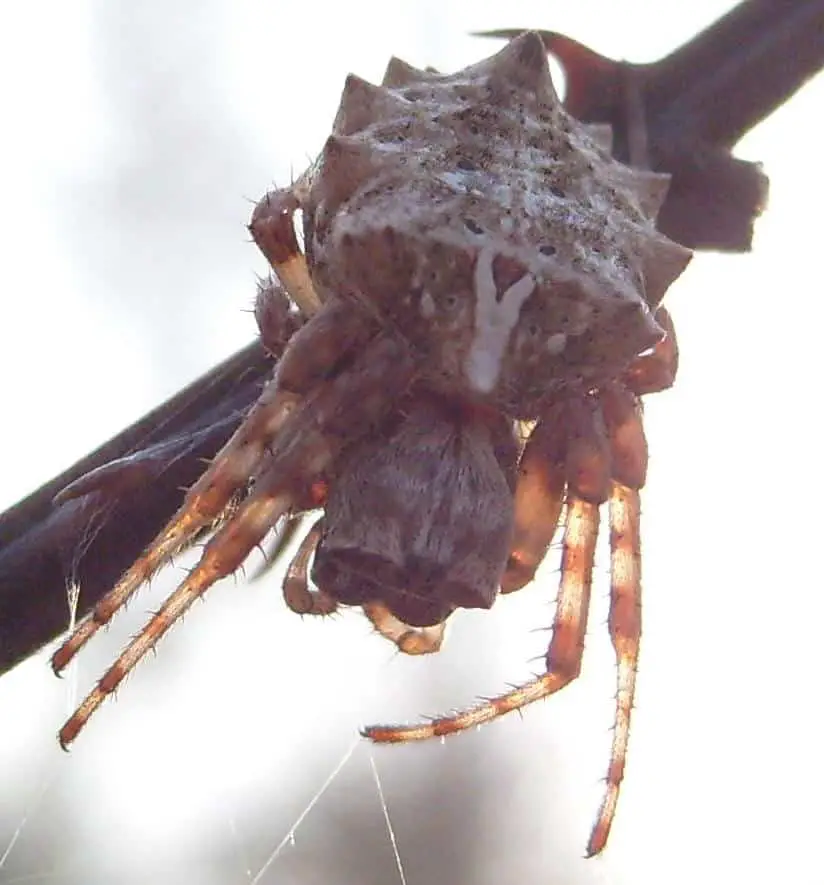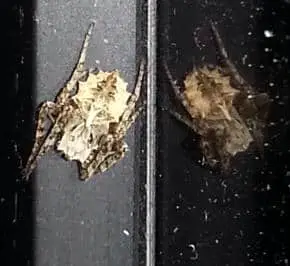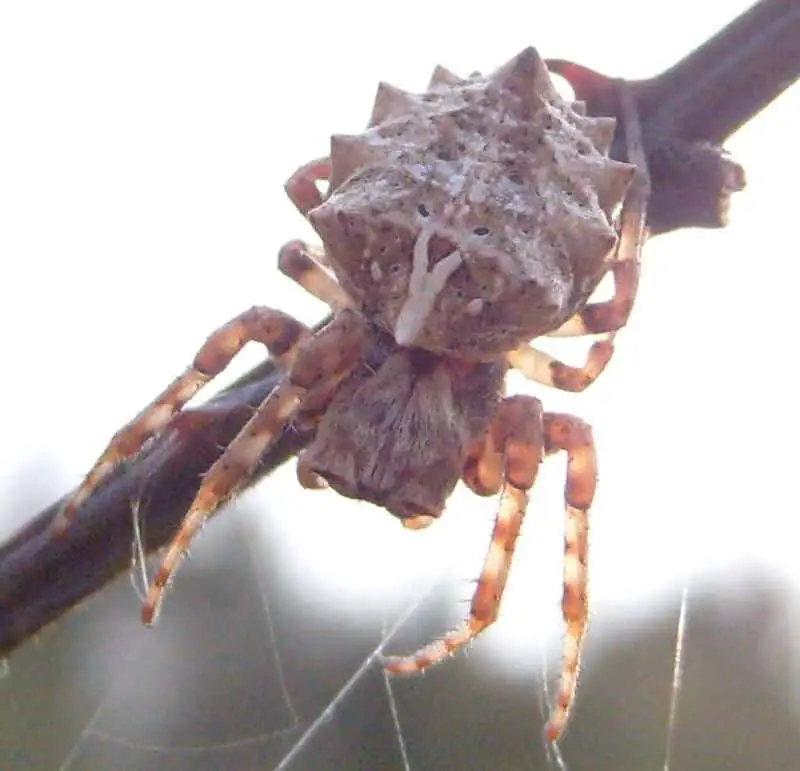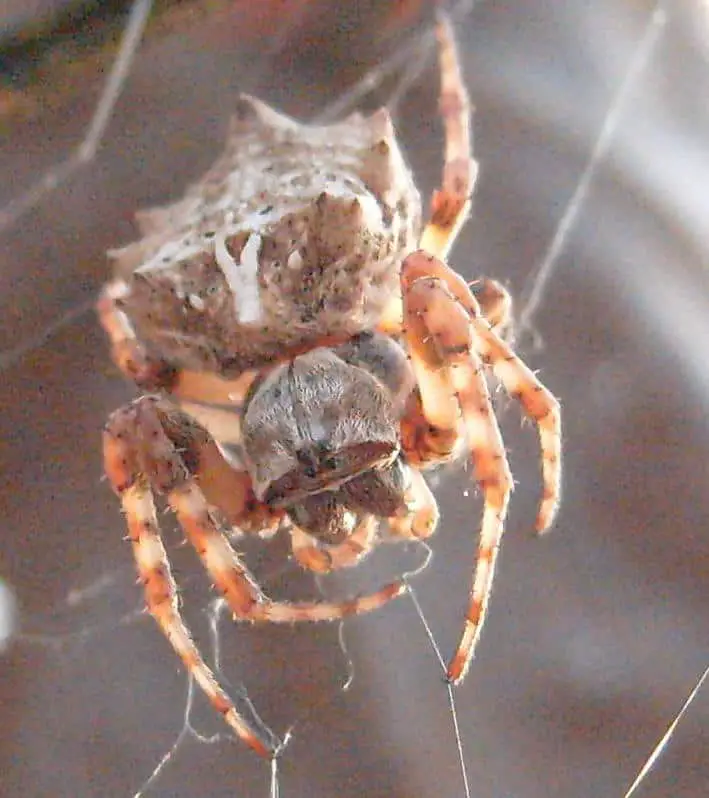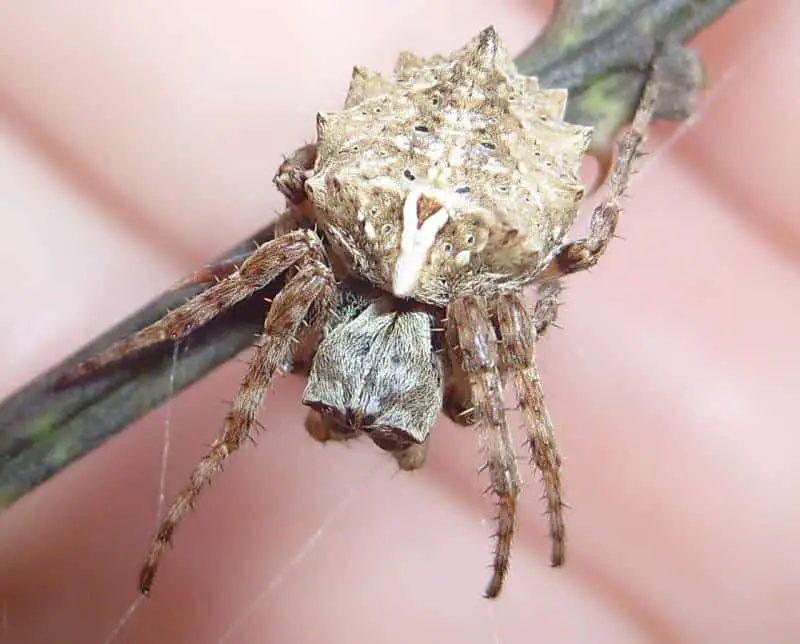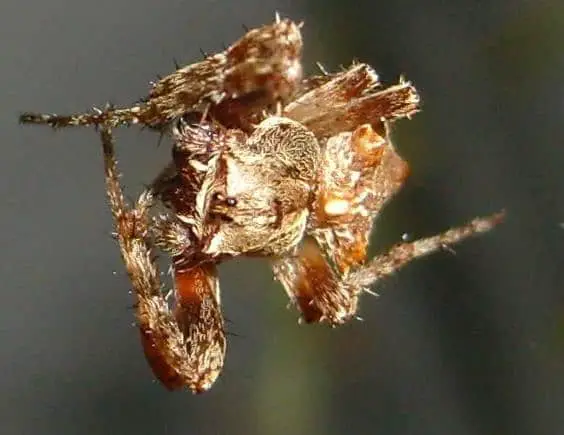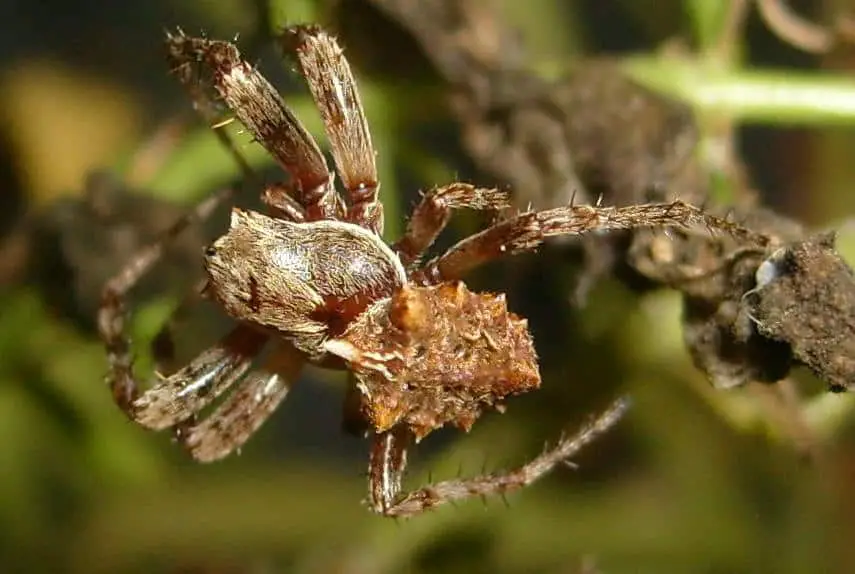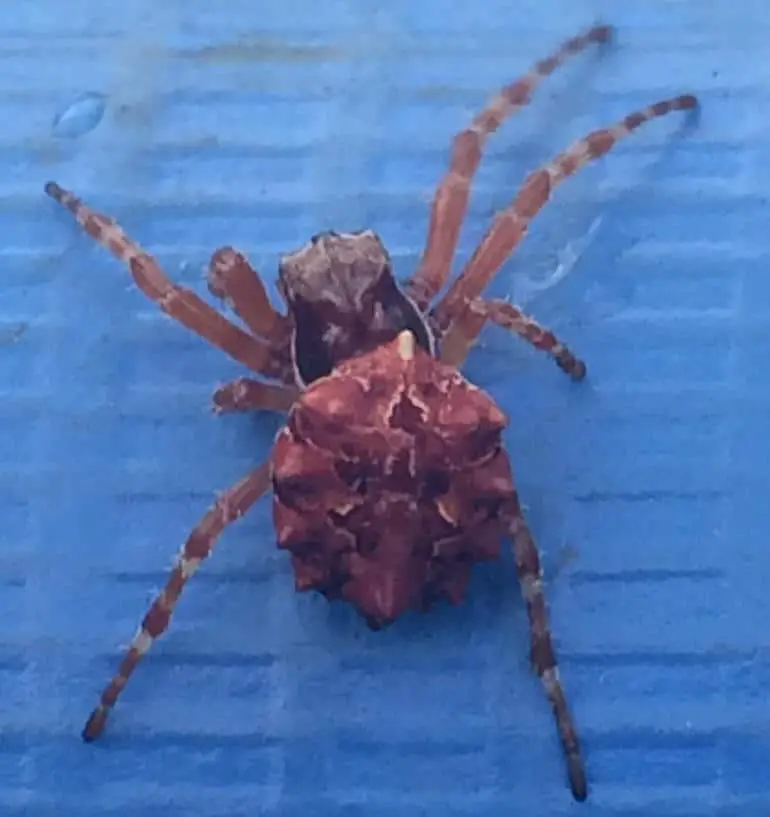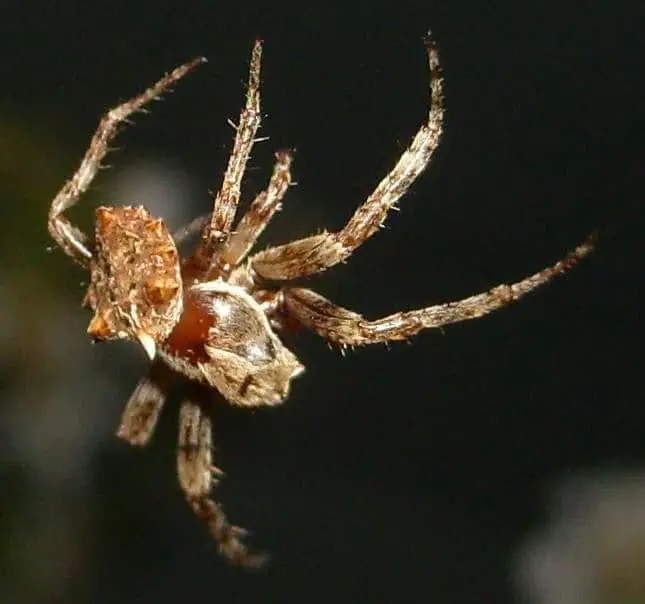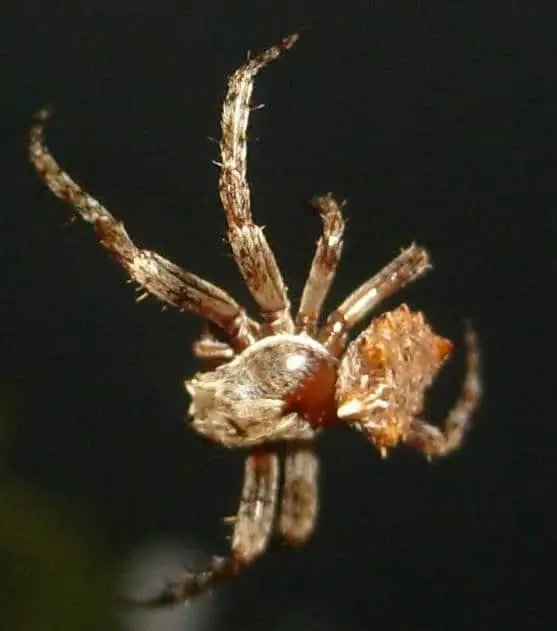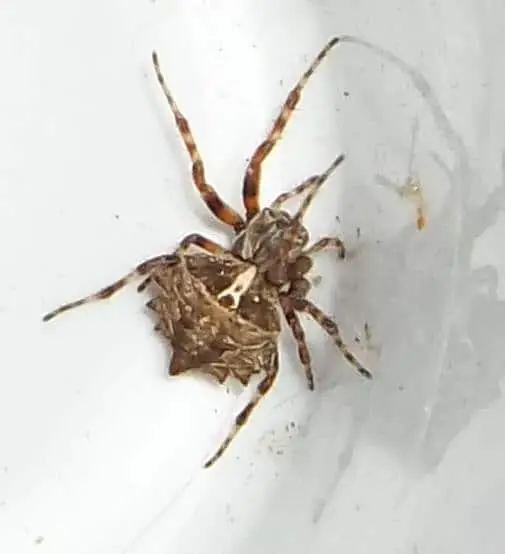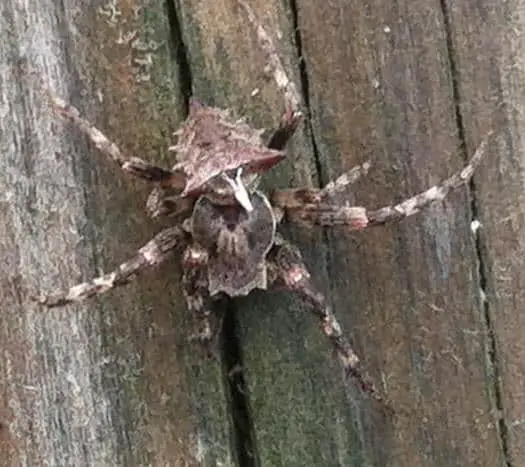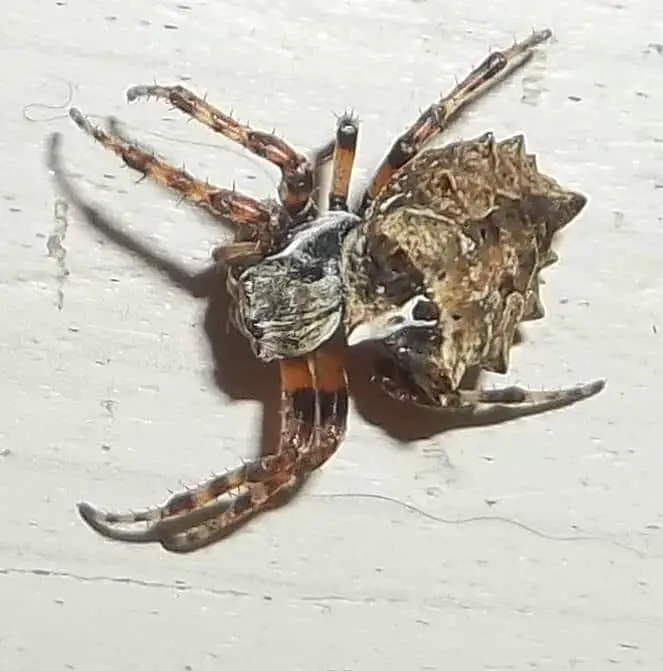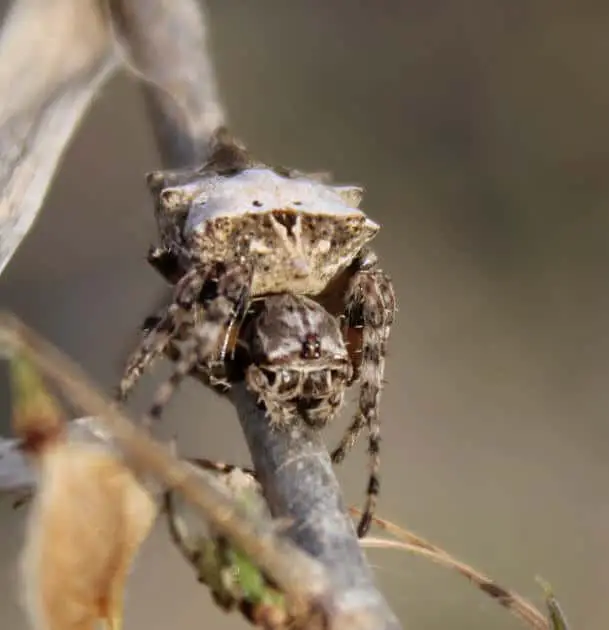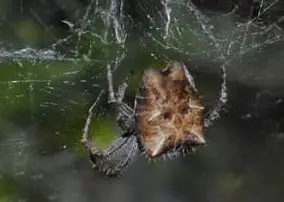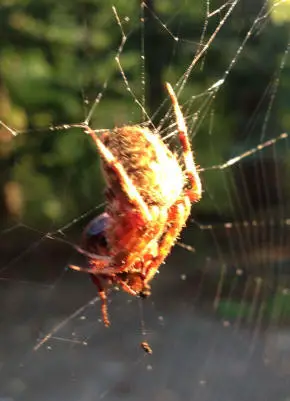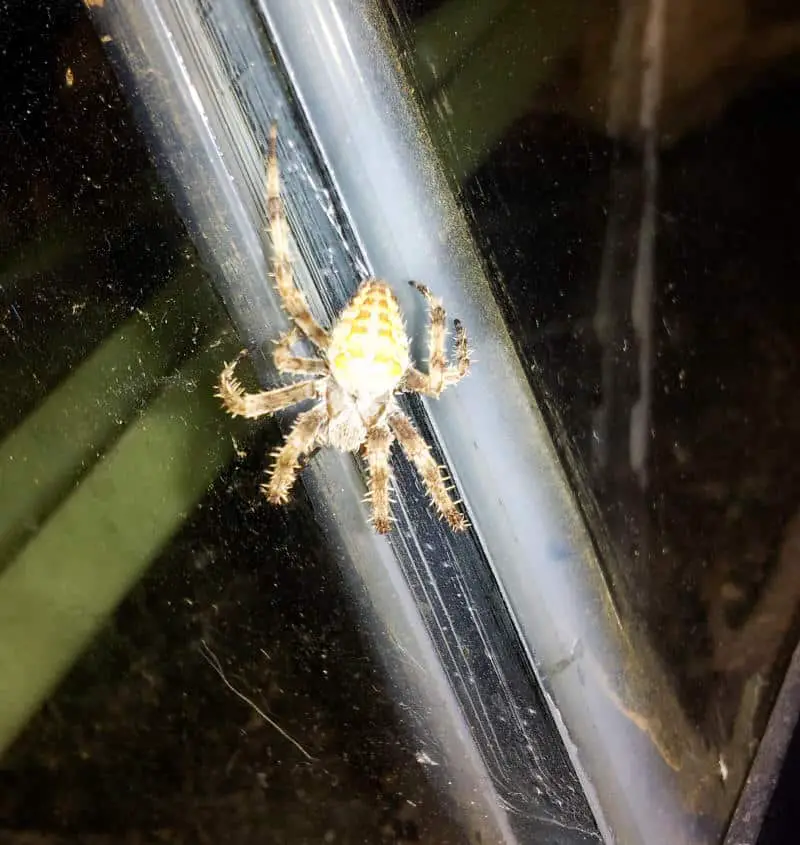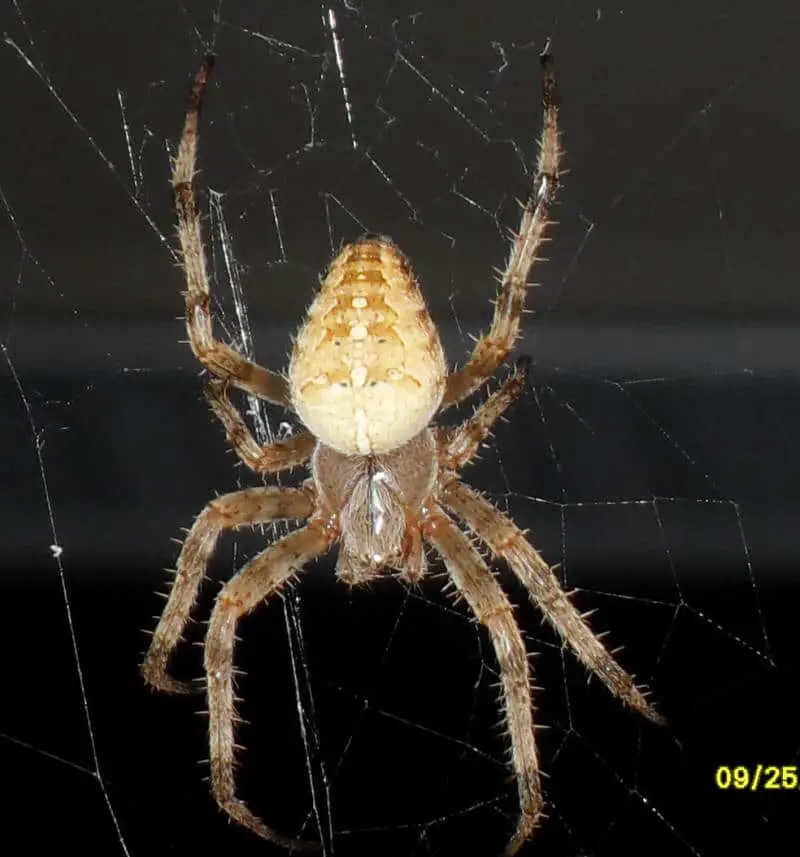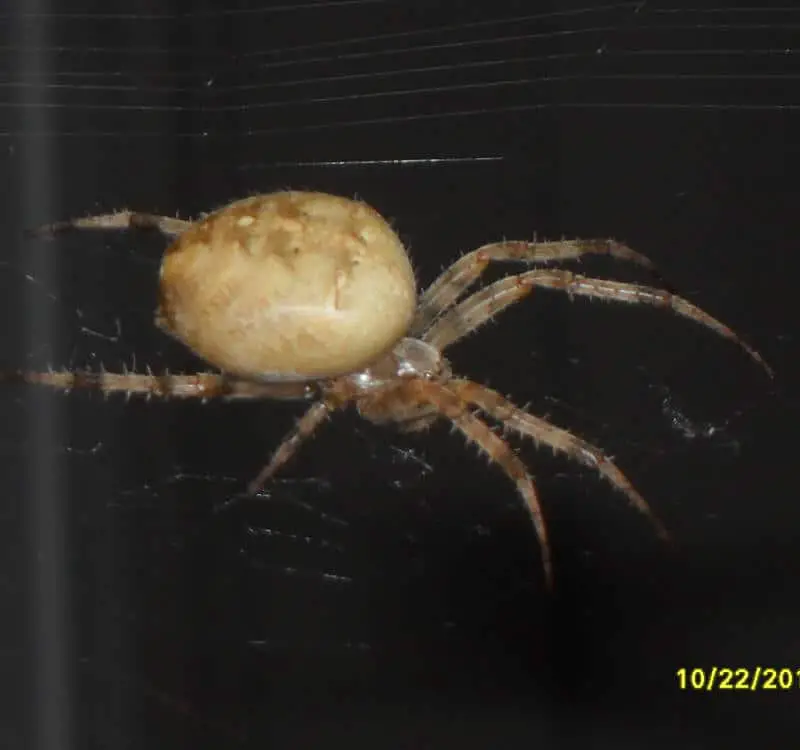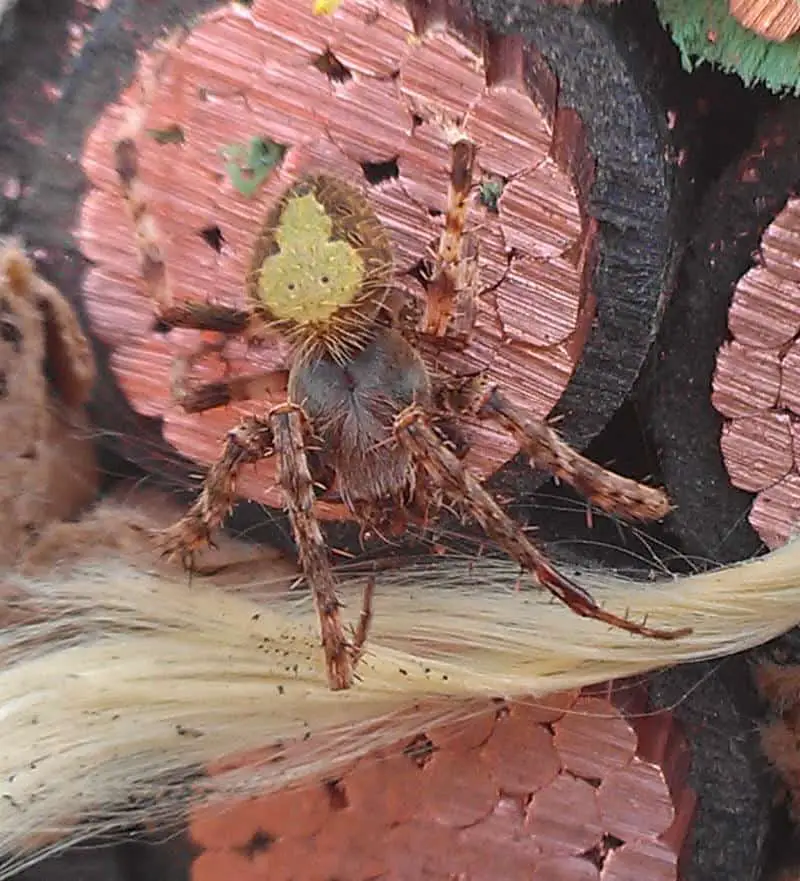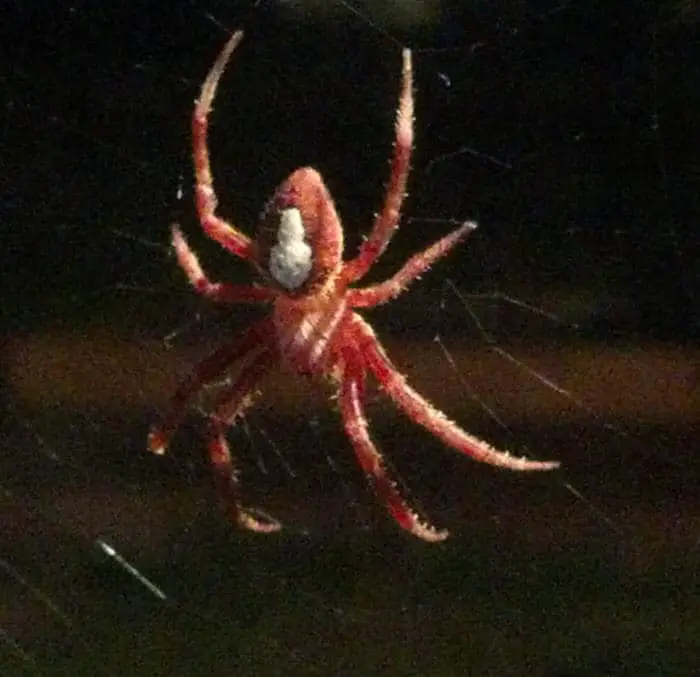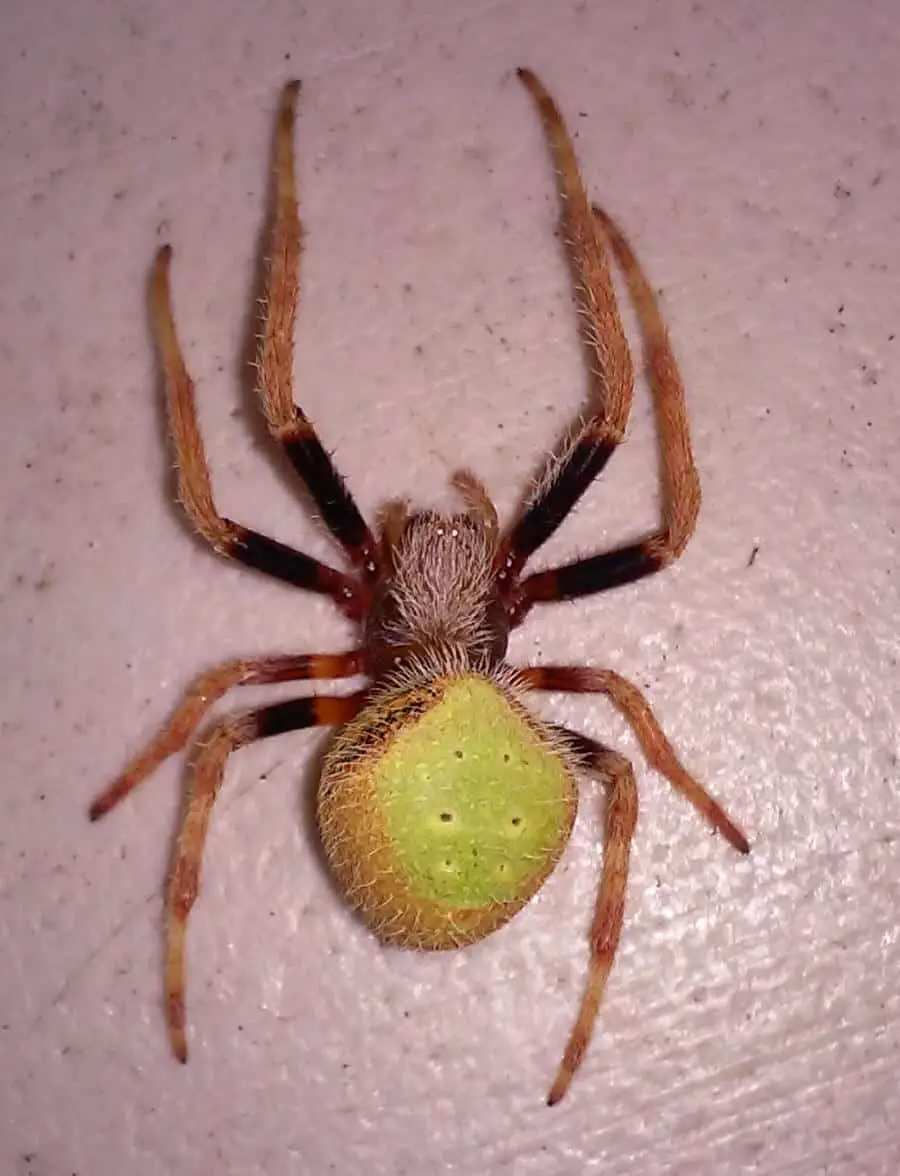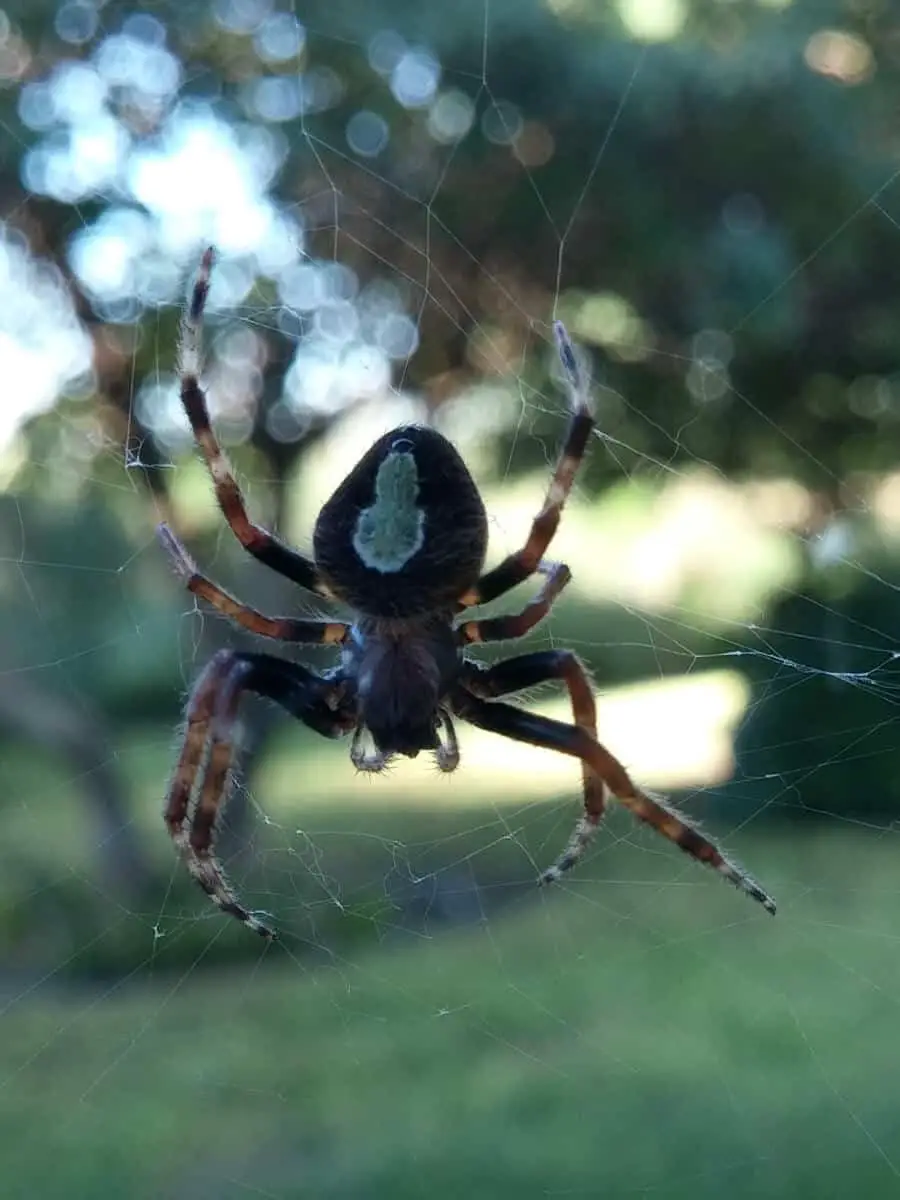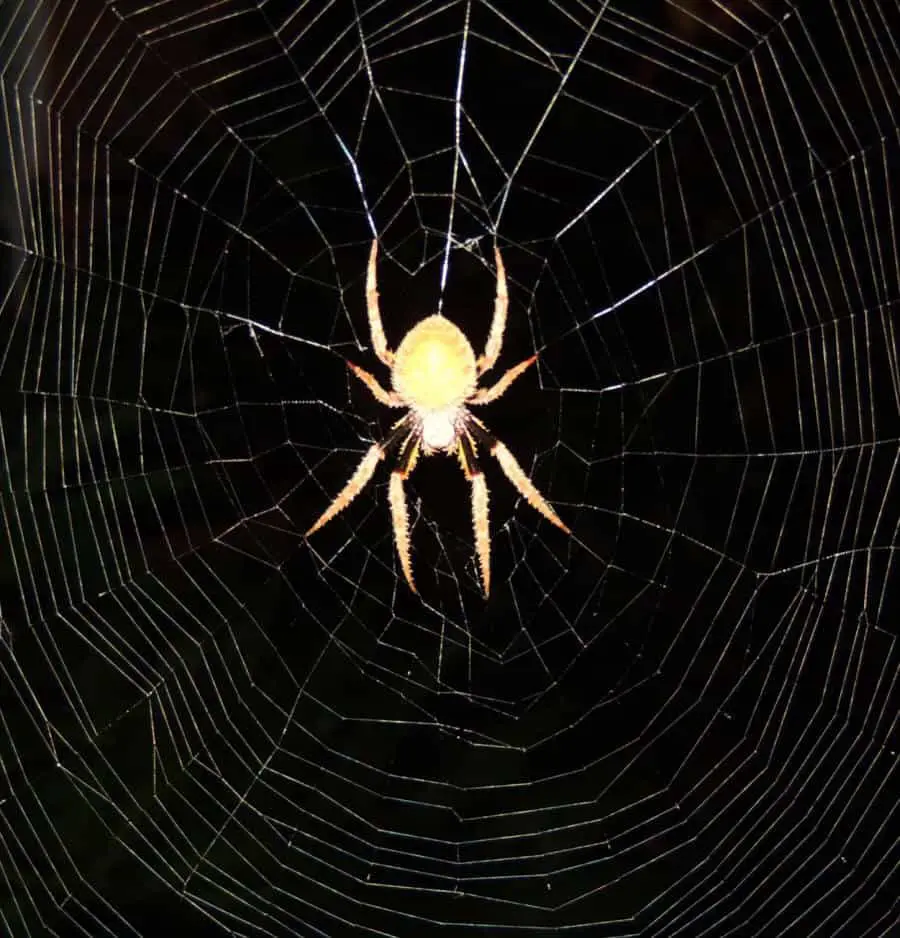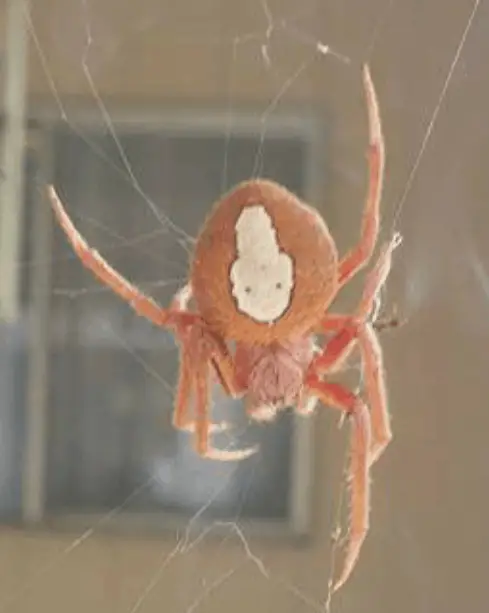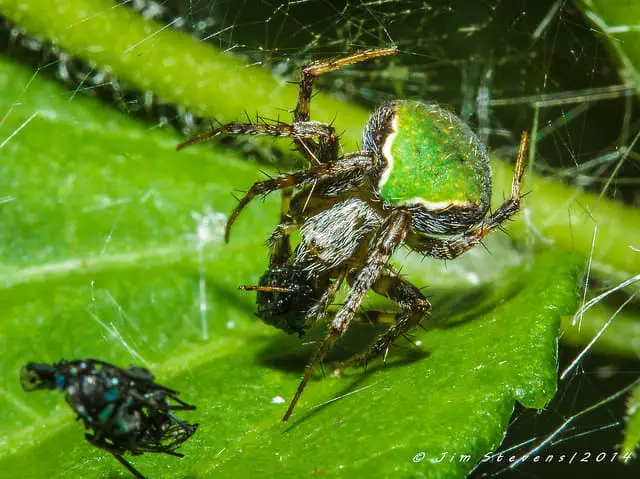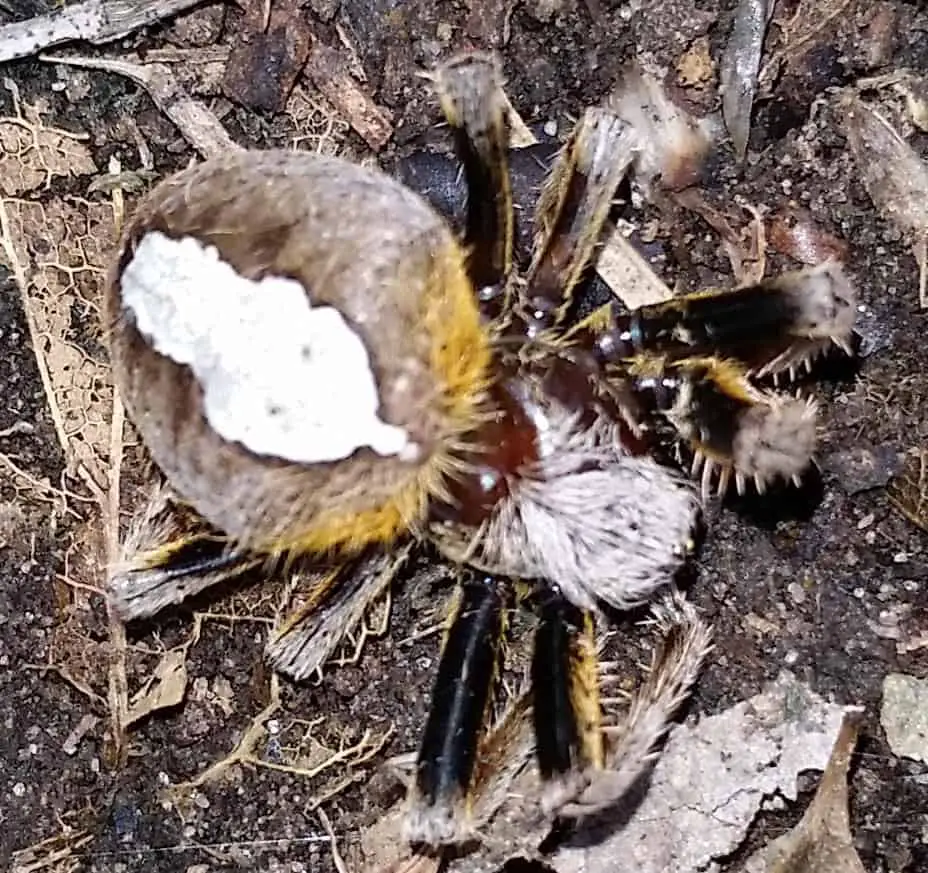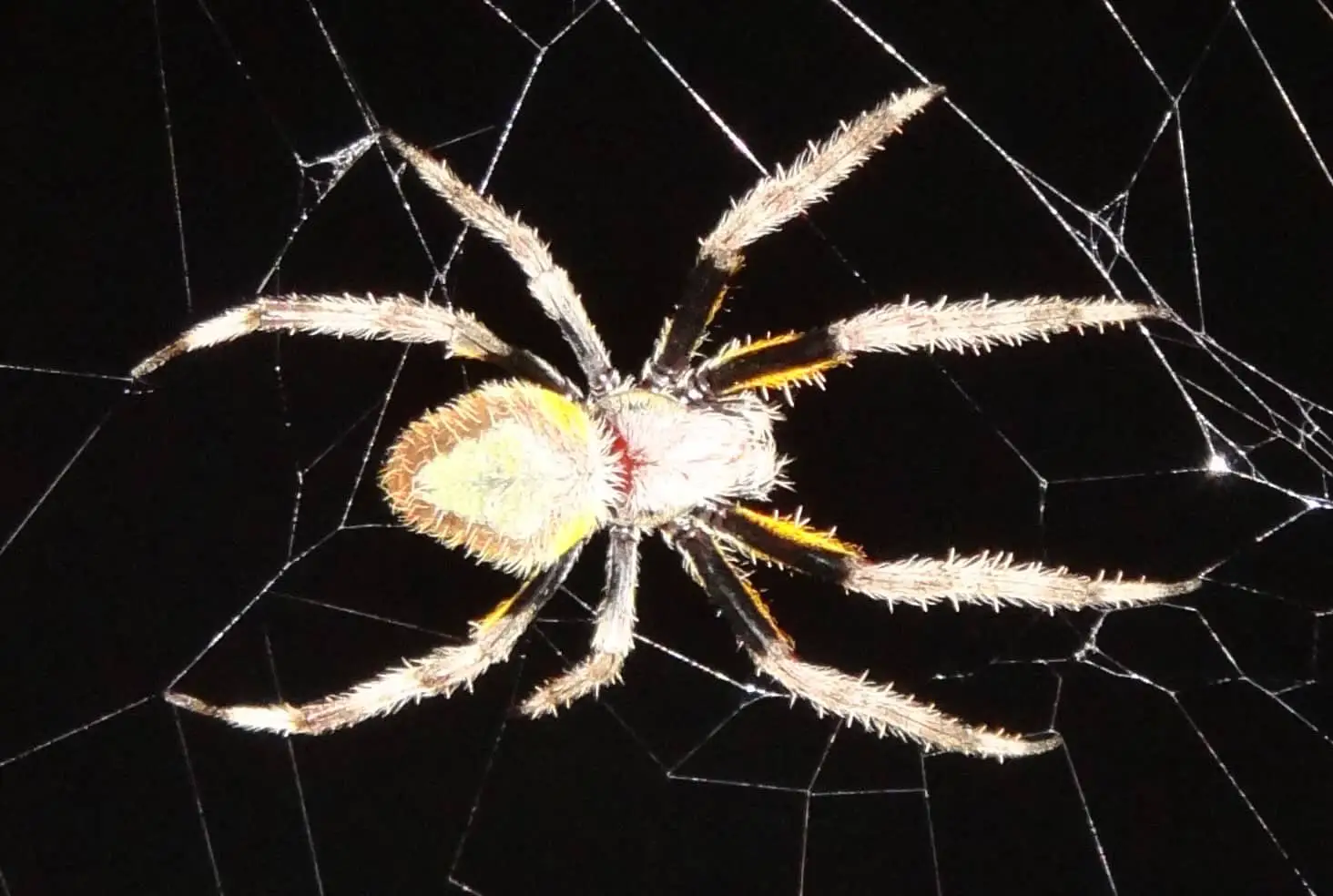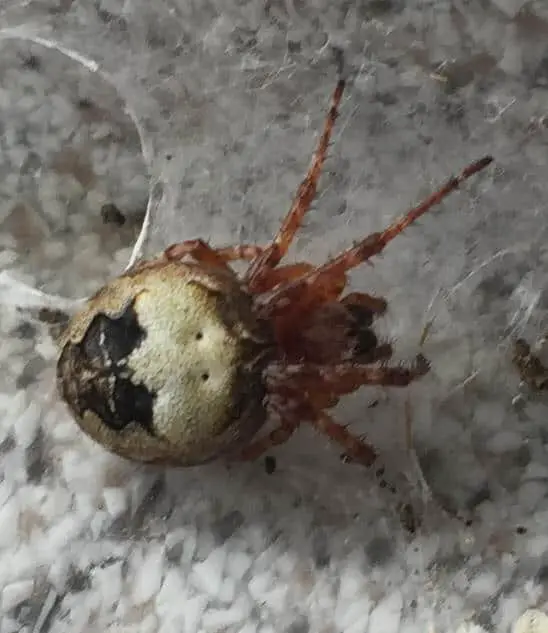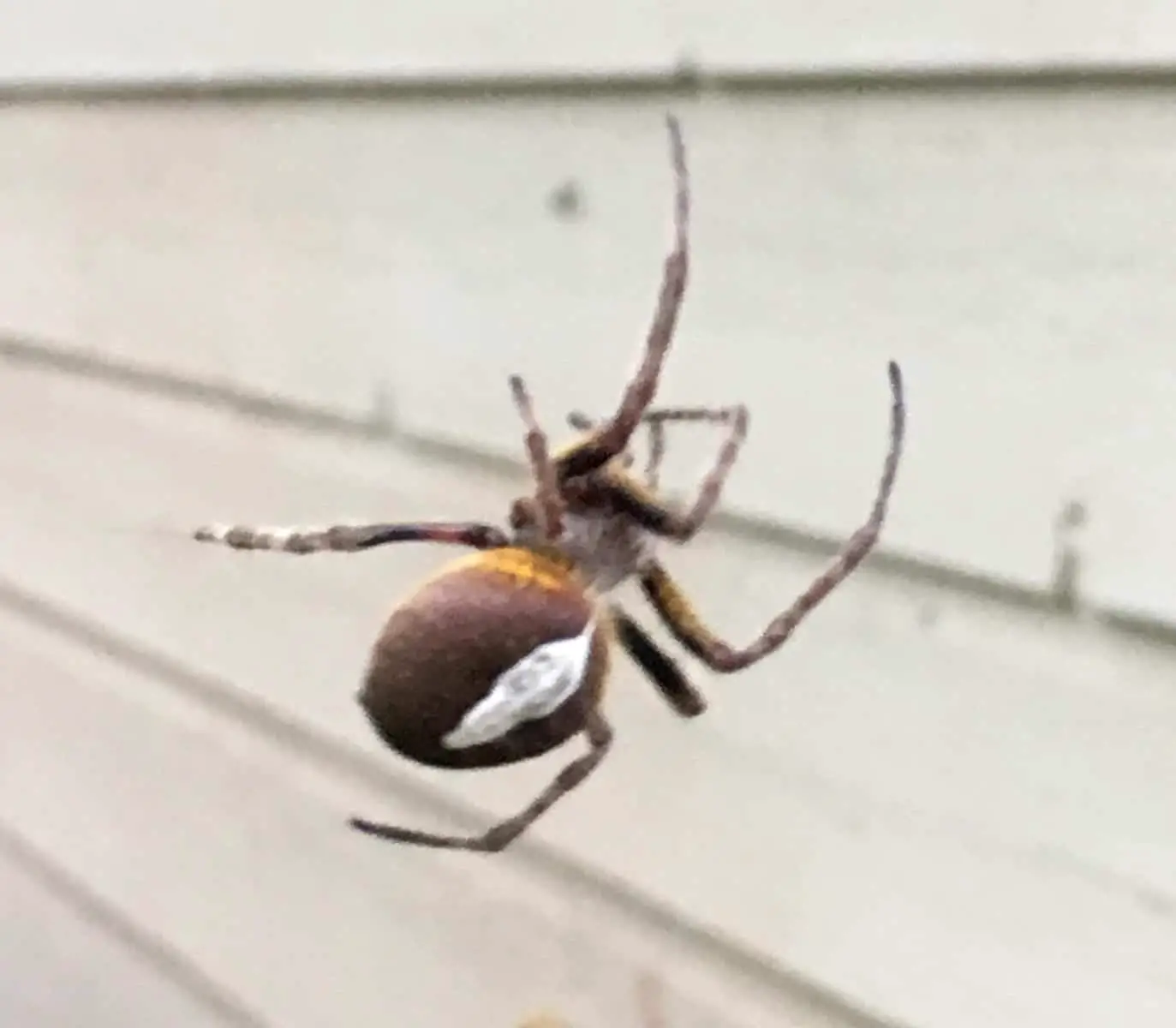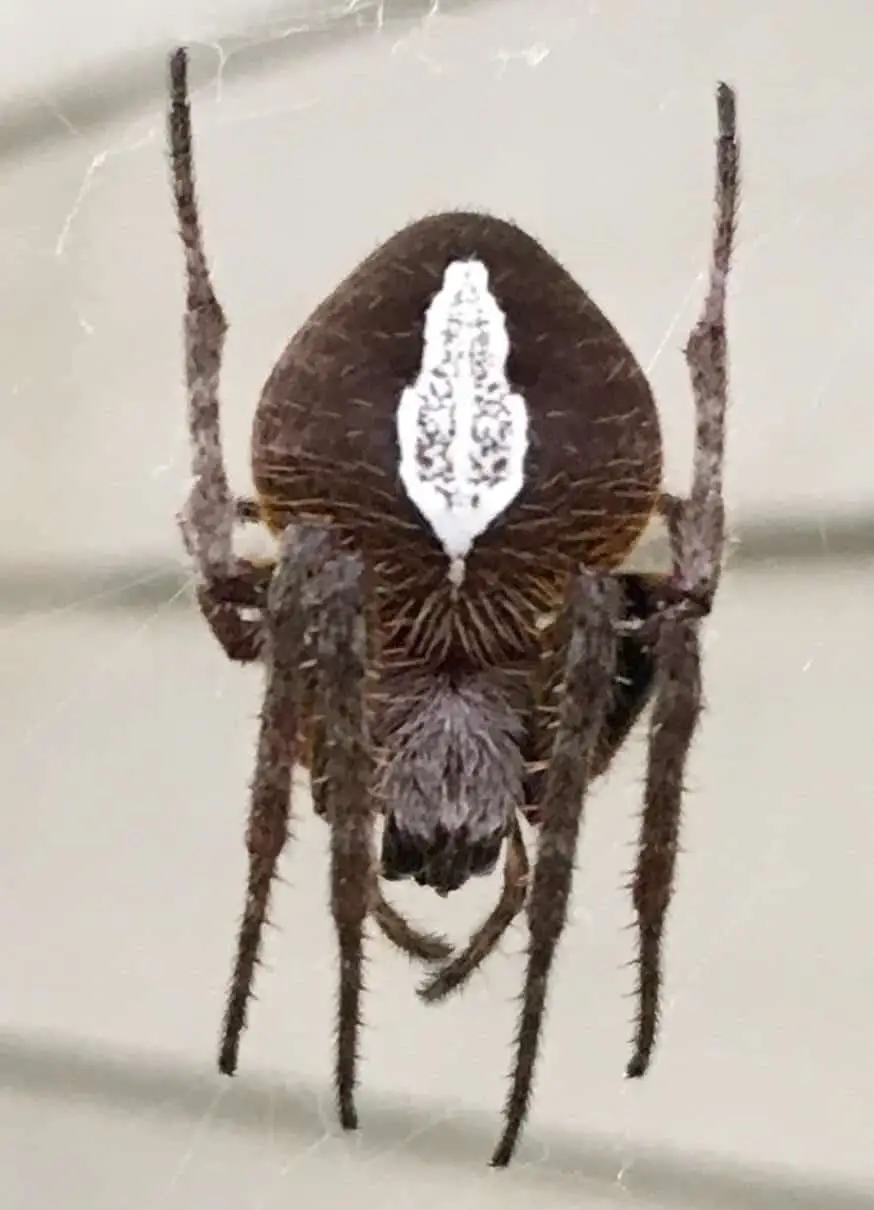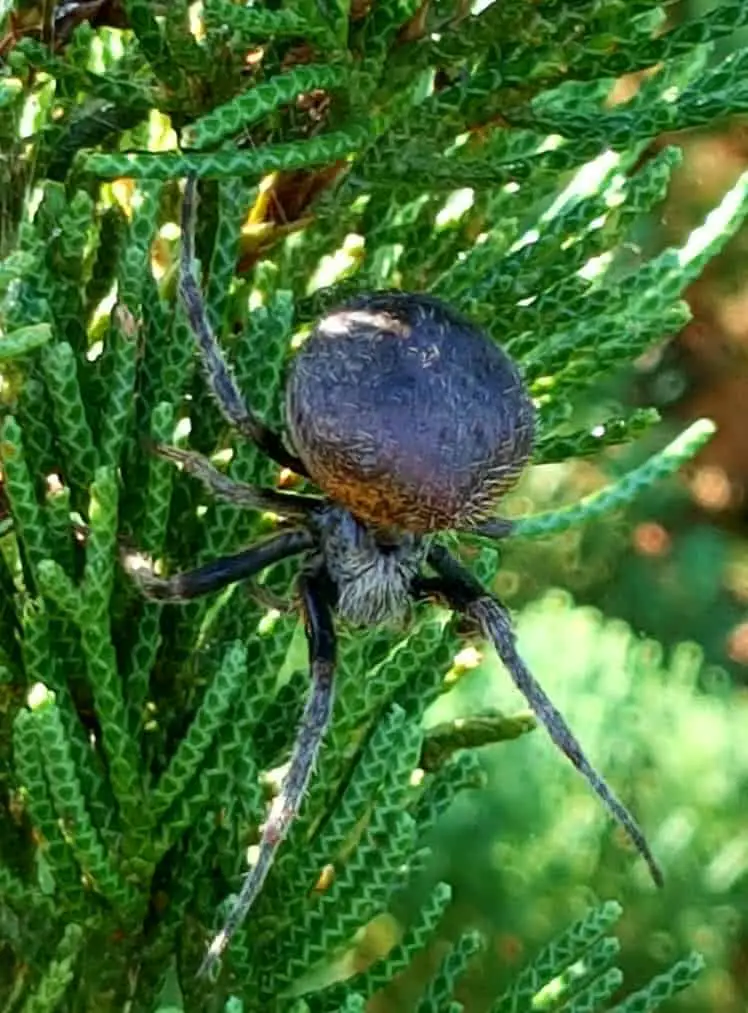Here’s some photos of those common Garden spiders from the Orb Weaving family. My apologies if there are some Araneus on pages where they don’t belong but they are very hard to classify.
Try this page for a species guide: https://usaspiders.com/orb-weaver/ or this one: http://bugguide.net/node/view/1972/bgpage
Orb weavers (Araneidae) are often brightly coloured with rounded abdomens, some with peculiarly angled humps or spines. However, there is considerable variation in size, colour and shape in this group. They are easily recognized because of their beautiful, large, round webs, on which they rest, head downward, waiting for prey. The webs consist of a number of radiating threads crossed by two spirals. The inner spiral begins in the centre, winds outward, and is made of smooth threads like the radiating threads. It covers only the central 1/3 of the web. The outer spiral begins at the edges and winds inward. It is made of more elastic, sticky threads, coated with a liquid substance.
One of the largest and most commonly encountered members of this group is Argiope aurantia, the yellow garden spider and we have photos of them on their own page. Garden Orb Weavers are NOT dangerous (but can bite as can most spiders) and rid your garden of many unwanted insects. They only live for one season and die off as Winter approaches, leaving their egg sacs behind to hatch out next Spring.
There are many varieties of orb weaving spiders and I have only included some of them on these pages.
Because of the large number of species, I have only included a few of the best photos. All photos are copyright to their owners and may not be reproduced without permission. Click the name to go to that section.
Table of Contents
Garden Orb Weavers
Triangulate Orb Weavers
This species is sometimes called the “arrowhead spider.” The genus name, Verrucosa, means “warty” and refers to the small wartlike bumps on the abdomen. This is the only species of Verrucosa in the United States. They are members of the garden orb weaver family (araneus). On females, the carapace (head) is glossy chocolate brown and small compared to the similarly colored, triangular abdomen. A triangle of colour almost completely covers the top of the abdomen, with the bottom angle pointing away from the spider’s head; this triangle resembles a white, pink, or yellow flattened drop of shiny glue. This species rests centered in its web head-up instead of head-down, and the legs are often folded up against the body. Males are smaller and don’t look very much like the females, as they lack the characteristic triangle on the abdomen. Males are rarely seen unless they are in a female’s web either courting or mating with her. As a general rule, spiderlings hatch from eggs in spring and spend the growing season eating, maturing, mating, and laying eggs. Females are capable of creating webs; males are not. Females continue creating egg cases as long as the weather holds out. As temperatures cool in fall, their metabolism slows, and they generally die when it freezes. Egg cases overwinter, and spiderlings hatch in spring.
Shamrock Orb Weavers
Shamrock or Pumpkin Spiders as they are called in different places scientific name is Araneus trifolium. A. trifolium is a spider which builds an orb-web and is classified in a group of spiders called orb-weaver spider. Colour is a characteristic that may help to identify a spider. A. trifolium is orange (though it may show up in a yellowish green or purplish form). Its large, bulbous abdomen is similar to a pumpkin. Measuring a spider’s length also helps in its identification. A. trifolium is large, compared to other spiders. Size is an important way of distinguishing one spider from another. The abdomen also contains the stomach or crop. In the fall the abdomen and the entire spider grows quickly. The high vegetation the spider prefers produces an abundance of insect food; and in the fall there is a growth spurt when food is most plentiful. This sudden increase in size may be cause for the spider’s “sudden” appearance. In fact, the spiders have been present all-year, but were much smaller and simply less noticeable. The spider tends to show up around Halloween – and that is how it got its common name “Pumpkin Spider.”
Marbled Orb Weavers
Commonly called the marbled spider, Araneus marmoreus belongs to one of several genera of orb or orb weaver spiders that frequently are found as adults on or around houses and other buildings from late summer to fall. Adult female marbled spiders are 9-18mm long; some other orb spiders are smaller and some larger. Most species live one year, but some survive longer. Orb spiders are not aggressive and, like the vast majority of spiders, are not dangerous to people. Bites are rare and usually are no worse than a bee or wasp sting. As they age in Fall, many marbled orb weavers change colour from bright yellow to orange, reminiscent of a pumpkin’s colour and so are also called pumpkin spiders because of their colour and the fact that it is often around Halloween!!
Giant Lichen Orb Weavers
Araneus bicentenarius, the giant lichen orbweaver, is a species of orb weaver in the family Araneidae. It is found in the USA and Canada. Ihis species gets its common name from the greenish colour of its abdomen which resembles lichen or moss. Like most orb weavers, they are harmless to humans.
Cat Face Orb Weavers
Araneus gemmoides, commonly known as the Jewel Spider (a name shared with Austracantha minax) and Cat-faced Spider (a name shared with Araneus gemma), is a common outdoor orb-weaver spider found in the USA and Canada. They are considered harmless and have low-toxicity venom. A. gemmoides are useful natural predators for insects. A. gemmoides make their webs near lights, closed spaces, and on the sides of buildings. They can also be found under wood, overhangs, or guarded places such as animal burrows. They come in varying colours but are easily identified by the two horn shaped growths on their relatively large abdomen. Their colour changes from summer to winter. The female will die within days of laying a single egg sac with hundreds of eggs. Egg sacs can overwinter, and the emerging spiderlings will eat their brothers and sisters. The babies ride strands of silk in warm air currents, able to transport them to locations miles away.
Araneus Alsine-like/Araneus Iviei/ Araneus Nordmanni
The strawberry spider or orange wheelweaving spider (Araneus alsine) is a species of the orb-weaving spider (Araneidae) family. Araneus alsine can reach a body length of 6.5–8.5 millimetres (0.26–0.33 in) in males, of 12–14.9 millimetres (0.47–0.59 in) in females. These spiders have a large, almost globular or slightly elliptical shaped opisthosoma, ranging from beige to reddish-orange, with many white-and-yellow spots spread over the surface and sometimes forming the sign of a cross. Sternum, chelicerae and legs are reddish brown. Legs show darker annulations in males.
As one of its common names suggests, A. alsine appears somewhat like a strawberry. Below the first 2 photos are of Araneus Alsin-like and the next 3 are of Araneus Iviei and the second 5 pretty green ones with the yellow pattern are Araneus Nordmanni. Araneus nordmanni is a species of orb weaver in the family of spiders known as Araneidae. It is found in North America, Europe, Caucasus, a range from Russia to Kazakhstan, Korea, and Japan. I haven’t had too many photos of these spiders sent in over the years.
Araneus Cingulatus
Araneus cingulatus is a species of orb weaver in the family of spiders known as Araneidae. It is found in the United States.
Green Orb Weaver
Below are a variety of Green Orb Weavers. These are not all the same species but are all green so have put them on this page. One below is Eriophora circulissparsus – pale green / yellow orb-web spider that is seldom noticed as it is a nocturnal spider. During the day it is well camouflaged against leaf surfaces. Males are 3-4 mm and females 5-7 mm.
Araneus Diadematus
Araneus diadematus is one of the most common and best known orb weavers. It is found in Europe and parts of North America in a range extending from New England and the Southeast to the North western United States and adjacent parts of Canada. It is easily identified by the distinctive white cross on the abdomen (although in some specimens it is indistinct or missing). In England, this spider is most commonly called the ‘garden spider’ and it is also known as the cross spider. They are common in woodlands, heath lands and gardens. The females build circular orb webs and can be found either sitting at the centre of the web with facing down or in a retreat at the end of a signal line a short distance from the web itself.
The prey is then quickly captured and wrapped in silk before being eaten. Orb Spiders are said to eat their webs each night along with many of the small insects stuck to it. They have been observed doing this within a couple of minutes. A new web is then spun in the morning. Since this tends to be a passive animal, it is difficult to be provoked to bite – but if it does, the bite is just slightly unpleasant and completely harmless to humans. The much smaller male will approach the female cautiously in order to mate. If not careful, he could end up being eaten by her.
This spider is mature from summer to autumn and is usually at its largest in late Autumn when it is at its oldest and often full of eggs. After laying their eggs the females die and only the eggs and the spiders that hatched in spring that year will survive over winter.
Star Bellied Orb Weavers
Acanthepeira stellata, known generally as the starbellied orbweaver or starbellied spider, is a species of orb weaver in the family of spiders known as Araneidae. It is found in a range from Canada to Mexico.
Arabesque Orb Weavers
Neoscona arabesca is a common orb-weaver spider found throughout North America. Often called the “arabesque orbweaver,” after the cryptic, brightly colored, swirling markings on its prominent abdomen, this spider can be found in fields, forests, gardens, and on human structures. Neoscona species are among the most common and abundant orb weavers and are found on all continents. Females range in size from 5–7 mm (0.20–0.28 in) and males 5–6 mm (0.20–0.24 in). N. arabesca females build a vertical web measuring 15–45 cm (5.9–17.7 in) in diameter, with 18-20 radii. The hub is open and crossed by only one or two threads. At night, the female rests in the center of the orb with the tip of her abdomen pushed through the open space. During the daytime, she hides in a retreat away from the web, usually inside a curled-and-tied leaf. Male N. arabesca can often be found in nearby foliage or hunting on the ground.
Tropical Orb Weavers
Tropical Orb Weavers, Eriophora, are a group of orb weavers found in tropical areas of the world, and therefore given the name tropical orbweavers to distinguish them from other species in the Araneidae family. Eriophora ravilla and Eriophora edax are the only documented species found in the United States. E. Ravilla lives along the Gulf Coast states, with a large presence in Florida and the Lower Rio Grande Valley of Texas.
E. edax has a smaller presence in the Lower Rio Grande Valley and the southern areas of Arizona and California. Both species are described as having a pointed abdomen (with various colors) and banded legs. Specimens range from those with a green patch on the abdomen which are usually E. Ravilla to all reddish specimens that highlights the pointed redish-brown abdomen with white hairs and banded legs. The identification of Eriophora is tentative. Eriophora species tend to be night hunters, building their webs at night and retreating to rest on leafs during the day. Their webs are fairly sturdy and a Eriophora fulitgine has been photographed with a web that trapped a bat.

